Canaux
108413 éléments (108413 non lus) dans 10 canaux
 Actualités
(48730 non lus)
Actualités
(48730 non lus)
 Hoax
(65 non lus)
Hoax
(65 non lus)
 Logiciels
(39066 non lus)
Logiciels
(39066 non lus)
 Sécurité
(1668 non lus)
Sécurité
(1668 non lus)
 Referencement
(18884 non lus)
Referencement
(18884 non lus)
éléments par Darren Allan
BetaNews.Com
-

When artificial intelligence goes bad: Reddit made 'Norman' a psychopathic AI
Publié: juin 7, 2018, 3:48pm CEST par Darren Allan
AI is, of course, one of the latest big buzzwords in the tech industry, but here’s something new: Norman, the world’s first "psychopathic" artificial intelligence, as concocted by researchers at MIT. So, you might wonder, how do you make a psychopath in the world of machine learning? Simple -- you pack the AI in question off for a vacation on Reddit. Or the "darkest corners" of Reddit, as the MIT researchers put it. Norman -- who is, obviously enough, named after the character from the film (and more recently the TV series) Psycho -- is really an exercise in how an… [Continue Reading] -

Oracle and Intel going after IBM Power Systems users
Publié: octobre 27, 2015, 8:42pm CET par Darren Allan
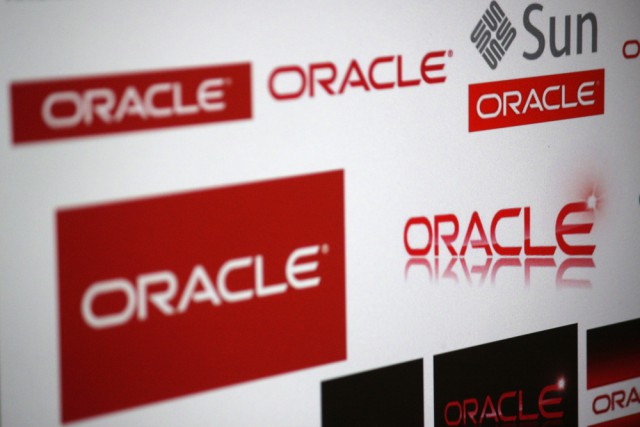
Oracle and Intel are partnering up in a bid to tempt customers away from what the companies describe as aging IBM Power systems.
The new scheme, jointly funded by Oracle and Intel, goes by the name of "Exa Your Power", and wants to see IBM Power customers migrate their Oracle Database across to Oracle Engineered Systems driven by Intel Xeon processors.
The firm said that its Oracle Exadata was built from the ground up to fully optimize the performance and cost efficiency of running Oracle, and thousands of customers have already shifted their databases across to Oracle Engineered Systems.
If you are a qualified customer, the Exa Your Power program offers a completely free database migration proof of concept, with a customized report detailing the process and test results, showing how the transition could reduce costs and boost efficiency.
Ashish Mahadwar, executive vice president and general manager, Emerging Business Group, CSC, commented: "CSC has successfully migrated dozens of customers’ enterprise workloads to Oracle Engineered Systems as a part of our Digital Transformation Services. We recently migrated an Oracle Database for a major insurance provider from IBM Power 7 to an Exadata X5 engineered system as a Proof of Concept".
"Our test results showed their Siebel Application running four-to-ten times faster and their ETL Processes running up to 12-times faster on the Exadata. The customer was very impressed by the scale of the benefits and the ease of migration and is now working with CSC on a major Exadata deployment".
Karen Sigman, vice president, Oracle Platform Business, added: "Working together with Intel and our partners, we have helped thousands of enterprises quickly and easily move their Oracle database from their legacy systems to Oracle Engineered Systems. This is an extension of our partnership focused on helping our customers achieve better performance, lower costs and better security".
Published under license from ITProPortal.com, a Net Communities Ltd Publication. All rights reserved.
Photo Credit: 360b/Shutterstock
-

Number of data breaches prove businesses are over-confident about security
Publié: octobre 23, 2015, 8:17pm CEST par Darren Allan

A new piece of research has raised further worries about data breaches, and specifically, the perception gap between the number of businesses who believe they’ve experienced a breach, and the actual numbers of data breaches occurring.
The research in question is the new Breach Confidence Index from Ilex International, an identity and access management company, which is based on a survey by YouGov that questioned just over 500 IT decision-makers in the UK.
It found a rather misplaced high level of confidence regarding breaches, with 24 percent of those questioned saying they were very confident their organization is protected against a possible breach, and a whopping 59 percent saying they were fairly confident.
In other words, there’s a good level of confidence from 84 percent of businesses in terms of their defenses, which obviously isn’t a realistic figure given the amount of breaches that occur.
Of course, as Ilex pointed out, some firms may not even realize they’ve been the victim of a hack. Half of respondents -- 49 per cent -- said their organization hasn’t been hit by a security breach, yet when you compare that to the actual statistics there is a major disconnect.
The IT decision-makers surveyed were also asked what the most common weaknesses were that resulted in a security breach, and the foremost issue was, unsurprisingly, malware vulnerabilities which were responsible for 22 percent of breaches.
Email security was only just behind that, though, on 21 percent, with employee education (i.e. bad practices or user error from staff) in third place at 15 percent.
Cloud apps were next at 12 percent, also tied with insider threats (malicious actions from staff) on the same percentage.
Thierry Bettini, director of International Strategy at Ilex, commented: "It’s important that businesses come to terms with the reality of data security breaches. If they don’t think they have been targeted yet, they will be and need to be prepared. As technology evolves and brings new security risks, businesses should be doing all they can to educate employees on security best practices and tighten access to sensitive data".
Published under license from ITProPortal.com, a Net Communities Ltd Publication. All rights reserved.
Image Credit: Sergey Nivens / Shutterstock
-

BlackBerry Priv will cost £580 in UK
Publié: octobre 22, 2015, 1:44pm CEST par Darren Allan
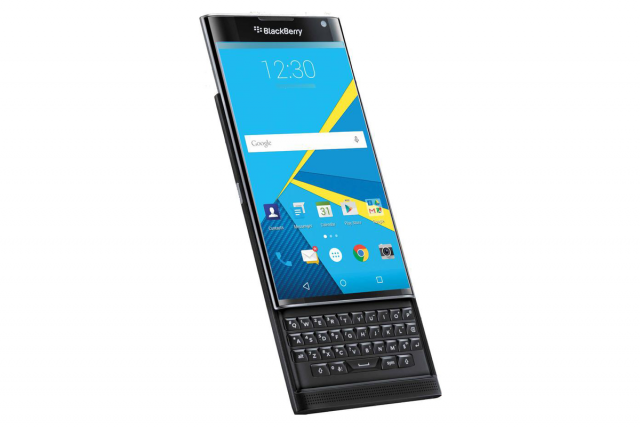
BlackBerry’s Priv handset is arriving sooner than we thought, and in fact pre-orders are now live with Carphone Warehouse.
And as expected, the company’s new smartphone, which runs Android rather than BlackBerry OS, is priced at the premium end of the spectrum. The SIM-free version will set you back £580, and is available in just the one color -- black.
If you reserve your device now, you should receive it by November 6, or at least that’s the date Carphone Warehouse is aiming for.
If you’re looking for a pay monthly deal, then at Carphone Warehouse tariffs start from £32.50 per month (although you’ll have to pay £80 upfront for the phone itself with that plan).
That’s with O2 and it gets you unlimited minutes and texts plus 1GB of 4G data.
Vodafone offers a very similar deal, except it charges £34 per month and for that extra bit of money doubles the data allowance to 2GB of 4G data. Or you can get 6GB of data with Vodafone for £39 per month and a £60 upfront fee.
If you want the handset free, the cheapest plan is £49 per month which comes with 2GB of 4G data, although that works out very poorly overall compared to the 6GB plan we just mentioned (you’re only saving £60 on the handset anyway, and paying out £10 a month extra, which will be £240 over the whole contract -- plus you’re only getting a third of the data allowance as well).
Previous speculation had pegged the device with a 2016 release. The Priv offers a 5.4in Quad HD display which slides up to reveal a full keyboard, and brings a world of privacy and security to Android which BlackBerry hopes will further differentiate it from all the other massed ranks of handsets sporting Google’s OS.
Published under license from ITProPortal.com, a Net Communities Ltd Publication. All rights reserved.
-

Steve Ballmer is now Twitter's third-largest stockholder
Publié: octobre 20, 2015, 7:48pm CEST par Darren Allan

So what’s Steve Ballmer up to these days, now he’s not at the helm of Microsoft? He’s investing in the tech world, and specifically in Twitter -- indeed he’s bought up a very large stake in the social network, despite its shaky performance in recent times.
Ballmer tweeted: "Good job @twitter,@twittermoments innovation, @jack Ceo, leaner, more focused. Glad I bought four percent past few months".
And he previously bigged up Twitter a couple of weeks ago, with a tweet which read: "I think @twitter is remarkable. There is amazing chance to innovate and grow. Excited to see progress with @jack as CEO. Impressive dude!".
There was some confusion initially as to whether that first tweet announcing his four percent stake was some sort of a hack, but a spokesman for Ballmer soon verified that it was a genuine statement, as Reuters reports.
This now means the ex-Microsoft CEO has around an $800 million (£520 million) stake in the social network, and is the third largest individual stockholder in Twitter (after co-founder Evan Williams and Prince Alwaleed bin Talal, the Saudi business magnate).
It makes you wonder if Ballmer knows something we don’t...
James Lau, who used to be Principal Lead Program Manager of OneNote, until he moved to Google at the start of 2015, made an interesting response to Ballmer’s tweet: "How does the rich get richer? Tweet what you stocks you buy of course! #RichGetsRicher #GoodJob".
Twitter has been in poor form recently, failing to grow its user base, and of course having to lay off the best part of a tenth of its workforce as we reported last week (presumably what Ballmer was referring to when he spoke about a "leaner" Twitter).
Published under license from ITProPortal.com, a Net Communities Ltd Publication. All rights reserved.
-

App Store revenue is 80 percent higher than Google Play
Publié: octobre 16, 2015, 2:05pm CEST par Darren Allan

App Annie has released its mobile app market report for Q3, and the headline news is that Apple continues to make more money with iOS, whereas Google’s download numbers are increasing with Android.
It is, though, the money made which really counts, and the global indexed revenue from Apple’s App Store is now 80 percent higher than Google Play, according to App Annie’s figures.
Cupertino saw a nice boost in China, where with the launch of the larger-screened iPhone 6 and iPhone 6 Plus last year, its smartphones gained huge popularity. It was mainly games and social video apps which drove iOS revenue in the country, apparently.
Google’s Android still leads in terms of the actual number of downloads made, with 90 percent more apps downloaded than iOS, an even greater lead than Apple has in revenue.
If Apple dominated China, Google was the king in India with its lower cost phones -- Android messaging apps were very popular in India, along with social networking and security.
In the previous quarter, Google was 85 percent ahead in terms of downloads, so it has eked out a nice gain of five percentage points this quarter. Apple made bigger gains on the revenue front though, putting on 10 percentage points this quarter, up from 70 percent in Q2.
Emerging markets are boosting Google’s performance, and as App Annie noted, "low-cost smartphones continue to penetrate India and Southeast Asia. First-time smartphone owner numbers are on the rise".
Published under license from ITProPortal.com, a Net Communities Ltd Publication. All rights reserved.
Photo Credit: aerogondo2/Shutterstock
-

BlackBerry Priv will be expensive
Publié: octobre 14, 2015, 11:24am CEST par Darren Allan

The rumor mill has put a price tag on the upcoming BlackBerry Priv handset, and this smartphone won’t be cheap.
That likely won’t come as a surprise though, given the noises that have already been made about this being a premium phone, and BlackBerry’s chief executive John Chen has even previously said that the device will have a top-end price tag.
And according to GSM Arena, which spotted a post by Chinese leaker Leaksfly on Weibo, the Priv will weigh in at CNY 3,999, which is around £410 or $630. Of course, the price in pounds is likely to be much closer to that dollar figure than a direct translation from Chinese currency.
The BlackBerry Priv (which stands for privacy -- and also, rather confusingly, for privilege by all accounts) is expected to be released in 2016, and will run Android rather than BlackBerry OS in a move to attract more users.
We’ve already seen official pictures and it looks to be a very smart device, a slim slider phone which allows the user to slide the display up to reveal a full physical keyboard.
Essentially it’s the last throw of the dice for BlackBerry smartphones. If this one doesn’t work using Android as a springboard, it’s hard to see how the company will push forward on the mobile front.
Published under license from ITProPortal.com, a Net Communities Ltd Publication. All rights reserved.
-

LoopPay hack does not affect Samsung Pay users
Publié: octobre 9, 2015, 8:15pm CEST par Darren Allan

Samsung has hit a spot of trouble, with the news that LoopPay, a US-based subsidiary of the company, has been targeted by hackers.
This is particularly important because as the New York Times reports, LoopPay’s magnetic secure transmission technology is the cornerstone of Samsung’s mobile payment system.
It’s believed that the hackers, who are allegedly Chinese and affiliated to the government of that country, broke into LoopPay’s network back in March, over half a year ago now.
Given that the firm didn’t discover the intrusion until August had almost ended, that’s a pretty worrying length of time for the network to have been compromised. However, it’s the office network of LoopPay which was breached, and not the production network that handles payment transactions and is run by Samsung -- which is a completely separate system.
At this point, it seems that customer data is safe, and Samsung has come out with a statement to say that Samsung Pay users have not been affected by this affair.
Samsung called it an isolated incident, and said that at no point was customer payment information at risk.
Following the discovery of the breach, LoopPay enlisted the services of two independent security teams, and has conducted a "thorough and extensive sweep" of its whole system, with new safeguards being introduced where appropriate.
Samsung asserted: "We’re confident that Samsung Pay is safe and secure. Each transaction uses a digital token to replace a card number. The encrypted token combined with certificate information can only be used once to make a payment. Merchants and retailers can’t see or store the actual card data".
Nevertheless, even a sniff of bad sounding publicity on the security front isn’t good news for a payment system.
Published under license from ITProPortal.com, a Net Communities Ltd Publication. All rights reserved.
Image Credit: wk1003mike/Shutterstock
-

Yes, there's malware that infects your router to keep you safe
Publié: octobre 6, 2015, 7:38pm CEST par Darren Allan
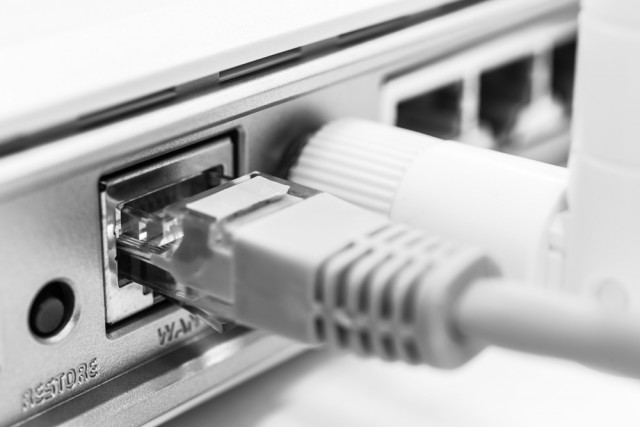
Well, this is a new one -- a piece of malware has been discovered which infects routers, but bolsters their protection against other viruses and nastiness, rather than doing anything bad.
Linux.Wifatch apparently improves the security of routers, many of which are poorly configured and are increasingly targets for malware authors.
Symantec spotted the virus, and wrote a detailed blog post on exactly what it gets up to in terms of strengthening routers and also IoT devices (the Internet of Things is set to become the next security nightmare as it explodes going forward).
According to the security firm, Wifatch is a fairly sophisticated virus which connects to a peer-to-peer network, except instead of doing anything malicious, it’s used to distribute updates to block other threats.
Symantec said it has been observing Wifatch for months now, and has "yet to observe any malicious actions being carried out through it".
As well as trying to clean up common malware infections, Wifatch also contains messages to device owners urging them that they need to update firmware or change default passwords.
However, despite the fact that this particular virus is apparently a good guy, it’s still code that infects a router (or IoT device) without permission, and has a number of built-in backdoors which could be used to carry out malicious actions, Symantec observes.
There’s also the possibility that future versions could be changed and warped to do bad things…
At any rate, you can remove the Wifatch malware simply by resetting the infected device. Symantec notes: "However, devices may become infected again over time. If possible, users are advised to keep their device’s software and firmware up to date and to change any default passwords that may be in use"
And if users do so, Wifatch will have again done them a big favor...
Published under license from ITProPortal.com, a Net Communities Ltd Publication. All rights reserved.
Image Credit: Georgii Shipin / Shutterstock
-

Samsung Galaxy S7 will have Qualcomm Snapdragon 820 chip
Publié: octobre 5, 2015, 6:31pm CEST par Darren Allan

Samsung is going to start using Qualcomm’s processors again with its next flagship smartphone, the Galaxy S7.
If you cast your mind back to the start of the year, that was when news first emerged that Samsung was abandoning Qualcomm CPUs for the Galaxy S6, with the phone maker deciding to exclusively use its own Exynos chips (previously, Samsung had used both Exynos and Snapdragon).
This was apparently due to the fact that the chip in question, the Snapdragon 810, was overheating during testing.
However, whatever the issue was with Snapdragon, Qualcomm has apparently now fixed it, because the Snapdragon 820 will be on board the Galaxy S7, according to the Electronic Times (via a Reuters report).
The South Korean newspaper got this information from the usual anonymous sources, who said that with the Galaxy S7, Samsung will use the Qualcomm processor for the flagship handsets sold in the US and China. Other markets will get an Exynos chip, so the sources claim.
Things moving back to business as usual would hardly be a surprising state of affairs though -- it was a major contract for Qualcomm to lose, and it makes sense that the firm would do its absolute upmost to get back on board with Samsung.
Samsung hasn’t performed well of late, as you may have noticed, with profit dropping by eight percent in the company’s results for Q2 2015 -- and that’s the fifth successive drop in profits witnessed by the company.
Despite being well received by critics, the Galaxy S6 and the S6 Edge haven’t made the waves in the smartphone market that Samsung hoped for. Even the old iPhone 5S is outselling both of Samsung’s flagship handsets currently, according to uSwitch’s mobile tracker, and that Apple smartphone is in third place behind the iPhone 6, and the iPhone 6S in pole position.
Published under license from ITProPortal.com, a Net Communities Ltd Publication. All rights reserved.
-

UK Government's free Wi-Fi initiative benefits 3 million public transport users
Publié: octobre 2, 2015, 8:59am CEST par Darren Allan

The government has been busy boasting about its SuperConnected cities project, and how many people it’s benefiting with free Wi-Fi.
The scheme has seen the introduction of free Wi-Fi on buses, trams and trains in various UK cities, and apparently over 3 million unique users have made regular use of the wireless connections while traveling.
In fact, nine cities across the UK have benefited from the SuperConnected initiative, namely: Leeds, Bradford, Oxford, Manchester, Salford, York, Edinburgh, Cardiff and Newport.
The vast majority of those 3 million plus users are in Edinburgh, where free Wi-Fi on 20 buses and 104 trams has benefited 2.6 million members of the public.
The other cities which have seen big numbers of users include 24 trains and around the same number of buses in Leeds and Bradford, which have witnessed some 600,000 users, and in Greater Manchester 265,000 travelers on 116 buses and trams have made use of the scheme.
The other cities are offering free Wi-Fi just on bus services, with Oxford getting over 100,000 unique users on its buses, Cardiff seeing 90,000, Newport getting 25,000, and finally York is on 20,000 users.
Digital Economy Minister Ed Vaizey commented: "The rollout of free Wi-Fi on public transport has been a tremendous success and I’m delighted that so many people are making use of it. Installing free Wi-Fi on public transport is one of the ways we’re boosting connectivity across our cities and making sure the UK is properly equipped to meet the increasing demands of the digital age".
Published under license from ITProPortal.com, a Net Communities Ltd Publication. All rights reserved.
-

Android 6.0 Marshmallow rolling out October 5
Publié: octobre 1, 2015, 3:36pm CEST par Darren Allan
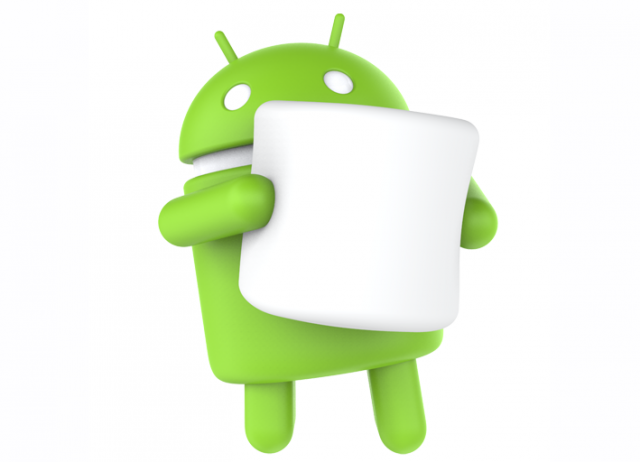
Google has said that the new version of its mobile operating system, Android Marshmallow, will begin rolling out next week.
In fact the rollout of Android 6.0 will begin on Monday October 5, the Inquirer reports, when Nexus device owners will be able to snag the new OS.
Specifically, Marshmallow will be available to Nexus 5 and Nexus 6 owners, as well as those with a Nexus 7 (2013) or Nexus 9 tablet, and also the Nexus Player.
The previous year’s version of the Nexus 7 and the old larger Nexus 10 slate are unlikely to be graced with Marshmallow, unfortunately, and will have to remain sullenly sucking on their Lollipops.
Of course, those on other devices will have to wait for their phone manufacturer to sort out the Marshmallow upgrade, which often takes a great deal of time (and is definitely one of the weak points of Android compared to iOS).
So what does Marshmallow bring to the table? Better power saving measures to make that battery last longer (including a new Doze mode -- a sleep state for when your phone hasn’t been used for a bit) have been implemented for starters.
Google has also made tweaks to app permissions to give users more choice, and to be able to refuse certain elements, so they’re not simply forced to accept a bucketful of (sometimes unnecessary) permissions upon installation.
Support for fingerprint sensors has been brought on board for better security, and a new Now on Tap feature promises to bring more information to your immediate attention -- so, for example, if you’re talking about going to a certain restaurant in a messaging conversation, it’ll pop up the details and reviews of that establishment.
It’s not as important an update as Lollipop was, but there are certainly many features here which are worth having.
Published under license from ITProPortal.com, a Net Communities Ltd Publication. All rights reserved.
-

Lufthansa will offer high-speed Internet to European travelers in 2016
Publié: septembre 24, 2015, 7:44am CEST par Darren Allan

Lufthansa will offer high-speed internet to passengers flying on its planes in Europe as of next year.
Travelers will benefit from in-flight net access thanks to a partnership between Deutsche Telekom and Inmarsat, with the broadband delivered by a combination of the former’s ground-based cellular network and the latter’s satellite network.
Indeed, these two firms are developing what’s known as the European Aviation Network, which seamlessly combines Deutsche Telekom’s LTE network with connectivity beamed down from above via an Inmarsat S-band satellite.
Many European airlines are expected to benefit, with Lufthansa being the first, initially utilizing the satellite-based broadband from the summer of 2016, and then trialling the full combined European Aviation Network from 2017 going forwards.
Carsten Spohr, CEO of Lufthansa, commented: "We are pleased to offer our passengers an outstanding Internet experience on board our short and medium haul flights already from 2016. This underlines once again that we are pioneers when it comes to digital services on board".
Tim Höttges, CEO of Deutsche Telekom, added: "As a ground-breaking innovation we will roll out a powerful terrestrial network based on LTE within the European Aviation Network. This will be the first aviation connectivity network in Europe powered by both LTE and satellite combined! Our technology leadership provides a solid foundation for the best customer experience possible -- be that on the ground or in the skies -- and enables us to work with the finest partners in Europe and beyond.”
The system will function once the aircraft reaches 10,000 feet, and the switching between the ground-based LTE network and satellite network will be automatically managed by the plane’s on-board systems, with net access constantly and seamlessly maintained -- or that’s certainly the theory.
Published under license from ITProPortal.com, a Net Communities Ltd Publication. All rights reserved.
Photo Credit: InsectWorld/Shutterstock
-

HP prepares to axe 30,000 jobs
Publié: septembre 17, 2015, 4:30pm CEST par Darren Allan
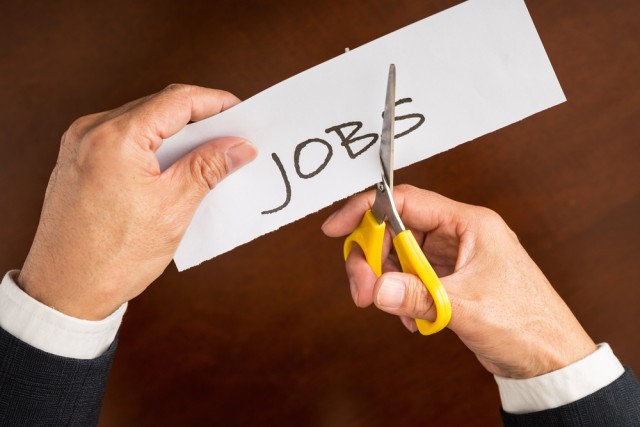
When HP announced it was to split into two at the end of last year, everyone knew it would be an expensive and complex separation, with job losses bound to be incurred -- and a new round of cuts has just been announced.
Sky News reports that the company has revealed that 25,000 to 30,000 jobs are going to be axed at HP Enterprise, the new arm separate from its PC and printer hardware division.
These cuts will be made by the end of next month, and will affect employees worldwide, although exactly where they’ll be drawn from wasn’t specified.
The company has previously laid off some 55,000 workers, and the transition HP is going through is certainly a painful one for many -- but hopefully, this will be the last bout of "restructuring" that we see.
CEO Meg Whitman commented: "These restructuring activities will enable a more competitive, sustainable cost structure for the new Hewlett Packard Enterprise. We’ve done a significant amount of work over the past few years to take costs out and simplify processes and these final actions will eliminate the need for any future corporate restructuring".
Back in February, HP’s chief financial officer Cathie Lesjak detailed how much the split was going to cost the company, and estimated that some $2 billion (£1.3 billion) would need to be forked out.
Published under license from ITProPortal.com, a Net Communities Ltd Publication. All rights reserved.
Photo Credit: Gang Liu/Shutterstock
-

Apple Watch selling well in China
Publié: septembre 4, 2015, 9:14pm CEST par Darren Allan
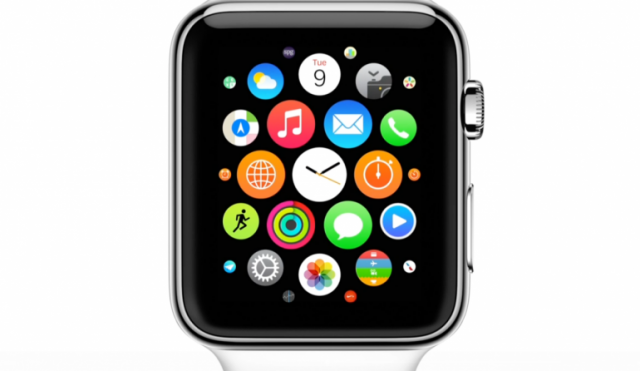
Following an initial strong performance out of the gate, Apple Watch sales have been widely regarded as on the slump according to several pieces of analysis we’ve seen -- although the latest snippet concerning the Chinese market is more optimistic.
As you may be aware, the iPhone 6 models have been doing very well over in China, and Apple’s smartwatch has also shifted a considerable amount of units.
In total, Apple Watch sales have crept over the 1.07 million mark in the country, according to figures released by a Chinese app monitoring outfit, TalkingData (as spotted by Business Insider).
Unsurprisingly, even TalkingData’s stats showed a massive initial burst of interest in the device which quickly declined.
A month ago, we heard a report about an Apple supplier involved in watch production and based in Taiwan, which stated that it didn’t reach its "break-even volume" of two million units per month in the second quarter of this year -- and levels weren’t expected to recover in Q3, either.
That followed hot on the heels of statistics from Slice, showing that in the US market Apple started off selling around 200,000 watches per day during the launch week, but that fell off to around 10,000 to 20,000 units per day.
Apple, of course, hasn’t helped all this speculation of sales underperformance given its failure to release any hard sales numbers that would prove these rumors wrong.
Published under license from ITProPortal.com, a Net Communities Ltd Publication. All rights reserved.
-

The most-used passwords we choose are still terrible
Publié: septembre 1, 2015, 10:18am CEST par Darren Allan
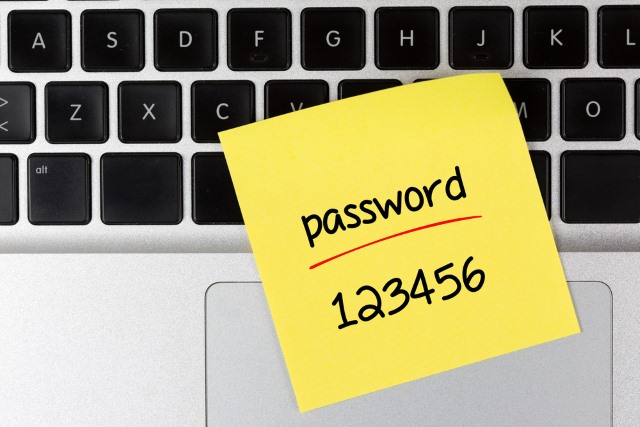
There’s no excuse for having a ridiculously weak account password, and yet many folks continue to make no effort at all on the security front in this respect, according to a new piece of research.
BT.com highlighted a government survey, which was part of the Cyber Streetwise campaign, and found that three quarters of UK citizens used passwords which weren’t secure.
Those could be easy to guess passwords such as the person’s place of birth, and other information which could be readily available on a social media account, or other sources.
As for the most common passwords used last year, that was the usual list of awful choices, topped by "123456" and the brilliant "password", followed closely by the ever secure "12345". "12345678" was in fourth place (at least eight characters, we suppose), followed by a switch to letters with "qwerty".
Yes it’s the sort of stuff that makes you weep, if you’re a security expert at any rate. And yes, these passwords are likely employed for accounts people sign up for and use once, or they consider completely disposable or unimportant, but when you sign up for anything online, you should always make sure the password is at least half decent. And not just "password"...
You might think that maybe all the recent high-profile hacks that we’ve seen could change these most-used terrible passwords, but the reality is, they won’t -- and the top 10 will likely always be much the same until we finally switch away from traditional passwords, and move to more secure systems (such as biometrics).
Or you could always use a password management program, of course -- though that can come with risks of its own in terms of hacking, as we’ve seen in recent times.
Published under license from ITProPortal.com, a Net Communities Ltd Publication. All rights reserved.
Photo credit: shutteratakan / Shutterstock
-

The most-used passwords are still terrible choices
Publié: septembre 1, 2015, 10:18am CEST par Darren Allan

There’s no excuse for having a ridiculously weak account password, and yet many folks continue to make no effort at all on the security front in this respect, according to a new piece of research.
BT.com highlighted a government survey, which was part of the Cyber Streetwise campaign, and found that three quarters of UK citizens used passwords which weren’t secure.
Those could be easy to guess passwords such as the person’s place of birth, and other information which could be readily available on a social media account, or other sources.
As for the most common passwords used last year, that was the usual list of awful choices, topped by "123456" and the brilliant "password", followed closely by the ever secure "12345". "12345678" was in fourth place (at least eight characters, we suppose), followed by a switch to letters with "qwerty".
Yes it’s the sort of stuff that makes you weep, if you’re a security expert at any rate. And yes, these passwords are likely employed for accounts people sign up for and use once, or they consider completely disposable or unimportant, but when you sign up for anything online, you should always make sure the password is at least half decent. And not just "password"...
You might think that maybe all the recent high-profile hacks that we’ve seen could change these most-used terrible passwords, but the reality is, they won’t -- and the top 10 will likely always be much the same until we finally switch away from traditional passwords, and move to more secure systems (such as biometrics).
Or you could always use a password management program, of course -- though that can come with risks of its own in terms of hacking, as we’ve seen in recent times.
Published under license from ITProPortal.com, a Net Communities Ltd Publication. All rights reserved.
Photo credit: shutteratakan / Shutterstock
-

Many workers are not familiar with the cloud, VoIP, fiber broadband
Publié: août 26, 2015, 6:03pm CEST par Darren Allan

A pretty staggering amount of folks in the UK still don’t have a clue what some basic technology terms mean, such as the cloud, according to a new survey.
This research comes from telecoms outfit Daisy Group, which questioned British employees to find out how clued up they were on the subject of connectivity, and also subsequently surveyed some 1100 SME owners and managers in the UK.
When it came to the workers, 43 percent of respondents said they had no idea what the cloud was, and a tad more than that, 44 percent, also didn’t know what fiber broadband meant.
And as for Wi-Fi, 20 percent of those surveyed didn’t know what that was, and three quarters had no clue as to what VoIP was.
The latter group of SME owners and managers fared better, as you would hope, but even so 29 percent weren’t confident they could explain what fibre broadband meant, and 26 percent were similarly ignorant on the subject of the cloud.
Kate O'Brien, marketing director at Daisy Group, commented: "Our research highlighted that there is a gap in understanding the technologies that have been designed for business. In particular, we were shocked to find that 75 percent of people didn’t know what VoIP is, especially considering it is a billion pound industry which has been rocketing in popularity over the last five years, due to its ability to dramatically cut businesses’ phone bills".
"Those working in the fast-paced arena of IT and digital have a duty to cut through the jargon and educate UK businesses on what technology can mean for them. Otherwise businesses will continue to waste money and miss out on growth opportunities simply through ignorance about what is available", adds O'Brien.
For those who need educating on the cloud or other tech topics, you might want to pass on this link to Daisy Group’s series of jargon-free explainer videos.
Published under license from ITProPortal.com, a Net Communities Ltd Publication. All rights reserved.
Photo Credit: xavier gallego morell/Shutterstock
-

'Glitch' to blame for Uber customers getting overcharged
Publié: août 25, 2015, 9:33pm CEST par Darren Allan
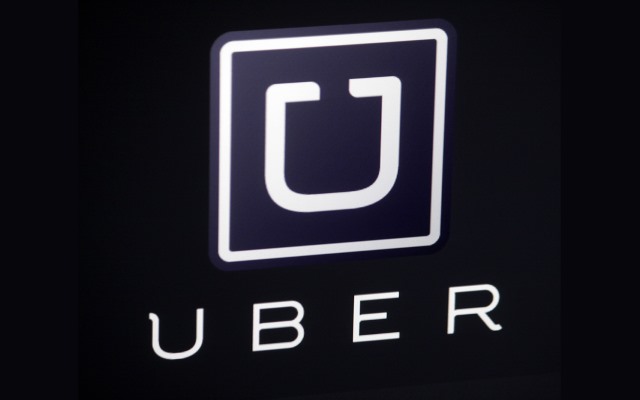
Uber has said that a system glitch was to blame for a number of customers who were massively overcharged for their rides over this past weekend.
Users of the service in the UK and also the US were apparently affected, according to a report in the Telegraph, with complaints popping up on Twitter. A number of folks complained of being charged around £70-£80 for very short trips that shouldn’t have been much more than a tenner.
Sharna Tommy Egan tweeted: "So @Uber charged me £82 for a job which was only meant to be £10-14. Sort this out".
On Saturday, the Uber Support account tweeted: "Some riders & drivers may experience issues requesting and completing trips. Our team is on it and things should be back to normal shortly".
That was quickly followed up by: "We had a glitch earlier... Issues requesting & completing trips should be resolved".
An Uber spokesman told the Telegraph: "Due to a brief error, a small number of trips were incorrectly charged over the weekend. This has since been rectified and all those affected are being refunded".
Refunds were of course only to be expected. Uber might be worth some $41 billion, but it can’t afford bad publicity -- or at least no more bad publicity than it already gets.
There are plenty of anti-Uber protests being organized by licensed taxi cab drivers across the globe, and the latest one we’ve heard about is in Montréal, with taxi drivers threatening to block bridges in the city.
Published under license from ITProPortal.com, a Net Communities Ltd Publication. All rights reserved.
Photo credit: 360b / Shutterstock.com
-

NSA wants to future-proof encryption standards against quantum computers
Publié: août 25, 2015, 4:42pm CEST par Darren Allan

The NSA is concerned that current methods of cryptography, used to encrypt data and ensure that if it does fall into the wrong hands it’s not readable or usable, are going to be woefully inadequate and easily broken when quantum computers come into play.
Of course, this isn’t going to be something that happens in the near future, as quantum computers -- which instead of bits, use qubits that can hold three states instead of the usual binary 0 or 1 -- are still merely conceptual in nature, and won’t be fully realized for many decades yet.
That said, as the IB Times, which spotted the NSA’s release on the matter, points out, such vastly powerful computers could come about in the next 50 years, and so preparing for that eventuality is certainly important.
Whereas previously the NSA has been urging companies to employ Suite B cryptographic algorithms -- such as 256-bit AES encryption -- the agency now states that it will be moving to quantum-resistant algorithms in the "not too distant future".
These will provide what the NSA describes as cost-effective security against a quantum computer engaged in cracking efforts.
The agency noted that: "We are working with partners across the USG, vendors, and standards bodies to ensure there is a clear plan for getting a new suite of algorithms that are developed in an open and transparent manner that will form the foundation of our next Suite of cryptographic algorithms".
Those organizations who have not yet made the transition to Suite B algorithms are being advised to avoid making any sort of "significant expenditure" to do so right now, but rather, they should plough resources into preparing for the deployment of quantum-resistant algorithms.
But the NSA added: "It is important to note that we aren’t asking vendors to stop implementing the Suite B algorithms and we aren’t asking our national security customers to stop using these algorithms. Rather, we want to give more flexibility to vendors and our customers in the present as we prepare for a quantum safe future".
Published under license from ITProPortal.com, a Net Communities Ltd Publication. All rights reserved.
Photo credit: 360b / Shutterstock
-

Android owners now more loyal to their OS than iPhone users
Publié: août 13, 2015, 6:10pm CEST par Darren Allan
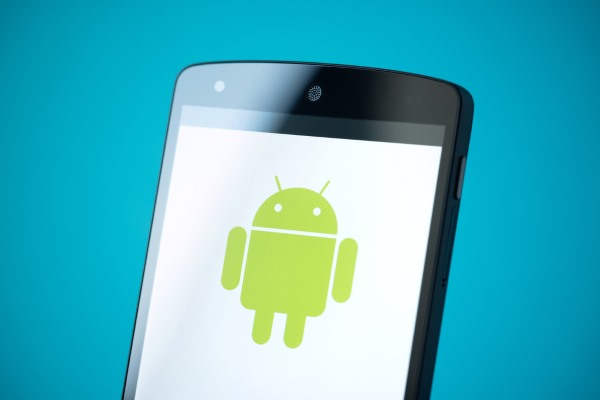
The loyalty of Android users to their mobile OS has increased slightly in comparison to the steadfastness of iOS devotees, according to a new piece of research.
The report from Consumer Intelligence Research Partners (CIRP), which was spotted by CNET, took in the opinions of some 4,000 US consumers.
It found that customer retention for those activating a new mobile, from July 2013 through to June of this year (in other words, a two-year period) stood at 82 percent for Android, and 78 percent for iOS.
Josh Lowitz, Partner and Co-Founder of CIRP, observed: "The dynamic between Apple iOS and Google Android is not well-understood. Even the basic loyalty rate, the measure of how each operating system retains its own users, is not widely known. Conventional wisdom says the Apple 'ecosystem' promotes loyalty, while Android readily gives up users to iOS. Our analysis has a more nuanced view on operating system selection, and indicates Android user loyalty has caught up and even exceeds that of iOS".
As for Windows Phone, Microsoft’s mobile OS managed a retention rate of 19 percent, with BlackBerry slumping to a very poor 4 percent -- although that’s no great surprise.
Lowitz also noted that breaking the periods down further within the window surveyed, Android customer retention increased considerably from 77 percent in the 2013 to 2014 period, to 86 percent in 2014 to 2015 -- whereas with iOS, the retention rate remained about the same, in fact slipping slightly from 79 percent to 78 percent in the second year the report covered.
The study also pointed out that consumers are more likely to switch operating system from iOS to Android when they switch mobile network with their new handset -- but the same isn’t true when shifting from Google’s mobile OS to an iPhone.
Photo credit: Bloomua / Shutterstock
Published under license from ITProPortal.com, a Net Communities Ltd Publication. All rights reserved.
-

Apple will release OS X 10.10.5 to fix Thunderstrike 2 vulnerability
Publié: août 6, 2015, 12:23pm CEST par Darren Allan
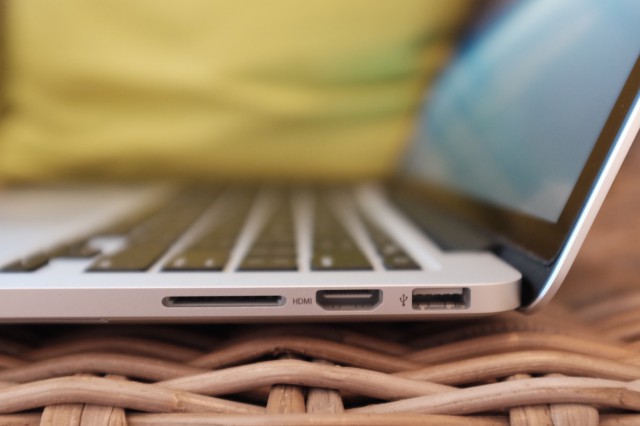
Apple has promised it will fix a major vulnerability which recently cropped up in its OS X Yosemite operating system.
The worrying zero-day vulnerability allows malware authors to modify a hidden configuration file to get root permissions on the victim machine, security firm Malwarebytes explained in a blog post, allowing for the installation of adware and other assorted malware nastiness.
This was particularly concerning as knowledge of the exploit flooded the internet, yet OS X 10.10.4, the current version of Apple’s desktop OS, remains vulnerable.
So it’s not too surprising to hear that Apple has been in touch with the press -- the Guardian in this case -- to promise that the vulnerability will be fully patched and cured in the next update of OS X, version 10.10.5.
That puts paid to the gossip on the security grapevine that Apple might not have issued a fix until the next incarnation of OS X, El Capitan, which follows on from Yosemite.
Even so, bear in mind that right now, this exploit is still a danger -- though note that you do have to install an unsigned third-party app on your Mac to be infected by the dodgy adware spreading script. (OS X won’t even let you do that by default, of course, and anyone who’s messed with the default settings will hopefully be savvy enough not to be installing random programs from potentially suspect sources).
Another major bug going by the name of Thunderstrike 2 has also been causing big problems for Apple’s reputation in terms of the security of the firm’s computers.
This worm could be spread via a website and let attackers overwrite a machine’s firmware, though a patch has already addressed the web page vulnerability (but this particular miscreant can still be spread via Thunderbolt devices).
Published under license from ITProPortal.com, a Net Communities Ltd Publication. All rights reserved.
Photo Credit: Joe Wilcox
-

Dislike your home Wi-Fi? You're not alone
Publié: juillet 22, 2015, 7:06pm CEST par Darren Allan
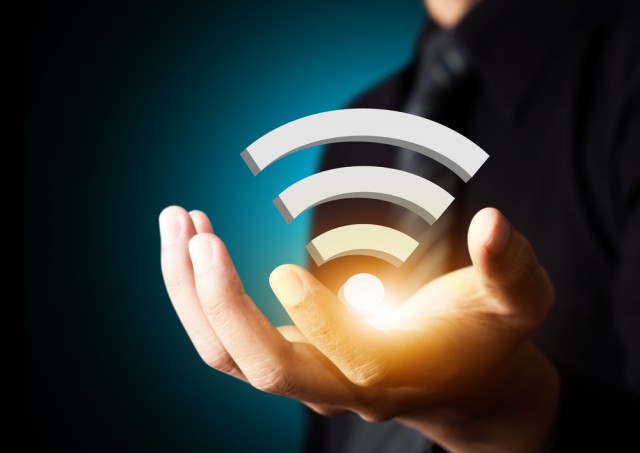
A new survey from Global Wireless Solutions has shown the state of Wi-Fi in homes across the UK, and the picture is a bleak one for some folks.
Of the 2000 UK adults who were questioned, 40 percent said they used their 3G or 4G data connection even when they were at home, because their Wi-Fi wasn’t fast enough. Indeed, a quarter of respondents said they were "forced" to use their mobile data allowance due to substandard Wi-Fi.
16 percent of those polled said their Wi-Fi connection was so slow that when it came to videos and music streaming, and even web surfing, they opted to use mobile data instead. 13 percent never use their phone with Wi-Fi at home, exclusively preferring 3G or 4G because their Wi-Fi is that bad.
That could be due to a poor connection from the broadband service provider, a substandard (and/or badly situated) wireless router, or indeed a crappy phone -- or a combination of all three.
57 percent of respondents said they would rather do their social networking on mobile data as opposed to Wi-Fi, with 46 percent preferring mobile data when it came to online shopping, and 40 percent in the case of working from home (answering emails and so forth).
The survey also looked into the worst rooms in the average home for Wi-Fi, and unsurprisingly that was the bedroom(s), which are typically upstairs and furthest away from the router. The kitchen was the second worst room, followed by the lounge.
Paul Carter, CEO of GWS, observed: "Network operators are under a great deal of pressure to improve the UK’s mobile networks and eliminate signal blackspots around the country. Most major network operators offer their customers voice-over-Wi-Fi services as a temporary solution to in-home blackspots, but as our poll shows, Wi-Fi connectivity in British homes is often too slow or patchy for consumers to reliably access the Internet. These same Wi-Fi issues will affect consumers hoping to use voice-over-Wi-Fi to make calls at home".
"Today’s Brit is adept at switching between Wi-Fi and mobile data to stay connected while they are out and about, but they shouldn’t have to use the same tricks to get online at home. We are using our phones more than ever, and we expect to be able to work, play and shop on our phones while we are at home. How that connection is ultimately made is not important to the average consumer -- as long as it’s made".
Published under license from ITProPortal.com, a Net Communities Ltd Publication. All rights reserved.
Photo credit: Shutter_M / Shutterstock
-

Microsoft introduces Azure Data Catalog and Power BI Desktop
Publié: juillet 14, 2015, 1:01pm CEST par Darren Allan

This week is a big one for Microsoft and its Azure cloud platform, with major updates coming through before its Worldwide Partner Conference. The updates introduce a raft of juicy new features, including Azure Data Catalog and Power BI Desktop.
Azure Data Catalog is actually available in public preview today, and Microsoft describes it as an enterprise metadata portal for the self-discovery of data sources.
Cloud Pro reports that Joseph Sirosh, corporate VP of Information Management and Machine Learning at Microsoft, commented: "Azure Data Catalog is a fully managed service that stores, describes, indexes and provides information on how to access any registered data source. It closes the gap between those seeking information and those producing it".
In short, organizations that are faced with a huge range of data sources need help finding the right source for any given problem, and Azure Data Catalog helps them do this swiftly.
As Microsoft puts it, the service means that staff members won’t spend more time searching for the relevant data than they actually do working with the data itself.
Azure Data Catalog uses crowdsourcing, and Sirosh noted: "Any user, for instance an analyst, data scientist or data developer, can register, enrich, discover, understand and consume data sources. Every user is empowered to register the data sources that they use. Registration extracts the structural metadata from the data source and stores it in the cloud-based Catalog, while the data itself remains in the data source.
"Crowdsourced annotations let users who are knowledgeable about the data assets registered in the Catalog to enrich the system at any time. This helps others understand the data more readily, including its intended purpose and how it’s being used within the business", added Sirosh.
The overhauled data crunching tool Power BI will also be out very shortly -- on July 24, in fact -- and it will be made available alongside Power BI Desktop, which Microsoft describes as a powerful new visual data exploration tool, providing simple drag-and-drop exploration of data and an array of interactive visualizations.
Azure Batch is also now available, which aims to make it a breeze to handle the provisioning and scaling of virtual machines. All in all, these are some very powerful new tools which should make life easier for many businesses.
Published under license from ITProPortal.com, a Net Communities Ltd Publication. All rights reserved.
Photo Credit: wavebreakmedia/Shutterstock
-

Police: Don't buy a gun-shaped iPhone case
Publié: juillet 7, 2015, 12:59pm CEST par Darren Allan

There are a lot of novelty iPhone cases out there, but here’s one which really isn’t a good idea: a gun-shaped case.
Yes, as you can see from the image above, this is essentially a replica gun built to be a holder for your iPhone, and as you can imagine, that’s really not a bright idea -- particularly not over in the US where it’s on sale, and gun crime is rife in one form or another.
Indeed, the Daily Star which reported on this, spotted a tweet from the New York City Police Department warning those who might be thinking of buying this particular case. The tweet read: "I would NOT suggest purchasing this cell phone case, which was designed to look like a firearm. #BeSmart #BeSafe".
As one respondent to the police’s comment on Twitter put it: "Pretty much, asking for trouble. Difficult enough to tell the bad guys and who’s going to snap next, without this".
These gun-style cases are very cheap to compound the matter, and will only set you back five bucks. That said, there haven’t been any reported incidents involving the case, or somebody getting shot because a police officer thought they were armed because they were carrying the accessory.
It’s likely only a matter of time though... If you’re going to buy a 'fun' iPhone case, we’d suggest the traditional novelties, such as one that looks like a box of Tic-Tacs, or an Etch-a-Sketch.
Photo Credit: Queens North SSD
Published under license from ITProPortal.com, a Net Communities Ltd Publication. All rights reserved.
-

One Plus Two touted to have a better fingerprint sensor than iPhone 6
Publié: juillet 1, 2015, 2:31pm CEST par Darren Allan

As you’ve doubtless seen, the sequel to the popular OnePlus One will be revealed at the end of next month, but prior to that information about the handset is slowly being leaked out -- or indeed published by the company in the case of this latest snippet concerning the fingerprint sensor.
In a blog post, OnePlus boasted that the upcoming smartphone will have one of the most advanced fingerprint sensors on the market, in an "Apple eat your heart out" kind of way.
The company noted that early fingerprint sensors weren’t very accurate and were sometimes more of a hindrance than a convenience, and that it had taken its time to get the system just right.
OnePlus claims that the sensor on its new phone will be "lightning quick", and makes a direct comparison to Touch ID on the iPhone, saying its sensor is faster.
With the OnePlus 2, all you’ll need is a quick tap to get to your home screen -- though we’ll have to wait for reviewers to confirm this, naturally. The sensor will also have the ability to store up to five fingerprint profiles.
It all sounds good, but of course one unavoidable thing with the addition of fingerprint hardware is that it will up the cost of the OnePlus 2 -- particularly if it’s a sophisticated sensor we are talking about.
How well that will fit with the OnePlus philosophy of quality hardware at a budget price, we shall see...
Published under license from ITProPortal.com, a Net Communities Ltd Publication. All rights reserved.
Photo credit: Johan Swanepoel / Shutterstock
-

Snapchat for Android, iOS gets two-factor authentication
Publié: juin 11, 2015, 4:25pm CEST par Darren Allan

Snapchat has bolted on some extra security to its Android and iOS apps in the form of two-factor authentication.
The Verge spotted that with the latest version of the Snapchat app, when you log on from a new device, the software will send a text to the mobile registered with your account containing a security number.
You will then need to enter this number to proceed, therefore thwarting any attacker who may have nefariously gleaned your login details (unless they happen to have access to your phone as well -- which is, hopefully, very unlikely).
Note that you will need to turn this login verification option on under Settings.
Another change with this latest version of the app is the introduction of battery filters -- although all this does is add your battery status to any image in the form of an overlay to show whether or not you’re running out of juice.
Quite why you would want to share that information isn’t clear, but then you could say the same thing about Facebook status updates concerning what people have just had for breakfast.
Over a hundred million people are now using Snapchat on a daily basis, and on Twitter, a representative of the service recently indicated that a Windows Phone app is finally in the pipeline -- although there were no promises for its arrival in the near future.
Published under license from ITProPortal.com, a Net Communities Ltd Publication. All rights reserved.
-

Robot learns to wield sword from master swordsman
Publié: juin 8, 2015, 11:36am CEST par Darren Allan

Ever wanted to see a robot playing at being a master swordsman? Well, now’s your chance thanks to an enterprising Japanese firm by the name of the Yaskawa Electric Corporation.
The company has put together the Yaskawa Bushido Project which shows its Motoman-MH24 290kg industrial robot learn from a Japanese master swordsman, Isao Machii, and then take him on over a series of challenges to test their skills with a blade.
The above video, which tech site Motherboard spotted, shows the massive robot arm learn from the motion tracked movements of Machii and then duplicate them flawlessly.
There are four challenges in total: the diagonal cut, rising cut, horizontal cut, and the "thousand cuts" test of endurance.
Although we must admit in challenge number two, it seems to us that the robot takes away a bit too much of the flower in the rising cut -- although what do we know...
That said, in the third one, the horizontal cut, the robot slices through six oranges in a row compared to the human’s one orange -- though Machii’s cut seems more perfectly horizontal to us. Maybe a case of quality over quantity...
Though the sword wielding robot certainly shows frightening precision when it slices a pea-pod horizontally in half.
And as for the last challenge, well, executing a thousand cuts clearly takes its toll on the master swordsman, causing him some grimacing and light sweating -- and obviously doesn’t trouble the robot which could go on and on.
Published under license from ITProPortal.com, a Net Communities Ltd Publication. All rights reserved.
-

How to protect your business against security breaches
Publié: juin 4, 2015, 4:07pm CEST par Darren Allan

As we saw in a recent Department for Business, Innovation and Skills (BIS) survey (conducted by PwC), the number of security breaches inflicted on UK businesses has increased considerably this year.
The report showed that the cost of a breach rose to an average of £1.46 million, up from £600,000 the previous year. It also revealed that 90 percent of major British organizations, and 74 percent of small to medium-sized businesses were hit by security breaches.
And David Emm, Principal Security Researcher at Kaspersky Lab, has now come forward with his thoughts on how businesses can tighten their security and avoid falling prey to breaches.
The first point Emm makes is never to assume that your company is too small or doesn’t hold anything of interest for cyber criminals -- any organization could be a target, if only for the possibility that gaining access to their network could be a stepping stone to breaching a bigger firm.
So every company should have a strategy for combating cyber attacks, which he notes should cover the following elements: "It must contain an accurate assessment of the dangers, the methods cybercriminals could utilize to infiltrate corporate systems, the tools required to mitigate the risks and actions necessary for handling the human element of security in the company".
He further advises that every staff member must be educated on the company’s security policies, as most cyber attackers make inroads onto the firm’s network by tricking an employee in some manner. Security policies must also be easy to understand, and communicated to staff in varied forms, written and verbal.
He notes: "Companies often put policies in place and have staff sign a one-off agreement of understanding, but then fail to ensure this is monitored with systematic awareness and education sessions that make imaginative use of various tools to ensure security is always front of mind".
As we have observed in a past article, the best defense against cyber crime and data breaches is to get your employees on board.
Published under license from ITProPortal.com, a Net Communities Ltd Publication. All rights reserved.
Image Credit: Sergey Nivens / Shutterstock
-

WD releases new My Passport Ultra portable drives
Publié: mai 28, 2015, 8:23pm CEST par Darren Allan
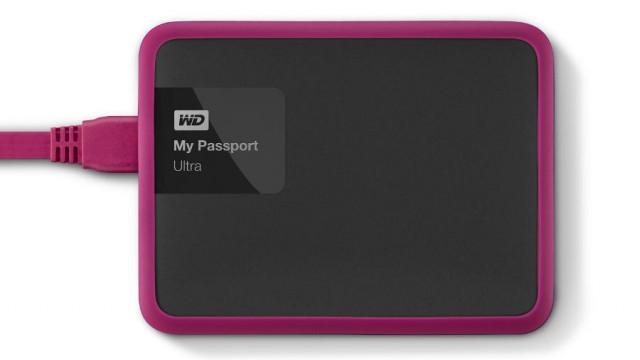
WD has pushed out new models of its My Passport Ultra and My Passport for Mac portable drives.
The seventh-generation models have increased the maximum capacity from 2TB to 3TB, and they come in four different colors -- black, white, blue and wild berry. So you can now get the drives in 500GB and 1TB models, as well as 2TB and 3TB.
The My Passport Ultra offers support for USB 3.0, and 256-bit AES hardware encryption to ensure that if you do lose the drive, if some ne’er-do-well finds it they won’t be able to get their hands on your data.
WD has also introduced a new optional accessory for the drives, namely the WD Grip Pack. This is basically a soft band that comes in five different colors -- smoke, slate, grape, sky and fuchsia -- and it wraps around the portable drive to give, well, more grip so there’s less chance of you dropping it, and also some extra personalization (a matching color USB 3.0 cable is also provided with the pack, a nice touch).
Tony Tate, general manager and vice president of Content Storage Solutions at WD, commented: "With more photos being taken than ever before, it’s critical to have a high capacity, reliable external storage solution that you can carry everywhere. The latest generation My Passport drives deliver an easier automatic back-up experience, hardware-based encryption for security and higher capacities than ever before."
“Consumers can keep all their content in their pockets, while expressing their personal styles with the colours and WD Grip Pack", adds Tate.
The new 3TB model will retail at £159, and should be available shortly.
Published under license from ITProPortal.com, a Net Communities Ltd Publication. All rights reserved.
-

3.2 billion will use the Internet by the end of 2015
Publié: mai 27, 2015, 6:26pm CEST par Darren Allan

New figures released by the ITU (the UN agency for information and communication technologies) have shown that there will be 3.2 billion people online worldwide by the end of 2015.
The majority of those internet users -- 2 billion of them -- live in developing countries, according to the ITU’s analysts.
The organization also noted that since the millennium, we have seen an increase in mobile subscriptions from 738 million to 7 billion worldwide, and Internet penetration has increased massively from 6.5 percent to 43 percent of the global population.
Almost half of the homes across the world now have internet access (46 percent), which is up from 18 percent in 2005.
As for mobile broadband, the number of users surfing on their phones has increased by a factor of 12 since 2007, reaching 47 percent this year.
The ITU also noted that of the 4 billion people who live in built-up areas, 89 percent will have 3G available to them by the end of the year. And when it comes to the 3.4 billion who are living in rural areas across the world, 29 percent of them will have access to 3G.
ITU Secretary-General Houlin Zhao commented: "These new figures not only show the rapid technological progress made to date, but also help us identify those being left behind in the fast-evolving digital economy, as well as the areas where ICT investment is needed most".
Brahima Sanou, Director of the ITU’s Telecommunication Development Bureau, further observed: "ICTs will play an even more significant role in the post-2015 era and in achieving future Sustainable Development Goals as the world moves faster and faster towards a digital society. Our mission is to connect everyone and to create a truly inclusive information society, for which we need comparable and high-quality data and statistics to measure progress".
Published under license from ITProPortal.com, a Net Communities Ltd Publication. All rights reserved.
Photo credit: ixpert / Shutterstock
-

Apple may have leaked its upcoming iPhone 6c
Publié: mai 22, 2015, 1:13pm CEST par Darren Allan
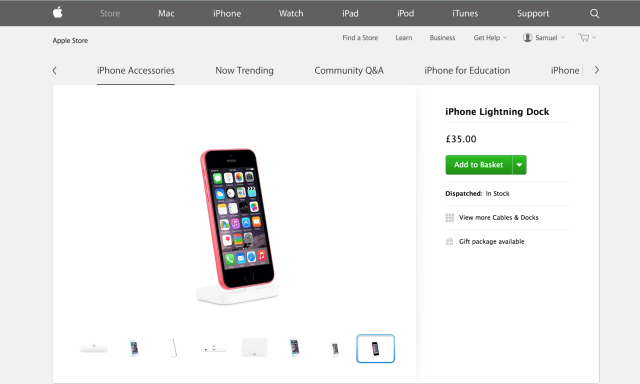
There has been another leak of an Apple smartphone -- far from an unusual event in itself, except this time Cupertino itself is responsible for spilling the image.
The Guardian spotted the picture which popped up on the Apple Store, advertising a new charging dock with a lightning connector. Inside the dock was an iPhone 5C with a difference – rather than a home button, it appears to have a fingerprint scanner.
Several previous rumours have pointed to Apple bringing out a new budget iPhone this year, namely an updated version of the iPhone 5C with Touch ID on-board. This cheaper iPhone 6C (although how much cheaper it will be remains to be seen of course) will keep the 4-inch screen of the 5C, pleasing those who prefer a smaller handset to the larger phones which Apple brought out last autumn.
While including the fingerprint technology will obviously increase the price of the phone, Apple will of course want it on board to help push Apple Pay.
The rumor of the budget iPhone 6c was first unearthed by DigiTimes, whose sources claimed there will be an iPhone 6s and 6s Plus coming out later this year using the A9 chip, with the low-end iPhone 6c version using an A8 chip.
However, the real question for us is: will Apple actually pitch this phone at a truly wallet-friendly price, unlike the iPhone 5c, which was merely a little cheaper on launch (although it was knocked down further when the 8GB model emerged).
Published under license from ITProPortal.com, a Net Communities Ltd Publication. All rights reserved.
-

Facebook Messenger video calling is now available worldwide
Publié: mai 21, 2015, 9:23pm CEST par Darren Allan
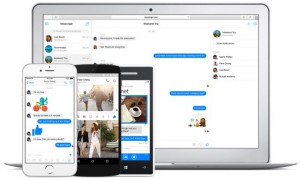
Facebook has announced that its new addition to Messenger, namely video calling, has now rolled out across the globe.
The video calling capability was bolted on to Messenger on both iOS and Android at the end of last month, but obviously rolling it out to every market worldwide takes some time.
However, the Next Web spotted that David Marcus, vice president of Messaging Products at Facebook, provided an update on progress on his Facebook account -- noting that there are a few territories which still haven’t received the service due to quality issues.
Marcus writes: "Quick update on video calling in Messenger: we’re happy to share we’ve now rolled out the capability globally, with the exception of a few countries we’re still working on improving quality for".
Facebook’s video calling allows users to have face-to-face chats with friends, initiating the conversation with just a simple tap on the video icon top-right -- and you can fire up a video chat directly from a Messenger conversation thread.
In the first two days following the initial launch, which covered 18 territories, Facebook said that Messenger users made over a million video calls, so doubtless a fair few more than that have been made by now given that the service has been live for nearly a month.
Published under license from ITProPortal.com, a Net Communities Ltd Publication. All rights reserved.
-

Security researcher allegedly takes control of airplane, demonstrates security risks
Publié: mai 19, 2015, 5:55pm CEST par Darren Allan
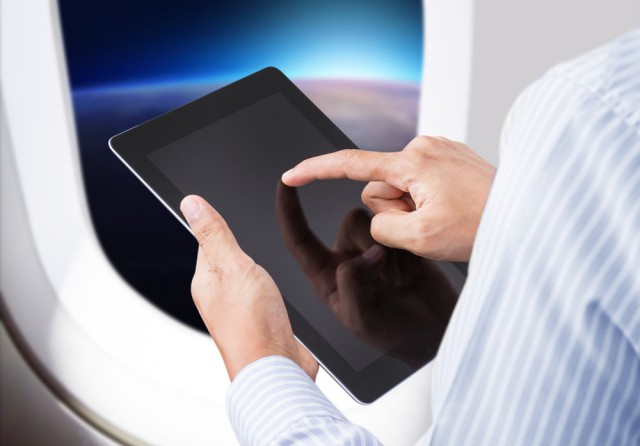
A security consultant is at the centre of a media storm following claims that he hacked into the computer systems on board airplanes on a number of occasions, and during one of those he allegedly managed to take partial control of the craft.
Chris Roberts was picked up by the FBI last month following tweets about hacking into the plane’s systems on a United Airlines flight from Chicago to Syracuse, and upon landing he had his kit -- a MacBook Pro and iPad Air -- seized in order to be scrutinized by their techies.
CNN, which spotted the search warrant application filed to investigate the security expert for possible computer crime, reports that Roberts had been questioned by the FBI in February and March, and freely admitted he’d hacked in-flight entertainment (IFE) systems on board planes up to 20 times during 2011 through to 2014.
He offered all these details up because Roberts said he wanted the vulnerabilities in the IFE systems with three different Boeing jets, and the Airbus A320, fixed.
Roberts underlined this point in a recent tweet: "Over last five years my only interest has been to improve aircraft security... given the current situation I’ve been advised against saying much".
However, the FBI claims that on one occasion he hacked into systems and overwrote code which actually allowed him to give the plane a command to climb -- the warrant document says: "[Roberts] stated that he thereby caused one of the airplane engines to climb resulting in a lateral or sideways movement of the plane during one of these flights".
Obviously that’s a more than worrying security flaw -- however, Roberts contends that this affair isn’t what it seems on the face of it. In another tweet, he said: "Sorry it’s so generic, but there’s a whole five years of stuff that the affidavit incorrectly compressed into one paragraph... lots to untangle".
So what the FBI is saying isn’t fully correct, it would seem, and the full truth here is a thornier affair -- though it’s difficult to know how given that Roberts has been advised to say nothing at this point. Further answers will no doubt emerge in due course.
Published under license from ITProPortal.com, a Net Communities Ltd Publication. All rights reserved.
Photo Credit: Shutter_M/Shutterstock
-

Microsoft jokingly reveals what happened to Windows 9
Publié: mai 8, 2015, 12:27pm CEST par Darren Allan

When Windows 10 was first announced, everyone immediately had one burning question to ask Microsoft concerning the freshly rejigged OS. And that question was: "Uhh, what the hell happened to Windows 9?"
Windows 8 followed sequentially on from Windows 7, but somehow, Windows 9 got skipped -- and it seems that’s something Redmond isn’t afraid to joke about, via Joe Belfiore’s and other Microsoft staff members' T-shirts.
Yes, Business Insider reports that Belfiore (who is Corporate VP of Operating Systems at Microsoft) was snapped wearing the special T-shirt at the Build conference last week, with the garment bearing a binary-coded message that enterprising developer Kevin Gosse deciphered by scrutinizing the photo.
So what did it say? Well, there were four sentences in binary in each quadrant of the Windows logo on the shirt, one of which 'explained' the fate of Windows 9.
It read: "Windows 10, because 7 8 9".
Ha-ha, indeed. If you don’t get it, read the sentence out loud -- because apparently, Windows 7 ate Windows 9.
This is actually a joke that has done the rounds on the net before, as was another of the coded sentences, which read: "There are 10 types of people in the world" -- an old binary gag.
The real reason why Windows 9 was ditched? We reckon it’s simply because Microsoft wanted to literally put some distance between the flop that was (and still is) Windows 8 and its successor. It’s a psychological play and a reference to the fact that Windows 10 is a big step on, and far removed, from Windows 8.
Image Credit: Microsoft/Business Insider
Published under license from ITProPortal.com, a Net Communities Ltd Publication. All rights reserved.
-

Ebuyer to sell HP laptops running Ubuntu
Publié: mai 7, 2015, 9:31am CEST par Darren Allan
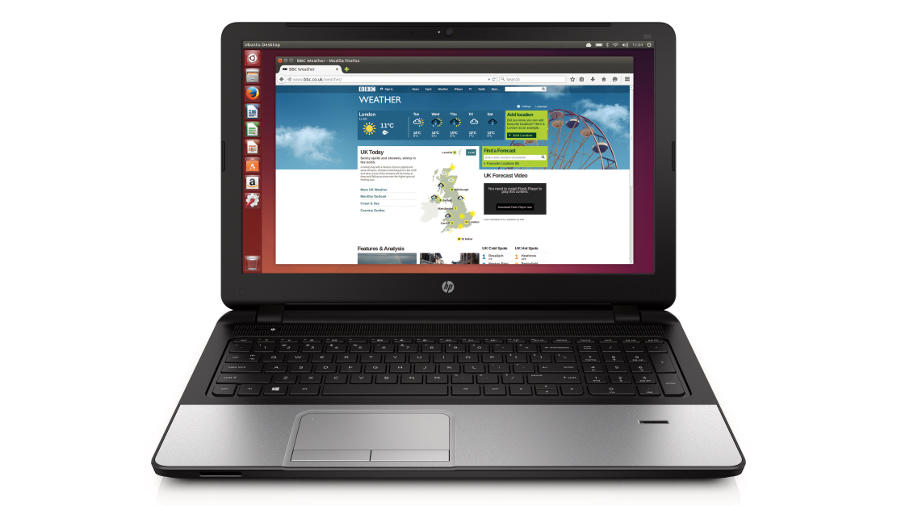
Canonical has partnered up with online retailer Ebuyer to sell a range of AMD-powered HP laptops that run Ubuntu.
There are three different 15.6in laptops available, the HP 255, 355 and ProBook 455, which are priced at £200, £250 and £300 respectively.
All have quad-core AMD CPUs and a 1TB hard drive, with 4GB of RAM except in the case of the ProBook which doubles this to 8GB. The 15.6in screen has a resolution of 1366 x 768, and all the notebooks come with Ubuntu 14.04 LTS as the operating system, and are "perfect for business and home users" alike, according to Canonical.
Lee Weymouth, General Manager at Ebuyer.com, commented: "The focus has always been in providing our customers with the widest and most diversified choice of solutions and hence offering an alternative OS like Ubuntu is a natural next step for us. We trialed and sold Ubuntu preloaded on one device last year with huge success, which precipitated our desire to expand our efforts and offer customers a wider range of Ubuntu preloaded devices moving forward. We are excited to be expanding our partnership with Canonical".
Canonical’s Maria Bonnefon, Global Client Sales Director, added: "Ebuyer.com has proven itself to be a stalwart force in the UK electronics retail space and we are excited to be aligning with them on offering the Ubuntu desktop OS to local customers".
The machines can be pre-ordered on Ebuyer.com now and will be available at the end of the month.
Published under license from ITProPortal.com, a Net Communities Ltd Publication. All rights reserved.
-

The UK could face 'internet rationing' in years to come
Publié: mai 6, 2015, 8:48am CEST par Darren Allan

The UK’s internet infrastructure is in danger of beginning to seriously creak under the sheer weight of the bandwidth demands put on it -- and the power demands of keeping the net running are also set to cause big strains on the country’s suppliers, with the possible outcome of 'internet rationing'.
The warning that dire straits are looming for the UK’s comms networks will be given to The Royal Society this week, with Professors Andrew Ellis, Sir David Payne and David Saad having organized a meeting to discuss the evidently considerable problems our online expansion is causing.
The Telegraph spotted the details of the meeting, which will discuss how "communications networks face a potentially disastrous 'capacity crunch'".
The official spiel stated: "This meeting will combine research in cutting edge information theory adapted to account for the nonlinear dynamics of optical systems, radical network architectures grounded in mathematics to enhance utilization of the finite capacity, advanced material science to provide new tools and uniquely economic analysis to scope the urgency of the issues".
It will look at the impact of capacity growth on national telecoms networks, future traffic demands in terms of media (streaming video will of course be a major strain), energy sector challenges and physical limitations to network capacity, among many other issues.
Apparently current optical cable and switches will reach their capacity for data throughput as 2020 rolls around, meaning new cables will have to be laid, and the expense of this may lead to "sharp rises" in the cost of broadband subscriptions, according to Ellis. Additional cables will likely be flooded in short order given the rate demand is growing at, he further noted.
Power consumption is also a major worry, with the internet currently using 8 percent of the national grid according to Ellis, with demand ramping up hugely. It’s here where we face the specter of some kind of rationing, perhaps, in the future, as Ellis stated: "It is growing so fast, currently at an exponential rate, that, in theory, it could be using all the UK power generation by 2035. We cannot make all that extra power, so we will have to restrict or reduce access, perhaps by metering consumers so they pay for what they use".
The message is that we need to act quickly to face these issues before they become real problems down the line.
Published under license from ITProPortal.com, a Net Communities Ltd Publication. All rights reserved.
-

Solitaire set to return in Windows 10
Publié: avril 24, 2015, 8:28am CEST par Darren Allan

Ah, Solitaire. It’s the card game that has killed many hours of productivity in offices across the world -- and caused many employees to be very quick on the minimize button -- and it’s coming back with Windows 10.
As you’re doubtless aware if you upgraded to Windows 8, with its latest desktop OS, Microsoft decided to ditch a lot of things, including all those dinky little games which came pre-installed in the Start menu -- Solitaire, Minesweeper and Hearts. (The latter was always our favorite -- despite the fact that the computer players clearly, and we mean blatantly, cheated and played using knowledge of the cards you held rather than any true AI skill as such).
Anyway, Windows 8 ditched the games, although as Microsoft noted: "These games aren’t installed automatically with Windows 8.1, but you can download them for free from the Windows Store".
However, the Verge reports that with Windows 10, Redmond is bringing back Solitaire as a default installed game -- and it’ll be the same enhanced version you can grab from the Windows Store for Windows 8 (with additions like daily challenges, and improved graphics).
If Solitaire is coming back, we’d say there was a good chance the other two apps will see a reintroduction by default as well -- but only time will tell.
Published under license from ITProPortal.com, a Net Communities Ltd Publication. All rights reserved.
-

BlackBerry unveils CHACE, a new Internet of Things security initiative
Publié: avril 23, 2015, 8:16am CEST par Darren Allan

BlackBerry has announced the launch of a new initiative called the BlackBerry Center for High Assurance Computing Excellence, or CHACE for short, which aims to further bolster security in the Internet of Things age.
The idea of CHACE is to reverse the current fail-then-patch approach to security, BlackBerry notes, with the development of security tools that offer a far better level of security protection than is now available -- a proactive approach to vulnerability prevention which is far more cost effective.
Bob Egan, CEO, Sepharim Research Group, commented: "As the number of connected devices multiplies, so do the threats to security and privacy. Organizations need to rethink the way they approach security and transition from a reactive posture to one that is proactive and promises the greatest defense against sophisticated cyber-attackers".
In a press statement, BlackBerry further commented that it has a "long history in high assurance techniques" in the security world, including deep vulnerability analysis and extremely thorough automated testing, all of which expertise will be applied when it comes to CHACE’s vulnerability prevention mission. CHACE promises a "nation-state level sophistication" in terms of vulnerability assessment, and the likes of ethical hacking.
David Kleidermacher, Chief Security Officer, BlackBerry, commented: "There’s a belief that the key to the world’s security issues is to patch faster, but this hamster wheel fails to address the root issue. Systems that require regular patching always contain vulnerabilities unknown to developers, and some of these vulnerabilities are in fact known by would-be attackers. It’s clear we must build systems that are provably devoid of security flaws. The software and security engineering required to meet this objective is sadly rare today and must become commonplace. CHACE is BlackBerry’s initiative towards this goal, and we welcome all who wish to join the fight".
A number of leading organizations are already supporting the CHACE initiative, BlackBerry contends, and key partners will include industry groups and academic institutions among others.
Those interested in joining up with CHACE should check out this web page.
Photo credit: Olivier Le Moal / Shutterstock
Published under license from ITProPortal.com, a Net Communities Ltd Publication. All rights reserved.
-

Does it boil? Samsung Galaxy S6 and Apple iPhone 6 in hot water
Publié: avril 17, 2015, 6:41pm CEST par Darren Allan
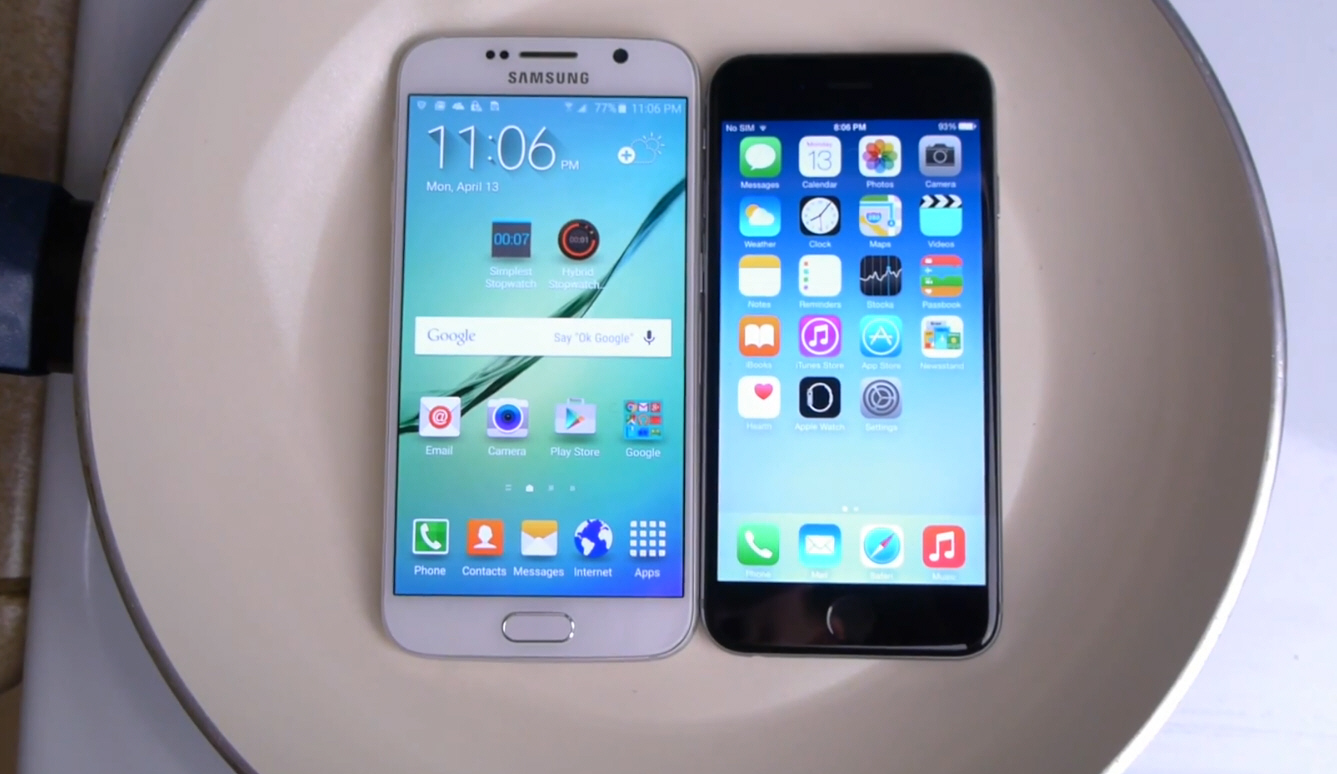
The Galaxy S6 has been subjected to a number of different stress tests since it hit shelves, including full-on bend tests, and simple drop tests -- plus being run over by a car in one case, which it survived and still remained usable.
And here’s another -- this time, the Galaxy S6’s foe is boiling water, which it’s being dipped into alongside an iPhone 6. So which handset will be able to stand the boiling heat for longest?
That’s the question the below video answers (spotted by Uber Gizmo). Click play and watch to find out…
The iPhone 6 only lasted 10 seconds before the screen started to rapidly dim, and then the lights went completely out at about the 13 second mark. The Galaxy S6 continued to boil away until 55 seconds, when it shut down the stopwatch timer, with a warning about overheating the device (unsurprisingly) -- but it still kept going for not far off another minute before appearing to give up.
The end result was a pair of wrecked phones (again, unsurprisingly), though oddly enough the Apple logo does come back on the iPhone 6 display post-test, briefly, before the handset goes completely dead again.
So, if you do happen to drop your Galaxy S6 in boiling water somehow, as long as you can fish it out without too much delay, it should be okay. Not that this is remotely likely to happen -- but it does go to show just how tough a phone the S6 is, particularly when you consider that it (or the iPhone) is not waterproof like, say, the Xperia Z3
https://youtu.be/OI2gJtcfQ6M
Published under license from ITProPortal.com, a Net Communities Ltd Publication. All rights reserved.
-

Microsoft Band goes on sale in the UK
Publié: avril 16, 2015, 9:32am CEST par Darren Allan
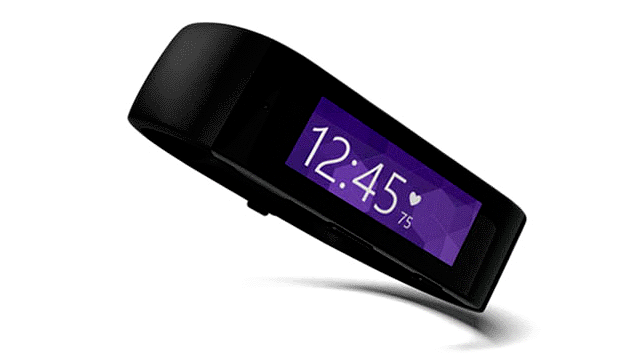
The Microsoft Band has been available over in the US for quite some time now, and fitness band fanatics have had to wait patiently for the device to become available over here -- but the good news is, you can now buy one in the UK.
Yes, if you scoot on over to the official Microsoft web store, there’s a big "buy now" button you can click to get your fitness wristband. And how much will it set you back? £170 including VAT.
The device comes in three sizes -- small, medium and large -- with an optional extra charging cable for £17. You get free shipping with the Microsoft Band, though it will take from three to five business days to arrive.
Note that there’s a printable size guide to help you determine the exact size of your wrist, and whether you should plump for a medium, or you’ll need a bigger or smaller device.
As well as Redmond’s official online store, the Microsoft Band will also be available from Currys, PC World, O2 and Amazon.
Feedback has been pretty good from users themselves, with the device earning itself an average of 4.3 stars across 675 user reviews on the Microsoft Store.
Published under license from ITProPortal.com, a Net Communities Ltd Publication. All rights reserved.
-

ViewSonic introduces affordable 27-inch 4K monitor for professionals
Publié: avril 15, 2015, 9:12pm CEST par Darren Allan
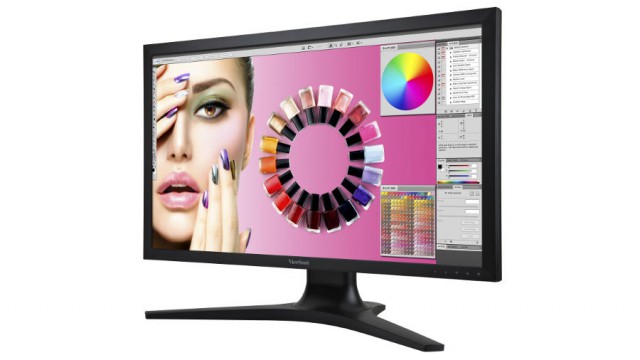
ViewSonic has announced a new 4K monitor designed for professional work. The Ultra HD VP2780-4K, to give the monitor its full name, is a 27-inch LED panel offering a resolution of 3840 x 2160. It uses SuperClear IPS panel tech and is a 10-bit color panel.
Accurate colors are promised, with 100 percent sRGB, and 80 percent Adobe RGB high color coverage, meaning pinpoint colors for CAD work, serious photography and video editing and the like.
The VP2780-4K also boasts HDMI 2.0 supporting 4K content at 60Hz, and there’s a DisplayPort 1.2a, along with a 4-port USB 3.0 hub and dual MHL connectivity.
An ergonomic stand comes with the monitor, which supports picture-in-picture and picture-by-picture, allowing for the display of up to 4 video inputs simultaneously on-screen.
And to give each monitor the best performance out of the box, ViewSonic individually calibrates the displays during production. A four-year warranty is part of the bargain, too, with the VP2780-4K available now at £599.
Claire Chuang, Product Marketing Manager at ViewSonic Europe Ltd, commented: "With more UHD content now available, Ultra HD displays become more and more important for professionals to develop and to display UHD contents. ViewSonic is harnessing two decades as a leader and innovator in displays to deliver a complete portfolio of Ultra HD monitors".
Published under license from ITProPortal.com, a Net Communities Ltd Publication. All rights reserved.
-

New aluminum-ion battery can be fully charged in a minute
Publié: avril 8, 2015, 8:45pm CEST par Darren Allan

A new fast charging battery tech could mean the end of inconvenient waits when it comes to juicing smartphones up.
It’s always a major pain when you realize you forgot to charge your handset, and haven’t much time before you leave the house -- meaning you will likely run out of battery well before the day is out. And while there are quick-charge technologies out there, the new battery -- an aluminum-ion affair rather than lithium-ion power pack -- can be charged in just a minute flat, as opposed to a matter of hours.
The battery has been prototyped by scientists at Stanford University, and is also safer than the traditional lithium-ion efforts. Hongjie Dai, a professor of chemistry at Stanford, said: "Our new battery won’t catch fire, even if you drill through it". So no more exploding smartphones and bad burns to the thighs…
The battery is also more durable, and the researchers reckon it can go 7,500 charge cycles without losing any capacity, compared to 1,000 charge cycles for today’s typical lithium-ion power pack.
The battery could also be very handy considering we’re looking at the emergence of flexible phones now. Dai notes: "Another feature of the aluminum battery is flexibility. You can bend it and fold it, so it has the potential for use in flexible electronic devices. Aluminum is also a cheaper metal than lithium".
So yes, there are cost saving benefits too.
Previous attempts at aluminum batteries have failed -- they generally died after around 100 charge cycles -- but the Stanford invention seems like a strong bet, and is featured in the online edition of the journal Nature.
Let’s hope it moves on from the prototype stage to become a reality, because a super-safe and superfast charging battery is one thing any smartphone could use.
Photo credit: Shmizla / Shutterstock
Published under license from ITProPortal.com, a Net Communities Ltd Publication. All rights reserved.
-

The risk cloud partners pose to enterprises
Publié: avril 1, 2015, 6:04pm CEST par Darren Allan

Cloud security firm Skyhigh Networks has released its Cloud Adoption and Risk Report for Q1 2015, with some unsettling findings in terms of the risks businesses are taking.
The report is compiled by analyzing real-world cloud usage over some 17 million employees, and for the first time in this sixth report, it delved into the risk to enterprises posed by business partners connected via the cloud. This follows a spate of recent data breaches which have been the fault of a third-party, of course.
The headline stat was that an enterprise has, on average, 1,555 partners connected through the cloud, and that 8 percent of these partners are labelled high risk, with 30 percent of an organization’s total data assets shared with those risky partners.
A high risk partner, incidentally, is one suffering from malware attacks, or a breach itself, or a third-party with gaping vulnerabilities which haven’t been patched or properly dealt with.
Skyhigh Networks also observed there was a breed of super-partner companies -- 58 of these in total -- and they’re connected to more than half the enterprises out there. Naturally, a vulnerability in one of these super-partners could have a massive domino effect in terms of data leakage.
The situation is more worrying still, because a greater percentage -- 12.5 per cent, or one in eight -- of these is labelled as high risk. They include IT services and software firms, but also organizations like pest control. Skyhigh Networks cited one airline partner that had 209 devices infested with malware, and 9,716 credentials up for sale on the Darknet -- and it was still vulnerable to Poodle (and not alone in that respect).
Sekhar Sarukkai, co-founder and VP of Engineering at Skyhigh Networks, commented: "Security of any enterprise is only as strong as its weakest link and recent breaches have shown that partners are often the weakest link. Therefore, enterprises must have visibility into the security risks of their business partners so they can take the necessary steps to protect themselves".
You can check out the full report here.
Published under license from ITProPortal.com, a Net Communities Ltd Publication. All rights reserved.
Photo Credit: bahri altay/Shutterstock
-

Google Glass is far from dead
Publié: mars 25, 2015, 9:03am CET par Darren Allan

If you thought Google Glass was dead, well, it isn’t – the big G still has plans for its wearable, even though the Explorer Program was shelved earlier this year, and any consumer plans seemed to ditch in flames with this move.
However, Google’s outspoken Executive Chairman, Eric Schmidt, has been talking to the Wall Street Journal and saying that Glass is far from lying shattered on the floor.
Schmidt said: "It is a big and very fundamental platform for Google. We ended the Explorer program and the press conflated this into us canceling the whole project, which isn’t true. Google is about taking risks and there’s nothing about adjusting Glass that suggests we’re ending it".
So there you have it -- Schmidt further noted that Glass was simply a long-term project, much like the self-driving car, and that results "take time", but will arrive eventually…
In fairness, the press didn’t say Glass was totally dead -- or we certainly didn’t, believing there were still definitely many possible applications in the enterprise and workplace. But in the light of Schmidt’s comments, maybe Glass does have a future with consumers, too -- or at least that’s what Google wants us to believe still.
Development on Glass won’t be so public now, and will continue behind the scenes. The key to widespread mainstream acceptance, though, will certainly be getting the device to look less like a chunky piece of geek-tech.
Published under license from ITProPortal.com, a Net Communities Ltd Publication. All rights reserved.
-

Most consumers don't care about Apple Watch
Publié: mars 16, 2015, 4:06pm CET par Darren Allan
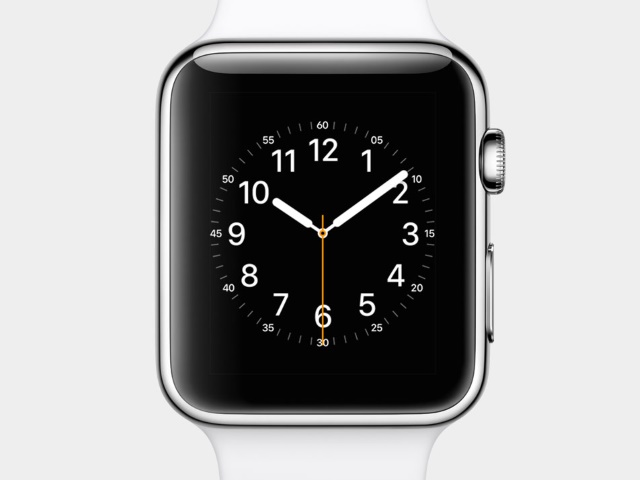
Is the Apple Watch not going to make the impact Apple is hoping for over in its home turf of the United States? This is the case according to a fresh poll of Americans.
The Reuters survey, carried out by Ipsos, took in the opinions of 1,250 US citizens, and found that 69 percent said they are not interested in buying Apple’s smartwatch.
The brighter news for Apple was that 13 percent of respondents who didn’t own an iPhone said they would consider buying both an Apple phone and watch, as the Apple Watch requires the iPhone to function. This is doubtless what Apple is hoping for -- sales synergy both ways between watch and phone.
Oddly, only half of those questioned were aware of Apple’s official launch event earlier this week, which is surprising given the hype juggernaut behind the smartwatch. The online survey was carried out between Monday, after the launch event, and Friday of last week, and we’d have thought more than half of folks would be aware of the latest news regarding the timepiece.
The Apple Watch will launch on April 24, with the basic Apple Watch Sport starting at $349, the midrange model $549, and the infamous gold Watch Edition will set you back a breath-taking $10,000 minimum. Pre-orders kick off April 10.
Three more versions of the Apple Watch are expected to be in the pipeline for later in 2015, including a ceramic and titanium option, and possibly a platinum version for those whose money is really burning a massive hole in their pocket – it will be more expensive than the gold model.
Apple has continued to expel other smart pieces of wrist-wear from its stores, with the latest move being to kick out the Jawbone Up and the Nike+ FuelBand (Fitbit devices were given the elbow last autumn, after Apple’s smartwatch was first unveiled).
Published under license from ITProPortal.com, a Net Communities Ltd Publication. All rights reserved.
-

Samsung Galaxy S6 has the best smartphone display ever
Publié: mars 12, 2015, 6:38pm CET par Darren Allan
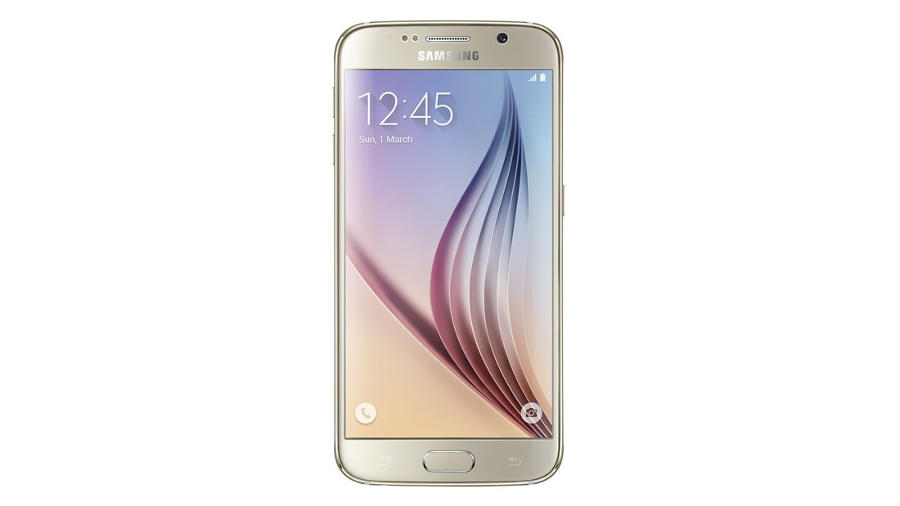
The Galaxy S6 is getting a strong reception from critics, and another tick in the box is the latest rating from DisplayMate, the screen testing experts.
Indeed, DisplayMate has just crowned the Galaxy S6’s display as the best in the smartphone world -- albeit tied with Samsung’s own Galaxy Note 4.
Dr Raymond Soneira observed: "The Galaxy S6 and Galaxy Note 4 are neck-and-neck record holders for display performance, effectively tied or alternating between first and second place in almost all categories except screen size for the much larger Galaxy Note 4, and the much higher pixels per inch for the Galaxy S6".
The conclusion of the S6’s test is: "The Galaxy S6 matches the Galaxy Note 4 in overall display excellence and record performance and joins it as the Best Performing Smartphone Display that we have ever tested".
The Galaxy S6 display, which offers a startling 577 ppi, matched or set new records in a large number of display categories, including most pixels per inch, highest absolute color accuracy and contrast ratio, highest peak brightness, contrast rating, and screen readability in ambient light.
That’s a pretty big win, in other words. Samsung is expecting the Galaxy S6 to recover from the downturn in sales experienced from the S4 to the S5, and indeed the company has already upped its production target for the number of S6 units it’ll produce in April by a million. Samsung is starting to get its smartphone confidence back, it would seem…
Published under license from ITProPortal.com, a Net Communities Ltd Publication. All rights reserved.
-

How much is your personal or company data worth? 50% of Brits say at least £1 million
Publié: février 27, 2015, 9:07am CET par Darren Allan

How much would you be prepared to sell your data for? According to a new survey, almost half of the UK wouldn’t give it up for any less than a million quid.
The study of a thousand Brits, undertaken by Swiss data center Artmotion, found that 49 percent of respondents would only sell their personal or company data for £1 million or more.
10 percent wanted between £100,000 and £1 million, and a further 10 percent said £10,000 to £100,000 was their asking price. 13 percent wanted at least a grand, and 3 percent were happy with £500 to £1,000.
6 percent said they’d give up their data for £1 to £500, and 9 percent would happily let anyone snaffle their data for free (the latter being quite a surprising figure, too -- particularly when you consider that half of the UK wants a cool million for their personal bytes).
In total, then, 82 percent would want at least £1,000 to part with their data -- yet, as the survey takers point out, folks seem to take a surprising lack of care over said data, posting it to consumer cloud services and the like without any caution.
Mateo Meier, founder and CEO of Artmotion and author of the company’s data privacy report, said: "Our research explodes the myth that people don’t really care about online privacy. We’ve found that almost half of the UK public wouldn’t even consider selling their data for less than £1m, which suggests that people actually place a huge premium on staying secure on the web. However, many consumers are failing to take basic steps that would greatly increase their online security. This means that the data they value so highly could easily fall into the wrong hands with potentially disastrous consequences".
Photo Credit: arka38 / Shutterstock
Published under license from ITProPortal.com, a Net Communities Ltd Publication. All rights reserved.
-

Cisco: wearables will lead to a massive increase in mobile traffic by 2019
Publié: février 9, 2015, 8:14am CET par Darren Allan
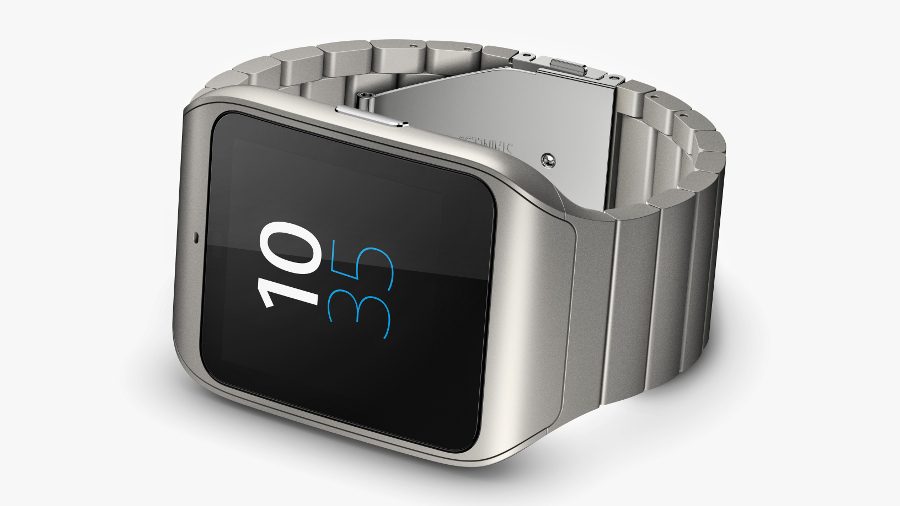
We’re hearing a lot about how wearables are set to explode before this decade is out -- not literally explode (well hopefully not -- though there’s bound to be some sort of incident like that at some point, if smartphones are anything to go by), but rather to explode in terms of their numbers.
And Cisco has released another report which points to big numbers of wearables before 2020 arrives.
This is the company’s Visual Networking Index (VNI) study, which is performed twice a year and scrutinizes levels of fixed and mobile data traffic.
The research estimated that there will be eight billion connected mobile devices come 2019, and 3.2 billion -- 40 percent -- will be machine-to-machine connections, including wearables.
From this year to 2019, Cisco reckons we will see mobile traffic from wearables increase by a factor of 18 -- with most of that traffic happening via the user’s smartphone, which the wearable is hooked up to. And of course, all that bandwidth has to be catered for by network providers…
The total number of connected things (this is the rapidly expanding Internet of Things, of course) is expected to hit 50 billion by 2020.
In terms of these rapidly increasing levels of traffic, Cisco observes: "2015 could well be the year corporate, service provider and public sector networks start feeling the pressure".
Published under license from ITProPortal.com, a Net Communities Ltd Publication. All rights reserved.
-

Augmented Reality glasses set to become more popular than smartphones, says Augmented Reality promoter
Publié: février 4, 2015, 9:10am CET par Darren Allan
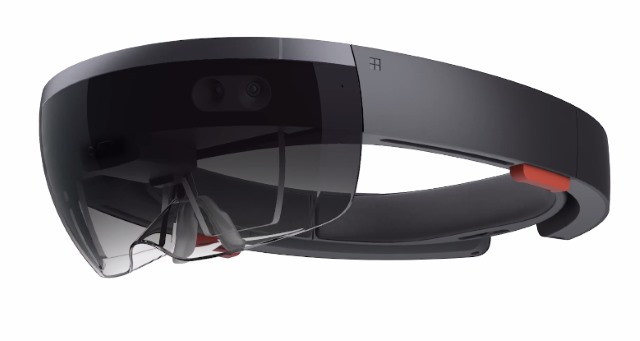
In the future, smart glasses (or AR, Augmented Reality glasses) will become more popular than smartphones -- although we are talking about the pretty distant future.
This unlikely sounding conclusion -- particularly given the recent demise of Google’s Glass Explorer project -- was reached by a report from Augmentedreality.org, although it is potentially somewhat biased in that it’s an organization "committed to advancing Augmented Reality".
At any rate, the Smart Glasses Market 2015 report (spotted by Wareable) claims that the number of smart glasses shipped worldwide will reach a billion come 2020, and will exceed the predicted number of mobile phone shipments when 2025 arrives.
10 new smart glasses were launched last year, and in the near-term, the research predicts that shipments will reach one million by the autumn of 2015, increasing to 10 million by the following year. Initially, most adoption will come from the enterprise world.
Augmentedreality.org notes that the early winners in the smart glasses arena will emerge by the close of 2016, with a major "shakeup" expected around then in terms of big investments and mergers or acquisitions.
The company stated: "Consumer electronics giants, and other players in the ecosystem have no more than a 12 months window to position their companies in the space (build, buy, partner) -- or risk missing the opportunity".
Well, we shall see -- there are certainly some interesting projects which have been freshly unveiled, most notably Microsoft HoloLens, which could succeed in sparking more interest than Google Glass did with consumers. The enterprise, meanwhile, is definitely the area to keep your eye (or perhaps lens) on when it comes to pushing smart glasses tech…
Published under license from ITProPortal.com, a Net Communities Ltd Publication. All rights reserved.
-

Apple files a patent for a phone that bends -- wait, doesn't it already have one?
Publié: janvier 8, 2015, 9:04am CET par Darren Allan
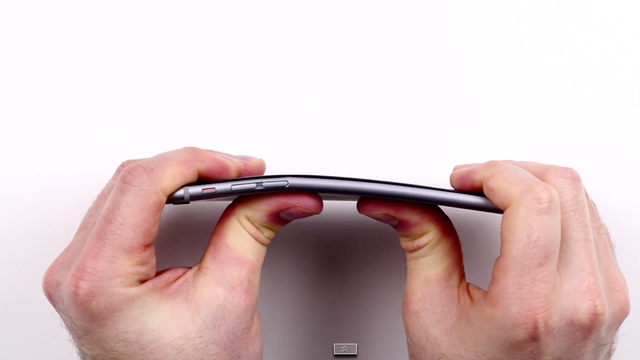
Apple has filed a patent for a flexible phone (or more broadly a flexible portable device), which can be bent or even folded up without damaging its internal components.
Given the bendgate controversy of last year, whereby Apple’s new iPhone 6 models were found to bend slightly (as pictured above) in some cases -- but then, as was later proved, so can any thin metal phone -- there are bound to be a few jokes cracked about this one.
Anyhow, this idea isn’t exactly new, and most companies are looking towards flexible hardware along these lines for the future.
Cupertino’s patent, spotted by Apple Insider, states that the idea is to use a flexible display, and a flexible chassis which will be molded from plastic, thin glass, fiber composites, fabric or a combination of the above materials to make a handset which is deformable without any damage to the unit.
As well as the internal components, the battery will of course need to be flexible, and Apple notes that the "flexible battery may include flexible and rigid portions or may include a lubricious separator layer that provides flexibility for the flexible battery" (the word flexible probably isn’t used enough in this patent, incidentally).
As well as the durability of such a device, and the portability, Apple will also be able to implement fresh innovations in terms of new UI elements -- so for example, making a squeeze of the phone activate a function (with different directions of squeezing doing different things, perhaps).
Whatever Cupertino comes up with, though, there’s guaranteed to be a "gate" scandal hot on the heels of the launch…
Published under license from ITProPortal.com, a Net Communities Ltd Publication. All rights reserved.
-

Sony unveils SmartEyeglass Attach and Smart B-Trainer headset
Publié: janvier 7, 2015, 8:32am CET par Darren Allan
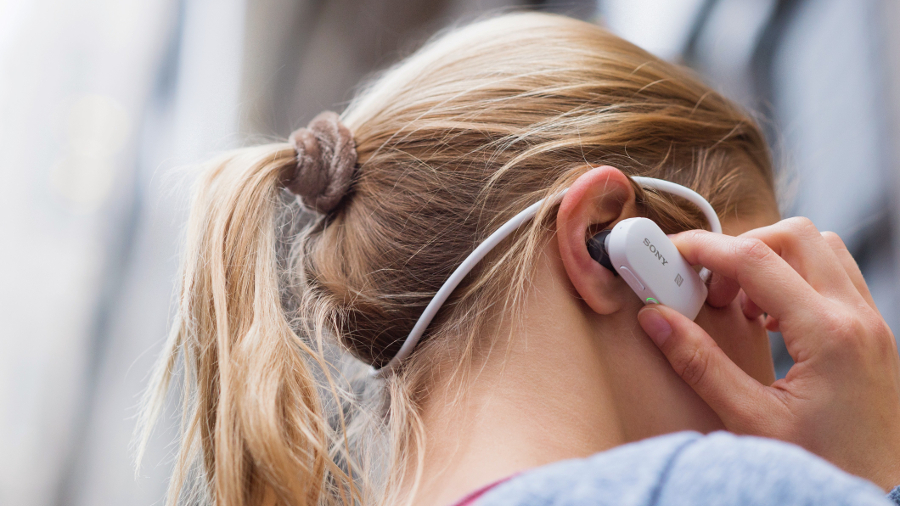
Sony has announced a couple of new products over at CES which are exploring new concepts in wearables -- though it hasn’t got a huge deal to say about them at this stage.
Specifically, Sony has been talking about its SmartEyeglass Attach, a new concept that further builds on the prototype SmartEyeglass Developer Edition. The Attach is basically a single lens display which can be attached to a normal pair of glasses to provide a small heads-up display for the user, which will work with various sport apps (a number of apps are underway).
Sony has also revealed a prototype of the Smart B-Trainer, an all-in-one waterproof headset which is designed for runners. It features multiple sensors and integrated memory, and can deliver music playback -- with the device able to pick out suitable tunes to accompany a particular intensity of workout -- along with voice coaching functionality.
It’s a tad chunky looking at the moment, though (see the image above), but presumably the Smart B-Trainer will be slimmed down a bit before the consumer version arrives. It’s certainly an interesting idea, and we look forward to seeing how involved the voice coaching aspect will be.
Published under license from ITProPortal.com, a Net Communities Ltd Publication. All rights reserved.
-

Facebook liars can start losing their grip on reality
Publié: décembre 30, 2014, 12:06pm CET par Darren Allan
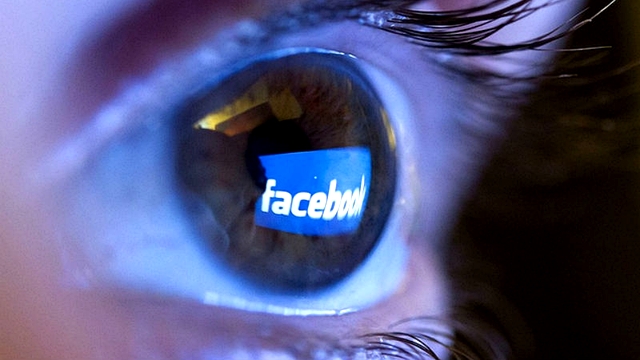
If you have a habit of lying on Facebook, you’re only storing up problems for yourself, a new piece of research has concluded.
The new poll has pinned some numbers on a fairly obvious truth, and specifically, found that lying about how great your life is on the social network could induce paranoia and actual memory problems.
Inventing cool things that are happening in your life which aren’t really -- from little trips to the pub for a night out, to major holidays or even relationships -- is quite common on social networks, it would seem, as two-thirds of web users said they distort the truth with online profiles. In the younger age bracket of those polled, one in five of 18 to 24-year-olds said their profiles actually bore no resemblance to the reality of their lives.
The trouble is that the lies cause stress as folks try to remember all the things they’ve invented which they’re supposed to have done -- and almost a third of those polled (in the study from website Pencourage) said they couldn’t live up to their online persona.
Perhaps the worst of it, though, is people can start confusing the lies with reality -- as one in six people admitted that their memory of events on their online profile was "compromised".
Clinical psychologist Richard Sherry told the Independent that when people try to present themselves in the best light in online profiles, that the "dark side of this social conformity is when we deeply lose ourselves or negate what authentically and compassionately feels to be 'us'".
He further observed: "When this starts to happen, feelings of guilt and distaste towards ourselves can create a cognitive trap of alienation and possibly even a sense of disconnection and paranoia".
Facebook and similar sites can be very useful in terms of keeping in touch, organizing events and so forth, but building an "online life" to show off to hundreds or indeed thousands of "friends" is obviously a foolish endeavor which won’t end well in the long run, one way or another.
Published under license from ITProPortal.com, a Net Communities Ltd Publication. All rights reserved.
-

Employees are the biggest security risk in the cloud
Publié: décembre 19, 2014, 2:00pm CET par Darren Allan

Staff members present the biggest security risk to a company, and the most likely weak point when it comes to data in the cloud.
According to the recent State of SMB Cybersecurity report from CloudEntr, which took in the opinions of 438 IT pros across 20+ different industries, 77 percent said that staff members are the weakest link in their security infrastructure, and a liability when it comes to cloud usage.
Just over half of the professionals surveyed also said that employee use of cloud-based services had made their organization less secure -- and when questioned about what their foremost worry was when it came to cloud security, 75 percent said it was the possibility that staff might be unwittingly exposing company data.
In terms of broad IT security concerns, the elements labelled as the top security challenges were social engineering (48 percent), followed by managing BYOD (42 percent), and then compliance issues (34 percent).
As to how IT departments can better ensure breaches don’t happen? The top response by far was better education of staff on 89 percent, followed by stronger network perimeter security on 62 percent.
The report also found that shadow IT is thriving in businesses. Of the 29 percent of companies that don’t plan on using the cloud at all, almost half of these were aware that their staff were going ahead and using cloud services anyway. And despite this, 80 percent had no formal policy for monitoring or trying to prevent unauthorized cloud usage.
Finally, the report also observed the ‘tipping point’ for SMB cloud maturity is those businesses with between 50 and 99 staff. It’s this size of firm which has the highest usage of cloud services -- and they also take more stock of compliance issues, and use authentication and password management solutions more often than other SMBs.
Published under license from ITProPortal.com, a Net Communities Ltd Publication. All rights reserved.
-

Here are Samsung's predictions for 2015
Publié: décembre 18, 2014, 4:34pm CET par Darren Allan

As the end of every year rolls around, we get the inevitable tech predictions of what will happen next year, and Samsung has produced its own list of trends which it sees dominating in 2015 (and indeed beyond).
Samsung makes five predictions in total, and the first is that wearable tech will create a "new era of power dressing" for business leaders. So we’re talking smart shoulder pads, right? Wrong. This simply refers to the fact that business folks will use wearables to become more organized and productive, starting with smartwatches.
Wearables will become the norm in offices through 2015, and while Samsung certainly has a vested interest in this happening, this is what a lot of analysts are predicting -- and particularly the rise of the smartwatch, which has hitherto seen relatively little adoption compared to fitness wristbands (the main wearable of the moment).
Roger Enright, product director, IT & Mobile Samsung Electronics UK & Ireland, commented: "2014 has been the year that the wearables market has really exploded and broken into the mainstream consciousness. Our own research, commissioned this September with the Centre for Retail Research, estimates that the value of the market in the UK alone will hit £313.6 million by the end of 2014, with total Christmas sales expected to rise by 182 percent (£67.64 million) to £104.7 million compared to 2013 totaling 1,028,800 million units".
Prediction number two ties in with the first, and contends that wearables and apps will allow us to pinpoint "power hours", or the times in our working day when we function most productively -- and business folks will begin to use this to their advantage.
Samsung’s trend number three is that retail shops will adopt virtual reality tech and innovative display solutions, to make their stores (and thus overheads) as small as possible. Expect interactive wall displays, VR gear which can give customers tours of larger items such as cars, and pop-up stores with click-and-collect facilities.
Prediction number four is that smart home systems will become more widely adopted, as home automation gadgets become more widely available and easy to use (with better software and cross-platform functionality).
And finally, Samsung reckons that every child born next year will learn a new subject as a core skill at school -- coding will become as important as reading and writing. The company notes that 90 percent of all jobs which are filled next year will require at least some computer skills, and the EC reckons there will be 900,000 ICT job vacancies come 2020.
Published under license from ITProPortal.com, a Net Communities Ltd Publication. All rights reserved.
Photo Credit: wavebreakmedia/Shutterstock
-

Online freedom is declining
Publié: décembre 18, 2014, 1:09pm CET par Darren Allan
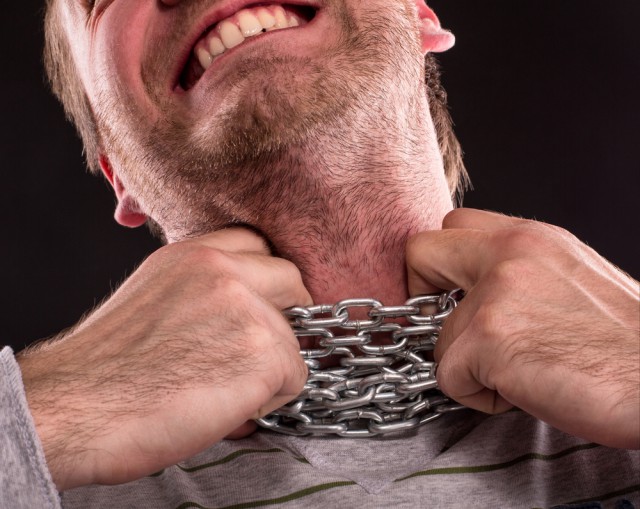
A new report from Freedom House, a watchdog dedicated to promoting the cause of freedom across the globe, has been published with some interesting observations on how free various nations are in terms of their internet access.
The Freedom on the Net 2014 report, spotted by Mashable, involved evaluating some 65 countries, and the bad news is that over half of them, 36 to be precise, actually dipped in their levels of online freedom between May 2013 and 2014.
The report also observed an overall increase in pressure from governments on independent news websites -- the sites which have heretofore been among the few uncensored sources of news in some countries. And more people have been arrested and/or prosecuted for digital activities than ever before.
Freedom House noted: "Dozens of citizen journalists were attacked while reporting on conflict in Syria and anti-government protests in Egypt, Turkey and Ukraine. Other governments stepped up licensing and regulation for web platforms".
Arrests due to online messages concerning political or social issues were found in 38 of the 65 studied countries, and this was most prevalent in the Middle East and North Africa, where detentions of citizens occurred in 10 of the 11 nations examined.
Freedom House also found that 41 of the countries had passed legislation (or at least proposed it) to penalize "legitimate forms of speech online", and to expand government surveillance powers (no surprise there).
The report observed an increase in sophisticated, targeted malware attacks on human rights groups and critics of governments, with such attacks being seen in half of the nations evaluated.
It makes for pretty bleak reading in many respects, though on a more positive note, Freedom House did state: "Despite overall declines in global internet freedom, pushback by civil society was amplified this year by reactions to the NSA surveillance revelations. Awareness of the threats to fundamental rights expanded beyond civil society, as ordinary users around the world became more engaged in securing their privacy and freedom of expression online".
"In select cases, long-running internet freedom campaigns finally garnered the necessary momentum to succeed", added Freedom House.
Published under license from ITProPortal.com, a Net Communities Ltd Publication. All rights reserved.
Photo Credit: Nomad_Soul/Shutterstock
-

Modern technology brings friends and family closer together
Publié: décembre 17, 2014, 11:31am CET par Darren Allan

A new piece of research is arguing against the belief that modern technology is unsociable and interferes with families spending quality time together.
The research, commissioned by Tesco, found that almost a quarter of Brits surveyed felt better connected to friends and family thanks to gadgets like smartphones, tablets and computers.
27 percent of us regularly make video calls to conduct more personal long distance chats with friends and family (and 5 percent admitted to video calling a pet -- we’re not sure if our dog would recognize us, or not, but now we want to try it out).
Those over the age of 55 are more likely to make video calls, with 46 percent of this age bracket engaging in a bit of Skype or similar.
Social networks are, of course, a big part of keeping in touch digitally, and 52 percent of respondents said they felt better connected with family members they follow on social media. Social networks are no longer the domain of youngsters, with 44 percent being friends with their parents on Facebook, and 36 percent are friends with their grandparents.
Overall, Facebook was the top way of keeping in touch with friends and family for 35 percent of those surveyed, with email second on 24 percent, and then video calling on 11 percent.
Tablets are also increasingly being used by multiple family members together, with 42 percent doing so, and one in ten parents using a slate with their child for education purposes.
Aaron Lee, Head of Connected Products at Tesco, commented: "Technology is sometimes thought to over complicate relationships, but our research shows that 23 percent of Brits feel better connected to their family and friends than they did 10 years ago, because of the gadgets available to them".
"We can see that in the way that people increasingly use their tablet with friends and family. It’s become much more of a 'sociable' device than it has been in the past and we reckon lots of families are going to be using it in this way over the Christmas holidays".
These are all fair enough points, but there are still a lot of youngsters (and not-so-youngsters for that matter) with their noses stuck in their phones rather than talking to people from where we’re stood.
Image Credit: William Perugini/Shutterstock
Published under license from ITProPortal.com, a Net Communities Ltd Publication. All rights reserved.
-

Google reveals top searches for 2014
Publié: décembre 17, 2014, 10:00am CET par Darren Allan

Another year is rolling to a close, and needless to say, another kajillion searches have been performed on Google over the course of 2014.
And as ever, Google has taken the time to post about the most searched for terms which users have been desperate for info on throughout 2014.
So what was the number one search? In terms of global searching, it was Robin Williams following the sad passing of the actor back in August.
That was followed by the World Cup unsurprisingly, which was the number one driver of conversation on Facebook throughout the year.
In number three we have Ebola, following the massive outbreak of the disease, with Flight MH370, the missing Malaysian plane, next up. The number five spot was taken by ALS and the Ice Bucket Challenge, and then comes the biggest surprise for us at number six -- Flappy Bird.
Yes, the controversially simplistic game which went viral actually made it into the top ten searches for this year.
Rounding off the global top ten we have Conchita Wurst (the Eurovision winner), ISIS, Frozen (the movie), and the Sochi Winter Olympics.
As for consumer electronics searches? The most searched for term, unsurprisingly, was iPhone 6, followed by Samsung Galaxy S5, Nexus 6 and then Moto G. The Samsung Galaxy Note was in fifth place (we’d have expected that to generate more search traffic than the Moto G -- but that just goes to show the interest in budget phones these days).
Check out Google’s Year in Search site for more details on all these top searches.
Published under license from ITProPortal.com, a Net Communities Ltd Publication. All rights reserved.
-

Facebook and YouTube responsible for over a third of mobile traffic
Publié: décembre 11, 2014, 5:20pm CET par Darren Allan

Ever wondered how much mobile traffic those two behemoths of the mobile (and indeed desktop) world, Facebook and YouTube actually use?
Well, as far as North American traffic goes -- as measured by a Sandvine report compiled by BI Intelligence for Business Insider -- in September, Facebook accounted for 19 percent of mobile traffic, and YouTube snagged almost as much at 18 percent.
So combined, the two have 37 percent of traffic, well over a third of total mobile traffic, at least in the American market.
General traffic through a mobile web browser was in third place, considerably behind on 11 percent, followed by streamed video on 6 percent, and encrypted traffic on 5 percent. The next biggest service was Instagram, tied with Netflix and Google Cloud on 4 percent, ahead of iTunes and Pandora on 3 percent.
A recent Sandvine report from November entitled "Global Internet Phenomena Report 2H 2014" noted that Facebook video autoplay sparked a major increase in mobile usage, and indeed prompted a jump in average subscriber usage by up to 60 percent on mobile.
That report also pegged Netflix as the leading video streaming service in North America by far, with 35 percent of downstream traffic in the peak evening hours compared to Amazon Instant Video’s 2.6 percent.
Photo Credit: Pressmaster / Shutterstock
Published under license from ITProPortal.com, a Net Communities Ltd Publication. All rights reserved.
-

McAfee: 2014 will be remembered as 'the Year of Shaken Trust'
Publié: décembre 11, 2014, 3:42pm CET par Darren Allan

Intel Security has released the McAfee Labs Threats Report for November 2014, which includes an analysis of the threats which hit in Q3, and the upcoming specters we’ll be facing in 2015.
So, during the third quarter, McAfee detected some 307 new threats every minute, with overall levels of malware up a worrying 76 percent year-on-year. Mobile malware grew as well, up 16 percent.
There was also a distinct increase in fresh attempts to exploit internet protocols, such as SSL vulnerabilities which reared their heads over the course of 2014 like Heartbleed.
Vincent Weafer, Senior Vice President, McAfee Labs, commented on the various incidents: "The year 2014 will be remembered as 'the Year of Shaken Trust'. This unprecedented series of events shook industry confidence in long-standing Internet trust models, consumer confidence in organizations’ abilities to protect their data, and organizations’ confidence in their ability to detect and deflect targeted attacks in a timely manner".
He further noted: "Restoring trust in 2015 will require stronger industry collaboration, new standards for a new threat landscape, and new security postures that shrink time-to-detection through the superior use of threat data. Ultimately, we need to get to a security model that’s built-in by design, seamlessly integrated into every device at every layer of the compute stack".
So what sort of threats can we expect to emerge next year? McAfee reckons one theme will be your "average" malware author attempting to use malware that avoids detection for a lengthy period, to sit on a device and collect as much data as possible -- expect cyber-espionage for the masses, essentially.
There will also be increased targeting of Internet of Things devices, Point of Sale (POS) attacks, and a growth in mobile attack vectors, with an increased availability of malware generation kits which will let less skilled cyber-criminals more easily target smartphones.
The tremors of Shellshock will also be felt for some time, with McAfee noting: "McAfee Labs predicts that the aftershocks of Shellshock with be felt for many years given the number of potentially vulnerable Unix or Linux devices, from routers to TVs, industrial controllers, flight systems, and critical infrastructure".
Image Credit: lolloj/Shutterstock
Published under license from ITProPortal.com, a Net Communities Ltd Publication. All rights reserved.
-

Apple Watch to kickstart wearables in 2015
Publié: décembre 10, 2014, 6:25pm CET par Darren Allan
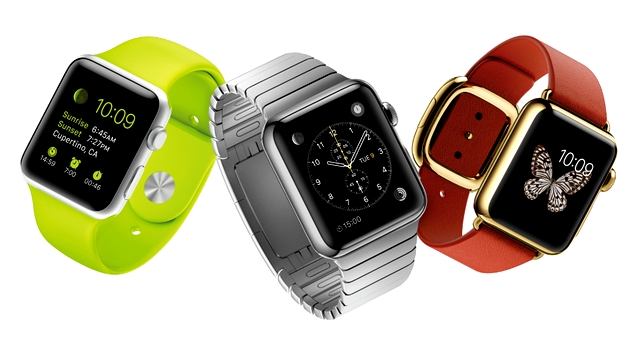
Another report has emerged pointing to 2015 as being a massive year for wearables, with the gadgets expected to explode in popularity.
In particular the smartwatch is expected to finally take off, with the Apple Watch helping to drive that category forward when it’s released next spring. Thus far, fitness bands have easily topped the wearables category, but smartwatches are expected to accelerate rapidly now they’re shedding the geeky image with the likes of smart-looking Android Wear devices, as well as Apple’s effort.
The report from Forrester, entitled "Five Urgent Truths About The Future Of Wearables That Every Leader Should Know", was highlighted by Reuters.
The research predicts 10 million sales for the Apple Watch next year (a more conservative number than UBS which forecasts 24 million), and the overall number of folks using wearables should triple by the close of 2015.
The report’s consumer polls -- which took in the opinions of 13,000 Europeans and 4,500 Americans -- found that the latter were more likely to adopt a wearable, with 45 percent saying they would, considerably more than the 32 percent of Europeans. Smartwatches and wrist-worn health/fitness bands are the most likely gadgets consumers can see themselves wearing.
However, wearables are set to be even more important in the business world next year, with business decision makers also polled, and 68 percent saying that developing a wearables strategy was now a priority for their company.
In the report introduction, Forrester noted: "In the future, wearables will offer marketers a wide array of tools for creating deeper engagement with customers -- through employee-worn wearables in customer service, wearables that customers buy for themselves, or even wearables that you give to your customers to interact with you".
Published under license from ITProPortal.com, a Net Communities Ltd Publication. All rights reserved.
-

It's your fault for the huge rise in data breaches
Publié: décembre 8, 2014, 9:21am CET par Darren Allan
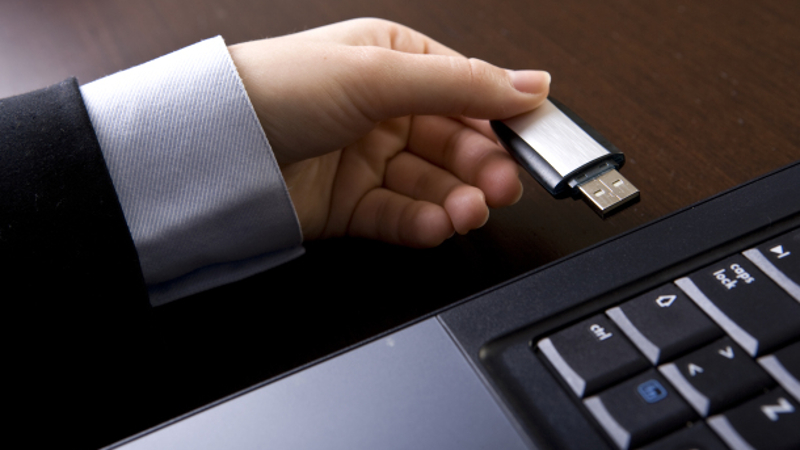
New information which was obtained via a freedom of information request in the UK has found that there has been a worrying increase in the amount of data breaches which are caused by human error.
The figures were brought to light by an FOI request made to the Information Commissioner’s Office by Egress Software Technologies, an encryption provider.
Egress found that during the first quarter of 2014, 25 percent of reported data breaches were down to the accidental loss or destruction of personal data -- which is up 15 percent on the second half of 2013. A large percentage of these incidents, 43 percent to be precise, were cases of sensitive info being accidentally emailed, faxed or posted to the wrong person.
In actual fact, only 7 percent of breaches happened due to technical failures, with 93 percent occurring as a result of human error, lack of care when dealing with data, or poor processes which organizations have in place.
Indeed, Egress notes that when it comes to penalties levied by the ICO for data slips, no fines have actually been imposed concerning breaches caused by technical failures, whereas £5.1 million has been extracted from various organizations for mistakes made when handling sensitive data.
£600,000 worth of penalties were imposed for emailing sensitive details to the wrong recipient alone.
CEO of Egress, Tony Pepper, commented: "What these statistics demonstrate is that training alone is not the answer. Organizations have put huge emphasis on process driven training, but the fact that 93 percent of all incidents between January and March 2014 were caused by human error or failure to carry out effective process demonstrates that a change in approach is needed".
"Organizations need to make data protection a priority. Where possible, fax and post must be replaced by secure electronic communication that is procured in its own right. Solutions that are easy to use yet offer comprehensive protection and control have been developed to mitigate the risk of a data breach, so it is mystifying why organizations are not implementing them to reduce their liability".
When looking at reported breaches between April and June 2013, compared to the same period this year, healthcare organizations topped the list of offenders with 91 breaches that doubled up to 183 in 2014. The insurance sector saw increases of 200 percent, and education was up 56 percent among other large increases.
To date, since 2010, the ICO has issued penalties which total over £6.7 million, with public sector organizations being hit by £4.5 million of that sum.
Published under license from ITProPortal.com, a Net Communities Ltd Publication. All rights reserved.
-

BBC Sport app arrives on Windows Phone 8
Publié: décembre 5, 2014, 12:19pm CET par Darren Allan
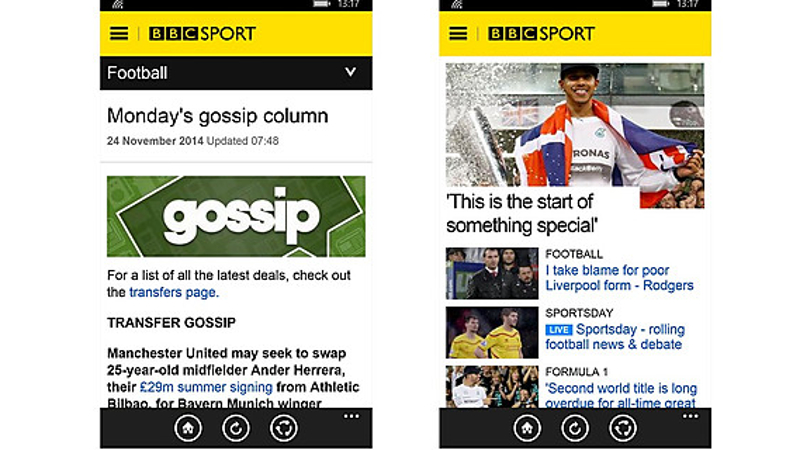
The BBC has finally launched its sport app on Windows Phone, a long, long time after it was introduced on Android and iOS.
Of course, Windows Phone users aren’t exactly unfamiliar with the situation of waiting for an app to arrive, but at least it’s here now for sports fans with Microsoft-powered mobiles. So, what does it offer exactly?
Well, the not so great news about the BBC Sport app on Windows Phone is that it’s pretty basic at launch – and for the moment it simply covers core aspects, namely live sport news and analysis, statistics, tables and results.
The home screen shows top sport stories, and there are sections for UK and global events, along with a Live Tile that displays current sport headlines. You can also share stories with friends.
The Beeb notes that videos aren’t available on the Windows Phone app, and neither are push alerts, although they may be introduced in the future.
On the Beeb’s blog, Ryan Thomas Hewitt noted: “We will monitor app usage and user feedback, alongside other operating systems, and use this to make decisions about additional functionality for the Windows Phone app. As a publicly funded organization the BBC needs to factor in how large an audience can be reached with a particular app.”
And that audience isn’t huge in the case of Windows Phone, although the number of WP users visiting the BBC Sport mobile website is up 54 per cent year-on-year, which is the main reason why this app has now been crafted (in total last month, there were 800,000 Windows Phone users who visited the Beeb’s sport site).
The app works with Windows Phone 8 and 8.1, and you can download it here.
Published under license from ITProPortal.com, a Net Communities Ltd Publication. All rights reserved.
-

Microsoft's personal assistant Cortana heading to Windows 10 soon
Publié: décembre 5, 2014, 8:21am CET par Darren Allan
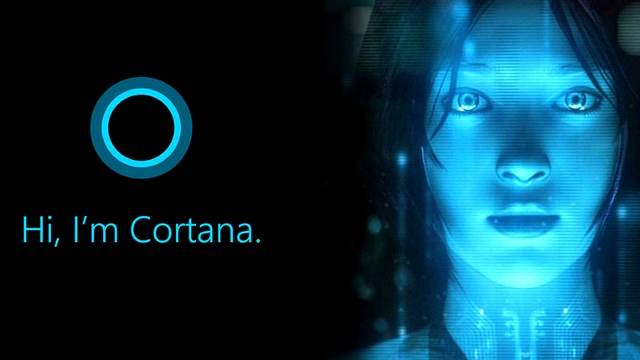
Microsoft is planning on bringing Cortana to Windows 10 in January, or that’s the word on the operating system street, anyway.
This rumor comes from an inside source of Mary Jo Foley’s (C-Net), but it is hardly unexpected, as we’ve heard quite a lot about Cortana supposedly making her (or its, perhaps) way over from Windows Phone to Redmond’s desktop OS.
Cortana is Microsoft’s digital assistant -- or version of Siri, if you prefer -- and previously there has been plenty of speculation about it coming to Windows 10, with references and Cortana files found in the OS just after the first Technical Preview was released.
Note that there’s a Consumer Preview of Windows 10 coming in January, but interestingly C-Net says that while this is still on schedule, Cortana "may" (in C-Net’s source’s words) wing her merry way across in the January Technical Preview -- a new tech preview launched in that month.
And this will be followed by monthly releases of new Technical Previews, presumably adding new major new features as we go along. We guess if Cortana doesn’t make the January release, then February or March are very likely to see the assistant finally pitch up.
The January Technical Preview is also expected to see Continuum, a new feature which allows for an easy transition between touch and non-touch modes of operation, aimed particularly at hybrids like Microsoft’s own Surface (which can be used as a notebook, or a tablet in touch mode with the keyboard detached).
Lots of interesting goodies are just around the corner, in short…
Published under license from ITProPortal.com, a Net Communities Ltd Publication. All rights reserved.
-

Russia and China have the best hackers
Publié: décembre 4, 2014, 8:44am CET par Darren Allan

So which country boasts the most skilled hackers? Well, that would be Russia and China, at least according to a new report from MWR InfoSecurity.
In a survey of UK cyber-security pros, MWR found that 34 percent believed the most skilled hackers are Russian. China was second, although quite some distance behind Russia with 18 percent saying Chinese hackers were the most highly skilled.
Only 10 percent thought that the UK produced the best hackers.
Russia and China are, of course, thought to be the origin of a considerable number of cyber-threats which are leveled at the western world, both government and corporate.
As to why Russia and China are firmly in the lead when it comes to hacking skills, 11 percent said it was due to more investment, 14 percent put it down to a better education, and 17 percent believed they were more skilled due to being politically motivated. Mind you, the largest amount of those surveyed -- 31 percent -- said it was a combination of all three of these factors, which is likely the truth of the matter.
Martyn Ruks, Technical Director at MWR InfoSecurity, commented: "The findings clearly show the perception that hackers in countries like Russia and China are better funded and educated. Regardless of whether this perception is true or not, the UK should take this as an indicator that cyber really needs to start making its way up the socio and political agendas".
"Training security consultants so they are armed with the specialist knowledge to protect against today’s threats is vitally important. If we are to keep pace we must understand the nature of attacks in order to best defend against them".
Published under license from ITProPortal.com, a Net Communities Ltd Publication. All rights reserved.
-

New battery tech can charge your smartphone in just 30 seconds
Publié: novembre 25, 2014, 4:11pm CET par Darren Allan
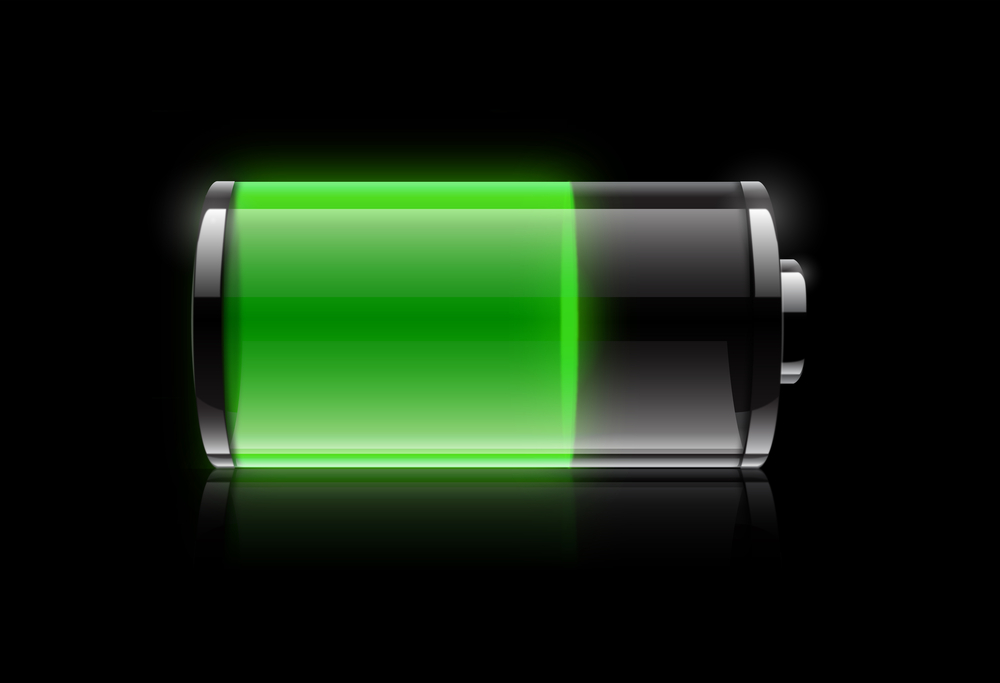
Fancy fully charging your phone up in just half a minute? Even with modern smartphones, a full charge from close to zero can take a good long wait and a major inconvenience, particularly when you’re having to plug the thing into a power outlet if you don’t have a handset with wireless charging.
While there are already "turbo charger" systems from, for example, Motorola, which can juice up a phone in just 15 minutes, an Israeli firm reckons it has a system which can charge a handset with a full day’s worth of power in just 30 seconds.
The company in question is the Roman Abramovich backed StoreDot, and the Tel Aviv outfit claims to have developed a battery that can store a higher charge much more quickly via nano-technology. Reuters notes that "nanodots" (a form of bio-organic peptide molecules, apparently) used in the battery means it acts like an incredibly dense sponge to soak up power from the mains (and retain it very effectively).
This isn’t ready for production just yet, as you might have guessed, and the current prototype wouldn’t have any chance of fitting into a smartphone. However, StoreDot thinks it will be able to hone and refine the battery to be ready for production lines in 2016 -- so far from the distant future. If they can indeed get this shrinking act done on schedule…
The downside? Doron Myersdorf, the founder and CEO of StoreDot, notes that phones boasting such super-quick charging tech would cost around $100 to $150 more than current models -- so these batteries won’t come cheaply, at least to begin with.
The battery tech could have an even bigger impact on the car world, with the possibility of a car battery that can be charged in a few minutes as opposed to overnight, which could be a massive breakthrough for electric cars and the likes of Tesla.
Photo Credit: Thomas Pajot/Shutterstock
Published under license from ITProPortal.com, a Net Communities Ltd Publication. All rights reserved.
-

Businesses are failing to take security seriously enough
Publié: novembre 21, 2014, 7:14pm CET par Darren Allan

Companies are still failing to properly protect themselves from potential attacks and hackers, with security not being given enough weight of consideration -- and indeed, many firms haven’t even covered the fundamentals of keeping intruders out of their networks and data.
This is according to Neira Jones, a security expert who chairs the Global Advisory Board for the Centre for Strategic Cybercrime & Security Science, who criticized businesses for failing to "fix the basics" of protecting data, and lacking sufficient "cyber-security awareness programs".
She told Computing: "If you’re a large organization you’ll have resources and you’ll have departments and there may be cyber security, but at the end of the day, you’re not in the business of security. So awareness programs are a low priority and security isn’t understood; staff at large have a day job to do and they don’t feel that’s part of their responsibility".
She also noted that because staff are relatively uneducated and don’t think much about company security in general, more sophisticated phishing emails are having more success, because they aren’t so readily identifiable as suspect or potentially malicious messages.
Jones observed that spam mail containing links leading to malicious code is on the increase, as are phishing mails in general – which is unsurprising if they are finding greater levels of success. A recent survey from HP’s TippingPoint network security division revealed that 69 percent of IT professionals have to deal with phishing attacks at least once a week, and the main targets are customer and financial data.
She observed: "Criminals are becoming a lot more effective at delivering their payloads. A phishing campaign of only 10 emails has more than a 90 percent chance of getting a click and when you get users who are unaware, that’s an explosion waiting to happen".
We’ve always insisted that staff training is a massive part of security, and the more educated your employees are on malware and security risks, the better, for obvious reasons. Security is everyone’s job, not just the IT department’s.
Published under license from ITProPortal.com, a Net Communities Ltd Publication. All rights reserved.
-

81% of businesses set to move from Windows Server 2003 before support ends
Publié: novembre 18, 2014, 4:11pm CET par Darren Allan

A new report shows that the vast majority of businesses who are still running Windows Server 2003 are planning to upgrade before support for the OS ends on 14 July 2015.
This survey comes from Avanade (it was conducted by Vanson Bourne), and found that 63 percent of businesses are still running Server 2003. 81 percent of IT professionals whose company was still using Windows Server 2003 said they would shift from the platform before the deadline next summer.
Of those planning on making the upgrade, 40 percent will make the move before 2014 is out, and 41 percent will do so next year, before July rolls around. As for what they’re shifting to, three-quarters of respondents said they were going to use the cloud as part of their new system. 41 percent indicated that they intended to move "some" of their IT estate to the cloud, 29 percent said "most", and 7 percent will move their entire estate to the cloud.
Of the 19 percent of companies who didn’t have plans for a pre-July migration in place, 8 percent did intend to move, just after that deadline. 8 percent weren’t sure what they were going to do, and 3 percent said they didn’t have any plans whatsoever.
Paul Veitch, Cloud and Integration Practice Lead at Avanade UK, commented: "It’s important that lessons are learnt from the end of support of Windows XP when some customers left it too late to upgrade before the April deadline".
"The good news is that it appears CIOs are moving away from 'big bang' upgrades where they have to make sizeable last minute changes to their IT estates because of end-of-life warnings. They are now starting to review the updates to both hardware and software with more regularity and make incremental upgrades as part of an 'evergreen' philosophy".
Published under license from ITProPortal.com, a Net Communities Ltd Publication. All rights reserved.
-

Mastercard and Visa working on new online payment verification system
Publié: novembre 17, 2014, 8:54am CET par Darren Allan
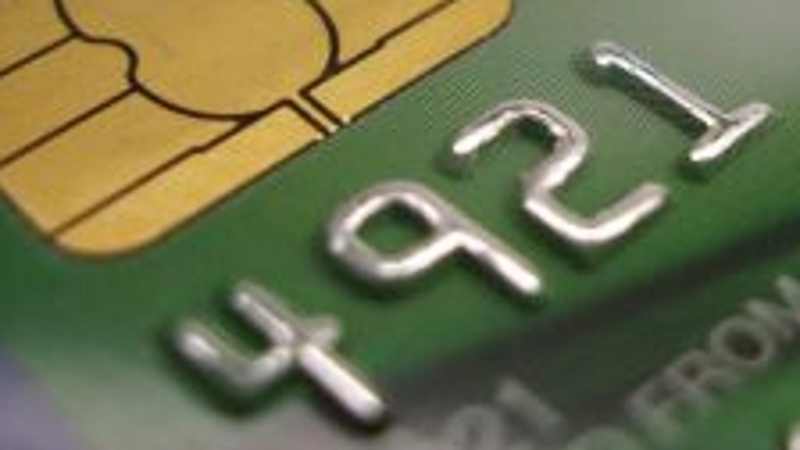
Credit card giants Visa and Mastercard are planning to get rid of their current online security verification system, and replace it with something a bit more modern and secure.
You’re probably familiar with either Verified by Visa or MasterCard SecureCode, which pop up when you make an online purchase, just before the payment is officially put through. They ask you to input letters from an extra password to verify that it’s actually the card owner making the purchase -- but in contemporary terms, this is a relatively unsophisticated security measure.
Folks are prone to forgetting their password, and the system can be sluggish to load, plus it’s potentially open to fraud and imitation password pages.
At any rate, a new system is coming in, the Guardian reports -- and initially, that will likely be a code sent to a registered mobile, which is obviously different every time (and dispenses with the need to remember a password).
Eventually, the plan is to move to some kind of fingerprint biometric or similar for increased security still. The Guardian even mentions the possibility of a wristband which identifies a user through the unique rhythm of their heart beat. Some banks have already adopted separate pieces of hardware for a second authentication factor, like First Direct’s secure key, a little calculator-like pad which sends a unique one-time code.
What we don’t want is to end up in a situation where we have multiple gizmos for banking, card payments and so on, which then end up getting lost.
Ajay Bhalla, president of enterprise security solutions at MasterCard, told the Guardian: "All of us want a payment experience that is safe as well as simple, not one or the other. We want to identify people for who they are, not what they remember. We have too many passwords to remember and this creates extra problems for consumers and businesses".
Published under license from ITProPortal.com, a Net Communities Ltd Publication. All rights reserved.
-

Most parents believe Facebook is a bad influence on their kids
Publié: novembre 14, 2014, 12:30am CET par Darren Allan
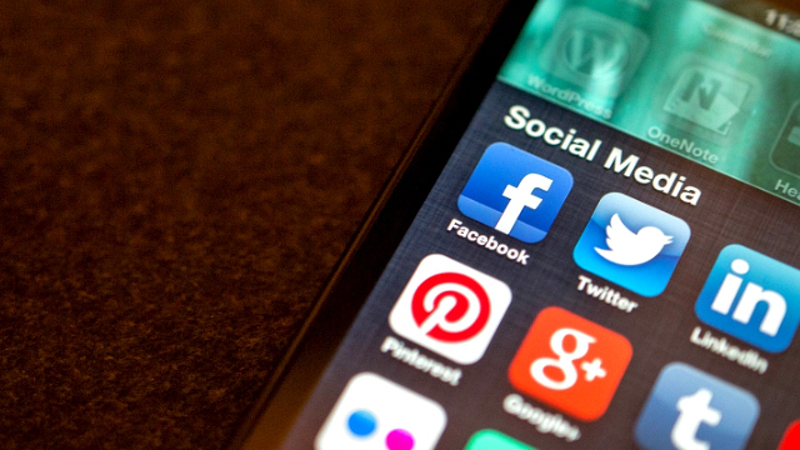
A new piece of research has emerged showing how parents feel about the potential positives and negatives of their offspring’s use of technology -- and social networks didn’t come off well.
The Parenting in the Digital Age report was carried out by Hart Research Associates for the Family Online Safety Institute (FOSI), and found that on an overall level slightly more parents (53 percent) felt that the benefits of tech outweigh any drawbacks. The boon foremost in parents’ minds was the potential for education and learning online and with technological devices.
Very few felt the opposite way, just 5 percent, while the remaining 42 percent were undecided as to whether technology was a good or bad influence on their child’s life.
There were areas where parents were concerned, and predictably one of those was online gaming, which only 44 percent of those surveyed felt the benefits were stronger than any potential harm, and 38 percent in the case of the child owning a smartphone.
The biggest black mark, however, was put against social media sites such as Facebook and Twitter, where only 26 percent said the benefits trumped the harms, 31 percent felt they were equal, but the majority of 43 percent believed the harm outweighed any possible boons.
The vast majority of the parents surveyed (95 percent) said they monitored their child’s use of technology at least "somewhat closely", and 55 percent said they watched their kids "very closely". The younger the child, the more monitoring was done (unsurprisingly).
FOSI noted: "It is clear that parents recognize both benefits and harms of technology, and parenting in the digital age involves careful navigation of these elements".
Published under license from ITProPortal.com, a Net Communities Ltd Publication. All rights reserved.
-

Steve Wozniak believes Apple should have brought out a phablet iPhone three years ago
Publié: novembre 13, 2014, 5:55pm CET par Darren Allan
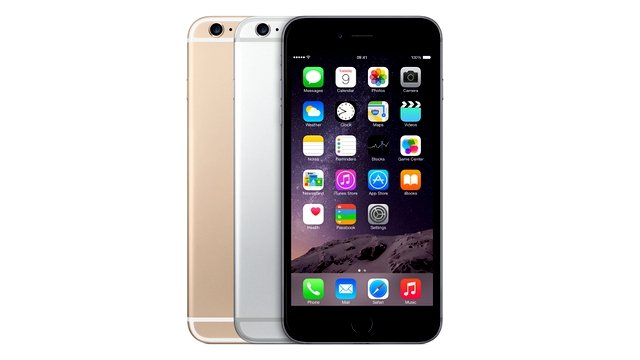
It was a mistake to leave the iPhone phablet so late in the day, according to Apple co-founder Steve Wozniak, who believes that Cupertino should have got a large-screened smartphone out there way before the company actually managed the feat.
Wozniak was taking to CNN Money, and he said that the iPhone 6 Plus had arrived no less than three years late.
"Apple could have had a much bigger share of the smartphone market if it had a larger-screen iPhone for the past three years," he observed. "It could have competed better with Samsung".
Of course, he didn’t pluck that figure out of the air -- three years ago is when Samsung first pushed out its original Note phablet, so he’s basically saying Apple should have been on the scene at the same time as its smartphone rival.
For a long time, Apple maintained smaller screens on its iPhones in the belief that this made them easier to use and handle, and it was only two years ago that Apple finally increased the screen size from 3.5in to 4in.
The new larger iPhones have certainly been popular, setting new Apple sales records (again), and we’ve seen stock issues concerning the phablet -- although that was to do with supply as much as demand.
Wozniak also shared his thoughts on the new Apple Watch, though that device and smartwatches in general have left him unmoved.
He said: "I kept saying that I’d like to have a smartphone on my wrist, so I bought a few smartwatches when they first came out. I got rid of them so quick. I got real negative on smartwatches".
Wozniak then called the Apple Watch a "luxury fitness band", but did admit he was going to give it a try, and that the device was "more distinctive than all the others".
Published under license from ITProPortal.com, a Net Communities Ltd Publication. All rights reserved.
-

AVG: Seven in ten teens don't know all their 'friends' on Facebook
Publié: novembre 12, 2014, 1:04pm CET par Darren Allan

Security firm AVG has published a new report looking at online privacy which shows the considerable amount of regret admitted by some teenagers when it comes to things they have posted online -- and the fact that seven in ten teens don’t know everyone they have befriended on social media.
The Digital Diaries research, which quizzed some 4,000 teenagers aged between 11 and 16 -- not that those under 13 are technically teenagers, but we’ll let that slide -- found that 28 percent of teens said they later regretted posting something online.
A third of teens had asked somebody to remove a piece of online content posted about them, either because they didn’t like it (in 61 percent of cases), or because it was overly personal (28 percent).
18 percent of those who had wanted content removed said that it was something that their mother posted.
Furthermore, 14 percent admitted that they’d been asked by someone else to remove content which they had shared on the web.
When it came to Facebook and privacy, while 70 percent claimed to be savvy enough to have changed their settings to make it more difficult for people to find their account, only 29 percent actually properly knew all their friends on social networks. Doubtless largely due to the fact that these things become a popularity contest, and you can’t be seen to have too few "friends"…
Finally, 38 percent were aware that a family member had looked at their device without permission, and 18 percent said someone in the family had found private details which they hadn’t wanted anyone else to see.
Emily Cherry, Head of Participation at the NSPCC, commented: "Young people obviously want to get the most out of social media by sharing information. But they should be aware that people are not always who they appear to be online and may pose a threat to them. If we don’t act now and help to guide them, in particular around contact with strangers, we could be facing a privacy time bomb. Online is as important to young people as eating. It is the most important part of their world throughout the day. If we don’t get this right, we will be failing to give them the vital protection they need".
Published under license from ITProPortal.com, a Net Communities Ltd Publication. All rights reserved.
-

Forget iOS 8, a hacker gets Windows 98 running on iPhone 6 Plus
Publié: novembre 12, 2014, 9:11am CET par Darren Allan
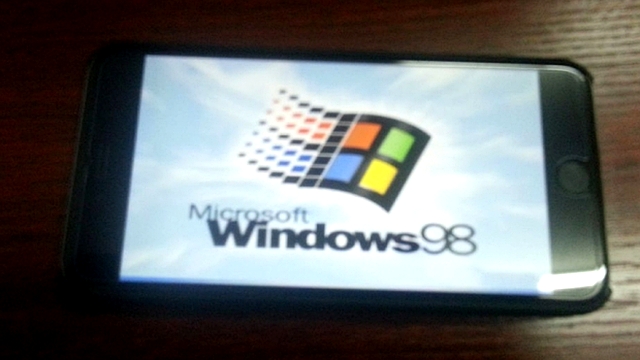
An enterprising Chinese hacker has decided to ditch iOS 8 from his new iPhone 6 Plus, and instead run… Windows 98.
Yes, Microsoft’s venerable desktop OS runs quite readily on Apple’s new phablet by all accounts, even if there isn’t much point to installing an old incarnation of Windows on a modern smartphone.
The news comes from a Chinese tech forum, bbs.feng.com, via the Telegraph, which reports that Windows 98 was put on the phone using the iDOS emulator (which lets folks play old DOS games on their iPhone).
There are images provided (check one of them out above) and it’s certainly a novel thing to see Windows 98 on an iPhone, but as we’ve already said, the practical applications of this are, well, pretty much zero. Particularly considering the screenies mostly show error messages as Windows struggles to cope with its new environment ("Where am I… a what-phone now?"). Of course, they’re all in Chinese so we don’t have a clue what they say.
At any rate, who knows, maybe we will see the convergence of desktop and mobile operating systems for real before you know it. While Apple is only edging iOS and OS X closer together right now, Microsoft appears to be going all-out for the 'one OS to rule all devices'.
Image Credit: xyq058775 on bbs.feng.com (via Telegraph)
Published under license from ITProPortal.com, a Net Communities Ltd Publication. All rights reserved.
-

Pi-Top launches: Get your own DIY Raspberry Pi laptop for $285
Publié: novembre 11, 2014, 11:41am CET par Darren Allan
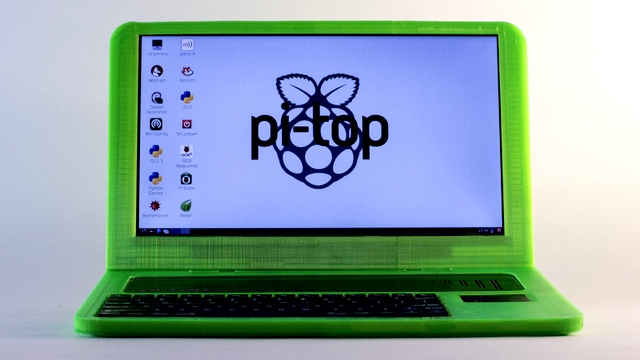
The Pi-Top, which is a do-it-yourself Raspberry Pi laptop, has now been launched, and has already easily surpassed its crowd-funding target.
If you missed this one when it first hit the headlines back in September, the invention is a 3D-printable full laptop built around the famous tiny and inexpensive Raspberry Pi computer.
The kit includes an injection molded case and 3D printer STL files for those who would prefer to print their own case, a battery, keyboard, a 13.3in display, Wi-Fi adapter, wiring, and full instructions on how to build your very own laptop.
There's nothing massively technical about the process, and indeed the inventors of the Pi-Top, Ryan Dunwoody and Jesse Lozano, note that no soldering kit is necessary, and even a beginner should be able to complete the project in a single evening.
On the Indiegogo page, the creators note: "We want you to be able to create your own products and ideas. The Pi-Top kit is the start of a journey that will see you gaining the skills to build and code your own hardware".
The Pi-Top project has already well exceeded its funding goal of $80,000 (£50,000) on Indiegogo -- it's currently at $125,000 (£78,000) with a few days still left to run.
As for the price of the full Pi-Top kit, that runs to $285 plus shipping (with estimated delivery set at May next year).
Yes, you can get a Chromebook for that money, but as an educational tool and experience, the Pi-Top is certainly a thoroughly laudable effort, and it's doubtless going to be very satisfying to be able to build and customize your very own computer.
Published under license from ITProPortal.com, a Net Communities Ltd Publication. All rights reserved.
-

Elon Musk plans to launch 700 satellites to deliver global internet access
Publié: novembre 11, 2014, 8:57am CET par Darren Allan

Elon Musk is apparently set to bring about a plan to launch a bunch of satellites into space with the intention of delivering internet access around the world.
The entrepreneur who is now more famous for his electric cars via the firm he co-founded, Tesla Motors, is no stranger to space shenanigans given that he also founded SpaceX (Space Exploration Technologies Corporation) back in 2002 to explore and perfect rockets and space transport in general.
According to sources who spoke to the Wall Street Journal, Musk has been talking to telecoms entrepreneur Greg Wyler, who founded WorldVu Satellites, which owns chunks of 12-18GHz spectrum, the rights to which Wyler took with him when he left Google to form his own outfit.
That spectrum could be used by a large array of satellites to deploy net access, and apparently Musk and Wyler are proposing to launch something like 700 satellites, a constellation some 10 times the size of the largest existing fleet.
The satellites would be cheaper models, and would weigh in at around 100kg, considerably smaller than any existing satellite in commercial use (in fact half the size).
The cost of the project is thought to be around the billion dollar mark, but at this point this is of course a lot of hearsay. It's not clear if this is a philanthropic venture designed to bring net connectivity to more remote parts of the globe, or whether it will be a more profit-driven enterprise.
One thing is clear, though: Wyler couldn't get Google to bank on his plan, which is why he departed, and that gives you an idea of the scale of the challenge.
Google does, of course, have its own plan to tackle the lack of net access in remote areas with Project Loon.
Published under license from ITProPortal.com, a Net Communities Ltd Publication. All rights reserved.
-

The Internet Arcade lets you play 900 gaming classics in your browser
Publié: novembre 5, 2014, 11:14am CET par Darren Allan

Fancy a spot of retro gaming? Never mind faffing around with emulator software, these days you can play the oldies and goldies right in your browser -- and a new site which has just launched offers almost a thousand arcade classics.
The Internet Arcade boasts some 900 arcade games, and runs them via a modified version of the JSMESS emulator, which was tinkered with by the site curator Jason Scott.
Scott does warn, however, that the large library of games hasn't been fully vetted, and some may be broken to various degrees. He states: "Of the roughly 900 arcade games (yes, nine hundred arcade games) up there, some are in pretty weird shape -- vector games are an issue, scaling is broken for some, and some have control mechanisms that are just not going to translate to a keyboard or even a joypad".
But the good news is that most are "good enough" or better, with Scott claiming that many feel close to a perfect emulation of the arcade game in question. It helps if you have a speedy machine, and what browser you use will also make a difference -- as Eurogamer, which spotted the launch of the site, notes, the best bet is apparently Firefox. Chrome should be fine, though, albeit with a more sluggish rendering in some cases (to the tune of 20 percent slower on average).
Games which are incorporated into The Internet Arcade include Defender, Moon Cresta, Tron, Pitfall II, PacMan, Outrun, Street Fighter II, Zaxxon, and one of our favorite button bashers of all time, Track & Field.
We had a quick dash on the latter, with our 100 meters sprint threatening to destroy the keyboard (and we only managed an 11 second time somehow -- bah). You can check what the keys for a game are using the menu accessed with the Tab key, incidentally -- or better still, plug in a joypad.
Published under license from ITProPortal.com, a Net Communities Ltd Publication. All rights reserved.
-

The slow pace of smart technology adoption is set to cost the UK economy £9bn in 2015
Publié: octobre 27, 2014, 9:40am CET par Darren Allan
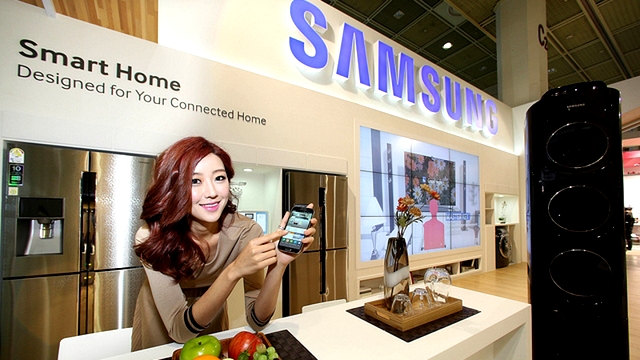
According to the Smart Society Barometer report from Samsung, the UK economy stands to lose out on over £9 billion over the next year, due to the pace of smart tech adoption being too sluggish.
According to the research, which involved speaking to 1,000 British companies and 2,500 consumers, UK businesses stand to lose up to £5.6 billion over the next 12 months by failing to utilize smart technology appropriately in their organization. And UK consumers will pay to the tune of £3.6 billion for a lack of understanding of how smart tech could benefit them.
Indeed the effects of this "smart deficit", as Samsung calls it, are already here, with 27 percent of businesses admitting that they lost a contract or client because they didn't have the right smart technology to hand. In the telecoms industry, that number was 31 percent of companies missing out on possible work, with 37 percent of finance firms also admitting losing contracts due to a lack of smart adoption.
When questioned on how much money the further adoption of smart tech could save their companies, UK business leaders stated an average of £81,000 over the next year. However, one in ten businesses have yet to adopt any smart tech whatsoever -- and IT managers also said that just 11 percent of their budget was going towards the smart stuff.
As for the consumer angle, the areas where UK citizens will lose out on money (some £3.6 billion of it, as we mentioned) due to failing to adopt smart technology themselves include smart meters for utilities, and smart home devices that can also produce energy savings. These have the lowest adoption rates at just 6 percent for both, yet they are among the products most respondents said they were keen to purchase in the future (60 percent and 63 percent indicated this for meters and smart home gadgets respectively).
24 percent of consumers said that their lack of understanding of what smart tech is, and what it can do for them, is the main barrier to them adopting the technology.
Andy Griffiths, President of Samsung UK & Ireland, commented: "The Smart Deficit that we have identified through the Smart Society Barometer should act as a wake-up call for the technology industry and its partners. Smart technology adoption is happening and where it is being used most effectively, the benefits are already being felt both by individuals and businesses".
"If we are to accelerate as a smart society, we need to fully understand how to get the most out of this technology. At Samsung, we understand that in order to help achieve this, we must play our part in educating businesses and consumers on unlocking the true potential that smart technology can bring to the UK".
Published under license from ITProPortal.com, a Net Communities Ltd Publication. All rights reserved.
-

Chromebook shipments rise 67 percent this quarter
Publié: octobre 24, 2014, 11:08am CEST par Darren Allan
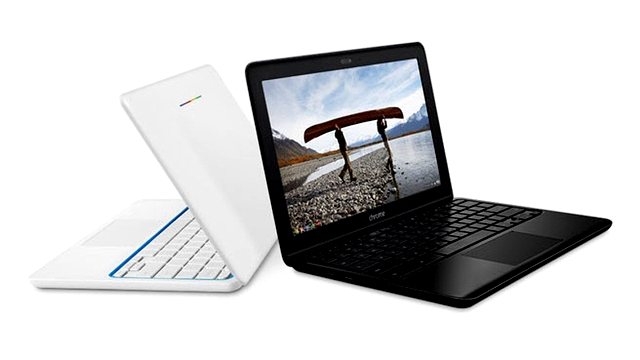
Chromebooks continue to shine in terms of growth according to the latest figures from ABI Research, with the notebooks up 67 percent quarter-on-quarter in terms of shipment levels.
And indeed ABI forecasts that Google's cloudy laptops will double in quantity when it comes to year-on-year.
Which is the leading Chromebook vendor? Acer is at the top, followed by Samsung and HP, and this trio accounted for 74 percent of all Chromebooks sold during the first half of this year. They're expected to retain solid market control in the second half of 2014, as well -- although sadly Samsung is dumping its laptop operation, including Chromebooks, at least in Europe.
ABI notes that vertical markets such as elementary education are still helping to drive the Chromebook's success, and in emerging markets, businesses are picking up no less than 75 percent of Chromebook sales.
The majority of the Chromebook market is still focused on the US, though, with 78 percent of sales predicted to come from North America this year.
Research Analyst Stephanie Van Vactor commented: "Consumers are hungry for a product that is cost effective but also provides the versatility and functionality of a laptop. The growth of the Chromebook market demonstrates a niche that is gaining traction among consumers".
In August, a Gartner report also cited an impressive performance from Google's notebooks, with Chromebook sales for 2014 predicted to hit 5.2 million, up 79 percent from 2013. Gartner found that Samsung was the leading vendor ahead of Acer, though.
Published under license from ITProPortal.com, a Net Communities Ltd Publication. All rights reserved.
-

Forgetting a password is more annoying than your phone dying or losing your keys
Publié: octobre 15, 2014, 8:57am CEST par Darren Allan

A new survey has revealed that forgetting online passwords is one of the most annoying things imaginable -- as setting and remembering passwords becomes an increasing burden.
This is according to a survey of 1,000 UK consumers, commissioned by Centrify Corporation, which found that forgetting a password was more of an annoyance than having a mobile phone battery run out of juice, losing your keys, or getting a spam email.
The only things folks found more annoying than a misplaced password, according to the survey: A computer program crashing, and a program freezing while sending email, apparently.
16 percent of those surveyed said they would prefer to sit next to someone talking loudly on their mobile than forget a password, and 12 percent would rather be next to a crying baby on a flight. 17 percent would prefer the Macarena as a ringtone for a year, and 7 percent would elect for root canal treatment in preference (come on, this is getting silly now -- the Macarena, really?).
These comparison results are a little dubious sounding, but still, the fact remains that it is frustrating to forget a password, and indeed simply to have so many of them. That's a big part of the problem, of course -- the survey noted that 42 percent of those questioned create at least one new online account per week, so keeping track of those passwords is a headache.
Barry Scott, Chief Technology Officer EMEA for Centrify, observed: "In our new digital lifestyles, our frustrations are increasing as we constantly juggle multiple passwords for everything from photo sharing apps and Facebook to shopping sites and email. According to our survey, over a quarter of us now enter a password online more than 10 times a day -- that could be as much as 4,000 times a year. We're told not to write them down or use the same one, so it's becoming really tough to stay in control of our passwords and remember them all".
Some 38 percent of respondents said they have accounts they can't access any more due to not being able to recall the password.
Published under license from ITProPortal.com, a Net Communities Ltd Publication. All rights reserved.
-

Apple's iPhone 6 and 6 Plus heading to 36 more countries by the end of the month
Publié: octobre 14, 2014, 9:21am CEST par Darren Allan
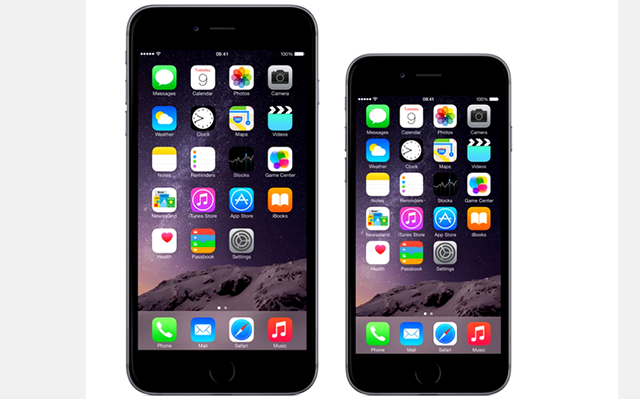
Apple is boasting that it is conducting its fastest ever rollout of a smartphone, with the iPhone 6 and 6 Plus set to arrive in 36 more countries during October.
That will mean the devices are available in a total of 69 countries come the end of October -- though consumers are still having a tough time getting hold of the phablet version, with the maximum three to four week wait listed at Apple's UK online store currently.
By the end of 2014, Apple plans to have its new smartphones on sale in a total of 115 countries (although quite how those phablet stocks will hold up is another thing).
Want to know exactly which countries are getting the iPhone 6 models, and when, during October? Then here's the full breakdown:
- 17 October: China, India and Monaco
- 23 October: Israel
- 24 October: Czech Republic, French West Indies, Greenland, Malta, Poland, Reunion Island and South Africa
- 30 October: Bahrain and Kuwait
- 31 October: Albania, Bosnia, Croatia, Estonia, Greece, Guam, Hungary, Iceland, Kosovo, Latvia, Lithuania, Macau, Macedonia, Mexico, Moldova, Montenegro, Serbia, South Korea, Romania, Slovakia, Slovenia, Ukraine and Thailand
Apple is all set to unveil new iPads later this week, on 16 October to be precise. The iPad Air 2 and refreshed iPad mini are expected to come with a fingerprint sensor (although it isn't clear if both tablets will have it at this point), and a gold color option.
Published under license from ITProPortal.com, a Net Communities Ltd Publication. All rights reserved.
-

How many times a day does the average person check their phone? 221, apparently
Publié: octobre 10, 2014, 8:40am CEST par Darren Allan
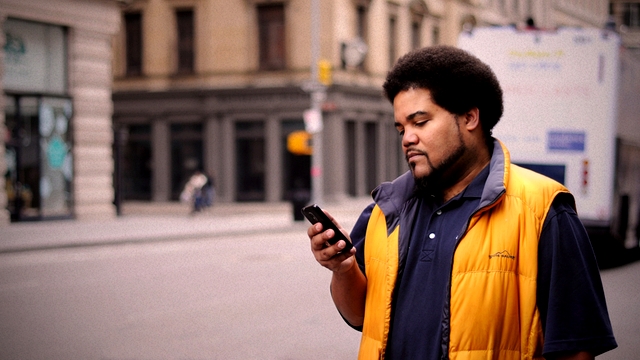
A new piece of research has looked into the amount of times that British smartphone users check their handset and carry out a task on it every day -- and the answer is 221 times, on average. Which begs the question: how many times a does a true smartphone addict check their device?
At any rate, the survey of 2,000 UK smartphone users, courtesy of Tecmark, found that most folks first look at their phone at 7:30 in the morning, to check emails and then the Facebook app (no surprise there). Early morning tasks which are still carried out in bed by many are reading recent news updates, and looking at the weather forecast -- as well as sending a couple of texts.
Online banking and checking train times are also popular tasks for earlier in the day.
The survey noted that the average smartphone owner uses their device for three hours and sixteen minutes per day -- which is quite a staggering figure when you add that up over the week. Indeed it's almost a full 24 hour day, and well over a day when sleeping time is taken into account.
Many of those surveyed confessed that they picked up and used their phone without even realizing -- indeed two-thirds of respondents said they found themselves firing up and browsing through Facebook without even thinking about it.
Four in ten folks admitted that they'd feel "lost" without their phone.
It's certainly the primary gadget in people's lives now, with the desktop or laptop computer only being used for 140 tasks per day on average, over a third less than the smartphone.
Richard Heyes, Managing Director for Tecmark, commented: "More than 1,500 times a week is a lot of times to pick up a small gadget like a mobile phone and demonstrates perfectly just how ingrained in our daily lives our smartphones have become. For most of us, it's now second nature. And certainly we're not surprised to see this huge reliance on our handheld devices. But many people may not realize just how many times a day they check their phone or carry out a simple task on it".
He added: "It's so much easier checking your phone for Facebook updates rather than waiting for a desktop or laptop computer to load -- we don't have that much time in the mornings".
Published under license from ITProPortal.com, a Net Communities Ltd Publication. All rights reserved.
-

Mobile devices now outnumber people across the globe
Publié: octobre 9, 2014, 4:49pm CEST par Darren Allan

There are now more mobile devices than people in the world, according to the latest statistic released by GSMA Intelligence.
According to the stats, there are now 7.229 billion mobile connections across the globe -- a growth of 6.1 percent year-on-year -- compared to a world population of 7.197 billion (going by the US Census Bureau's world population clock).
Note that the stats also include machine-to-machine (M2M) mobile connections, mind you -- and some folks have multiple phones. The actual number of unique mobile subscribers is 3.6 billion across the world.
In other words, half the world's population still don't have a mobile phone.
Kevin Kimberlin, chairman of Spencer Trask, commented: "In the evolution of our wireless world, we'll never again see such a crystal clear punctuation point for mobile progress!"
But he warned: "Don't be fooled by this 100 percent crossover point. Since many of us have two or more devices, this active user number obscures a harsh reality. Over half of the people in the world are not so fortunate. They still don't have a mobile phone. So we have more work to do".
Spencer Trask helped fund startup Millicom, which is teaming up with Facebook and Internet.org to help bring mobiles to the half of the world which isn't yet connected.
Kimberlin added: "So while we toast this mobile evolution milestone, let's redouble our efforts to connect the rest of the world".
Photo Credit: photobank.kiev.ua/Shutterstock
Published under license from ITProPortal.com, a Net Communities Ltd Publication. All rights reserved.
-

iPhone 6 users encounter a painful new problem -- hairgate
Publié: octobre 8, 2014, 9:16am CEST par Darren Allan

Apple has had more than its fair share of problems with the new iPhones (and its fresh operating system, iOS 8) but it seems that one "gate" type scandal isn't enough for Cupertino this time around.
Following "bendgate" -- the allegation that the iPhone 6 can be bent too easily by, for example, sitting down for long periods while it's in a tight pocket -- we now have "hairgate".
Apple's new iPhone 6 isn't causing folks to pull their hair out with frustration, it is just simply and literally pulling people's hair out -- or that's the allegation. Apparently, the thin seam between the display glass and aluminum body is snagging on long hairs (and beard hairs, too) when people are making phone calls, and being yanked out when the handset is moved away from the caller's face.
Twitter is predictably alive with #hairgate chatter, and of course the obligatory jokes ("the new iPhone 6 not only has NFC, but it doubles as a shaver").
Edgar Alvarez tweeted: "#HairGate is very real. Have experienced it a few times myself with the iPhone 6. Didn't know that was a thing until today".
And Steven (@Airwaysfoodie) observed: "The iPhone 6 turns out to be a great anti hipster weapon. Bends in tight hipster jeans AND pulls out ugly hipster beards! Love it!"
Others doubt whether this is a real issue, while slipping a gag in at the same time, of course. Jen Dudley-Nicholson noted: "Two weeks in and I have yet to experience iPhone 6 #Hairgate. Perhaps it's a bald-faced lie?"
Have you experienced hair loss at the hands of your new Apple smartphone? We're just waiting for Samsung to get going on a new trolling Galaxy phone advert now...
Photo credit: Alan Poulson Photography / Shutterstock
Published under license from ITProPortal.com, a Net Communities Ltd Publication. All rights reserved.
-

Majority of businesses are not confident about their data security
Publié: octobre 3, 2014, 5:26pm CEST par Darren Allan

A new piece of research from SafeNet has pointed out some worrying aspects regarding business security, including the fact that the majority of organizations -- some 60 percent of them -- are not confident that their data would be secure if a hacker was to get past their network's perimeter security.
While 74 percent of the thousand IT decision makers questioned said they believed their perimeter security was effective at keeping threats at bay, 41 percent believed that unauthorized users are able to access their networks, figures which don't quite marry up.
44 percent said their company firewall had been breached, or they weren't sure if it had, which isn't exactly a comforting state of affairs.
The upshot of all this is, SafeNet notes, that while businesses are investing IT budgets in perimeter security and the front line of keeping the bad guys out -- 93 percent said their company's investment in perimeter security had stayed the same or increased -- they do so at the expense of defense in depth strategies, and measures like data encryption to ensure that if there is a breach, damage is minimized.
Two-thirds of those surveyed said they would not decrease spending on network perimeter defenses, in favor of other security measures which could give more breadth. When asked to get rid of one way in which sensitive data is protected, most respondents said they'd ditch anomaly detection (49 percent), or data encryption (24 percent), with perimeter security being held as more important (only 15 percent).
It's not too surprising, then, that the majority aren't confident about data security should an attacker get past those hallowed perimeter defenses.
Indeed, a quarter of those surveyed admitted that they wouldn't trust their own personal data to be present on their company network, a telling statistic.
Tsion Gonen, chief strategy officer, SafeNet, commented: "The research findings reveal some interesting contradictions between the perception and the reality of data security. What's worrying is that so many organizations are still putting all of their eggs in one basket when it comes to data security. Perimeter security technologies are just one layer of protection, but too many companies rely on them as the foundation of their data security strategy when, in reality, the perimeter no longer exists".
He continued: "From the sheer volume of data breaches alone, it's clear that if a cybercriminal wants to hack the system or steal data, they will find a way to do so. So companies need to focus on what matters most -- protecting the data. That means building more intelligent security strategies and using defense-in-depth with multi-factor authentication and placing security directly on the data with encryption".
Published under license from ITProPortal.com, a Net Communities Ltd Publication. All rights reserved.
-

'Bendgate' continues to haunt Apple
Publié: octobre 3, 2014, 8:30am CEST par Darren Allan
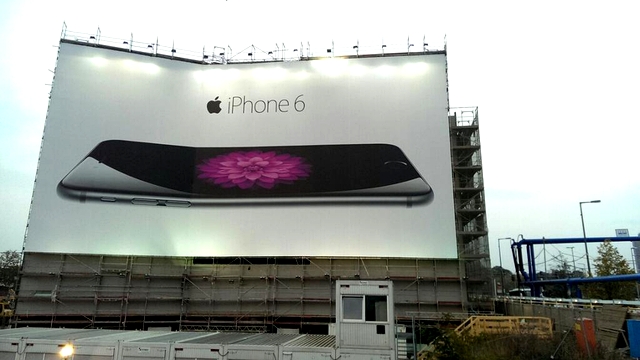
Apple has done a ton of defensive work to put out the fires of bendgate, the latest (compulsory) scandal which arrived with the iPhone 6, but Cupertino is still feeling the heat over the issue despite its best efforts.
Once mud has been slung, it tends to stick, even though Apple has done everything from giving journalists a grand tour around its phone stress testing lab and the rigorous procedures therein, through to releasing figures that point to only nine complaints over bent iPhone 6 models, and highlighting independent testing that shows the HTC One M8 (with its aluminum body) bends just as much as Apple's smartphone.
Despite this, the laughs at Apple's expense continue, with not just Samsung poking fun at the iPhone 6, but also folks pointing out amusingly placed posters in light of the "scandal", and an enterprising firm which has created a special bendgate case.
The posters were highlighted by The Verge, and consist of several very unfortunately placed iPhone 6 adverts, pasted up on huge billboards which are bent to fit into their environment, and of course therefore display a kinked iPhone. Check out the above image which must have left the Apple PR department none too pleased (see the others at The Verge).
And if giant posters of bent handsets weren't enough, then the iPhone 6 BendGate Case produced by Shapeways (spotted by Metro) is sure to get Apple a little, well, bent out of shape.
The case, which comes in a number of bright colors, is pre-bent to fit your kinked iPhone 6 like a glove -- and Shapeways also notes that "this bumper case fixes the leveling issue caused by the camera lens and gives it protection where it's needed!"
The tongue-in-cheek case is apparently in beta and has been priced at €19.07, or if you have a 3D Printer, you can download the thing and print your own. It's the perfect gift for an Android lover to give their iPhone 6 toting friend...
Image Credit: Tom @taknil
Published under license from ITProPortal.com, a Net Communities Ltd Publication. All rights reserved.
-

iPhone 6 and 6 Plus teardowns reveal internal details
Publié: septembre 22, 2014, 8:31am CEST par Darren Allan
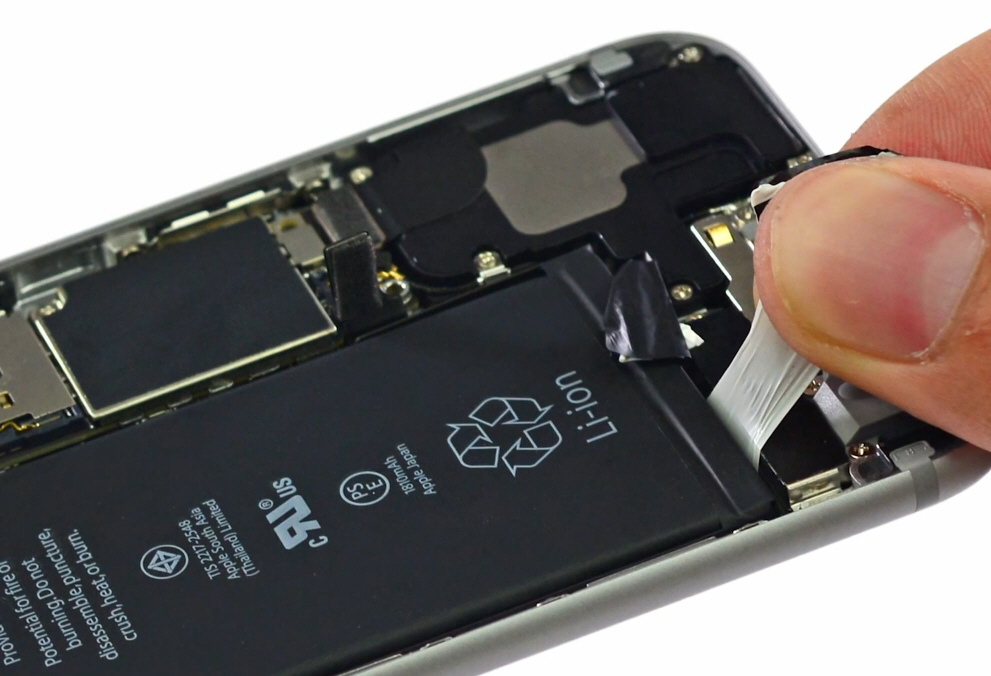
The new iPhone 6 models have gone on sale, and shortly after Apple's new smartphones hit shelves, teardown sites had the full skinny on the innards of the devices, having ripped them apart.
The most prominent, iFixit, produced its usual very detailed breakdown of the components of both the iPhone 6 and iPhone 6 Plus. Here are some of the highlights...
First off, the site notes that the design and construction of both models is very similar.
The protruding camera lens or "bump" is there due to improved optics, meaning the lens assembly is a tad thicker than the phone -- with the bump apparently measuring 0.6mm according to iFixit (slightly less than we heard pre-launch). Both cameras in the 4.7in and 5.5in iPhones seem pretty much the same, aside from the phablet which has optical image stabilization.
As for the battery, the iPhone 6 has an 1810mAh affair, just as pre-launch speculation had pointed to. That's not all that much bigger than the iPhone 5S, considering that the power pack has to drive a bigger, higher resolution screen. Apple claims that talk time will be increased from 10 hours to 14 hours, though -- we'll have to see how that pans out when our review of the handset goes live.
The phablet has a much chunkier 2915mAh effort as you'd expect, given that it has the space inside with a larger body.
As regards who makes the other internal components of the iPhone 6, the firms involved include Qualcomm, Skyworks, InvenSense and Avago. There's an Apple A8 APL1011 SoC and SK Hynix RAM doing the grunt work.
iFixit also notes that while the iPhone 6's speaker has a new design, it is just a minor update over the iPhone 5S.
As a final note, spare a thought for one Australian man who tried to do an impromptu teardown on live TV... check the video out here.
Published under license from ITProPortal.com, a Net Communities Ltd Publication. All rights reserved.
-

Apple Watch could distract drivers more than smartphones
Publié: septembre 18, 2014, 9:22pm CEST par Darren Allan
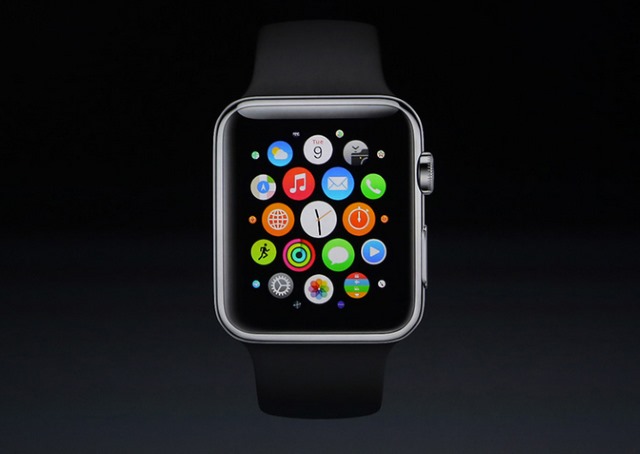
Apple Watch is off to a rather shaky start, as some folks feel it isn't as smart looking or svelte as we were expecting, and others don't believe it has enough functionality, and doesn't do anything different from existing smartwatches.
And now UK motoring organization the Institute of Advanced Motorists (IAM) is putting the boot in -- on all smartwatches, mind, although the organization’s press release highlights Apple's -- and the risks of using such a gadget while driving.
Smartphones are already a danger in terms of the temptation for drivers to use them while on the road, and IAM believes that the constant alerts sent by the Apple Watch (which it amusingly calls the iWatch in places in its press release -- was this statement prepared pre-launch, perchance?) will prove far more of a distraction.
IAM cites a study on mobile phone usage between 2006 and 2010 which found that handset-related distraction was a factor in 1,960 road traffic accidents which ended in injury to one (or more) parties. It then suggests: "Having a wristwatch linked to users' mobile phone only suggests a higher proportion of drivers' performance will be significantly impaired".
The organization also notes that the Apple Watch requires two hands to operate, which will "impact speed, lane position and time spent looking at the road".
Neil Greig, IAM Director of Policy and Research, commented: "An iWatch [sic] has the potential to be just as distracting as any other smartphone device. Indeed more so if you have to take your hand off the wheel and your eyes off the road to interact with it".
"Enforcement will be difficult for the police, but powers exist to seize and interrogate devices in the event of a serious crash. The very device that distracted you also has the power to convict you".
Using an Apple Watch while you're driving will leave you open to the same penalty as using a smartphone in the UK, namely three points and a £100 fine, the Department for Transport has said. However, if convicted of death by dangerous driving due to using your phone/watch, the stakes obviously increase to two years in prison.
Published under license from ITProPortal.com, a Net Communities Ltd Publication. All rights reserved.
-

The near-future technology that will have the biggest impact on our lives
Publié: septembre 18, 2014, 8:35am CEST par Darren Allan
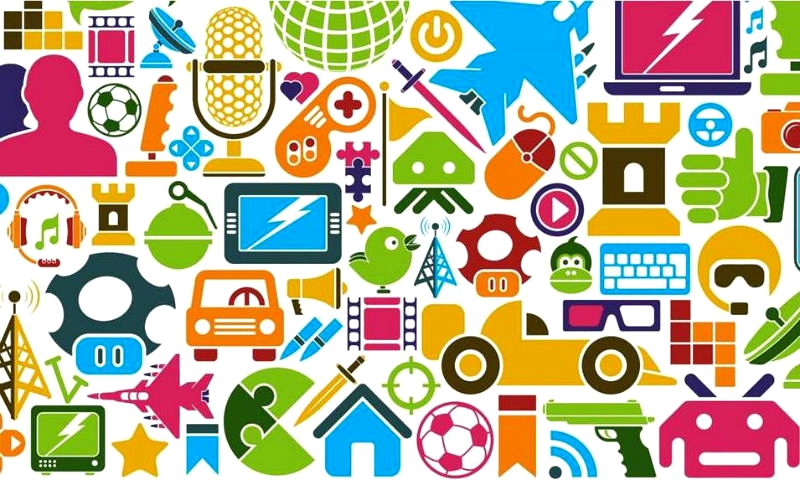
So what arenas of technology are going to make the most impact on the world over the next three years?
That's a question the 2014 KPMG Global Technology Innovation survey posed to some 768 technology business leaders, and according to the results, three of the top five disruptive technologies which should "change the way we work and live" are the Internet of Things, 3D printing, and biotech/healthcare.
These three were selected by more than twice as many respondents compared to last year's survey. Other important factors highlighted were the cloud and mobile (though that's old news now, really), and the rise of big data and analytics, along with artificial intelligence. All these streams of technology are expected to have a considerable impact on the world and businesses.
What do the mostly C-level execs, as in Chief of this or that, surveyed believe will be the biggest money spinner? Unsurprisingly, that's the Internet of Things, which 20 percent said would help to drive revenue via "intelligent shopping" (tying up smart fridges with supermarket discounts on products a customer buys regularly, and so forth). 14 percent cited home automation as a revenue driver through to 2017, as the smart home starts to take off.
Virtual currencies like Bitcoin are also likely to make a big impact, although how much of one depends on the region surveyed. A huge 70 percent of respondents in China felt cryptocurrencies will disrupt the traditional banking world, compared to 32 percent in Europe, and just 15 percent in the US.
The survey also asked about what factors would likely stifle tech innovation in the near future, with the most returned answer being restrictive regulations (34 percent). 29 percent of respondents felt simple consumer fatigue with tech gadgets would prove detrimental.
Tudor Aw, KPMG's UK Head of Technology, commented: "Everything from the home computer to the smartphone has shown that consumers are willing to embrace new technologies. After all, 15 years ago, no one would have thought that people would be as comfortable shopping on the move or banking over the air, as they are today".
"The businesses that are quick to realize that we are only at the start of a technological innovation revolution will be those that uncover the next 'big thing' -- and they will be the ones standing it in what is becoming an increasingly crowded marketplace".
Published under license from ITProPortal.com, a Net Communities Ltd Publication. All rights reserved.
-

Meet Samsung's NX1, a 28 megapixel compact system camera
Publié: septembre 16, 2014, 9:16am CEST par Darren Allan
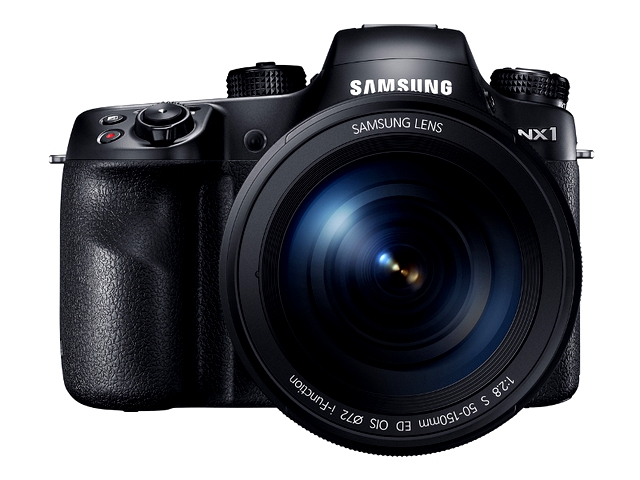
Samsung has launched a new high-end snapper, a fast compact system camera to rival DSLRs for professional usage.
The Samsung NX1 boasts a 28 megapixel APS-C BSI CMOS sensor, supports 4K video recording, and has a new NX Auto Focus System III with 205 Phase Detection AF. The latter delivers an autofocus speed of 0.055 seconds to help ensure you capture the moment with clarity -- and this camera offers 15 fps (frames per second) continuous shooting to cover entire action sequences.
The CMOS sensor features a Back Side Illumination (BSI) structure with a micro lens array, which Samsung claims reduces image noise even in low light conditions. The camera supports native ISO 100-25600 and extended ISO to 51200, meaning photographers can capture quality images when conditions are pretty dark indeed.
A new Samsung Auto Shot feature uses the camera's DRIMe V processor for recognizing high-speed motion shots, and can time the taking of a photo intelligently by predicting the best moment to grab the snap (such as, for example, when a cricket player strikes the ball with his or her bat).
In terms of build quality, the NX1 is fashioned from magnesium alloy and is ergonomically designed to be comfortable to hold. It also offers dust and splash resistance, with rubber seals to protect the buttons.
The camera has a 3in Super AMOLED touch display, and also an Electronic Viewfinder which is an XGA OLED display with a lag time of only 0.005 seconds thanks to the DRIMe V processor, meaning what you see through it is to all intents and purposes in real-time.
The camera also supports Wi-Fi and Bluetooth in terms of connectivity with other devices.
Finally, a new NX lens has been introduced, a 50-150mm 2.8 S ED OIS lens, with an F2.8 maximum aperture and 35mm equivalent 77-231mm focal range. Samsung says it's a "premium telephoto lens perfectly matched with the NX1".
Paul Scott, Head of Marketing, Samsung Digital Imaging UK and Ireland, commented: "With the NX1, we are giving our customers the chance to experience the most advanced photographic innovations within a fast compact system camera (CSC). It's about giving professional photographers choice and an alternative to the DSLR so they have the ability to take quality images every time they shoot thanks to best-in-class technology".
Published under license from ITProPortal.com, a Net Communities Ltd Publication. All rights reserved.
-

Fans already lining up for the iPhone 6 in New York
Publié: septembre 5, 2014, 10:33am CEST par Darren Allan
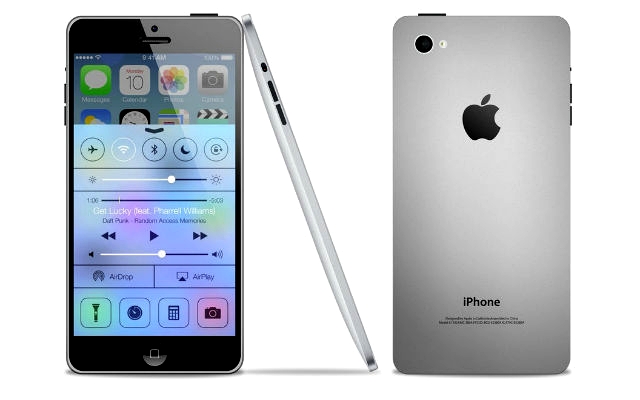
Never mind the on-sale date, the next-gen iPhone won't even be revealed until next week, and yet already people are queuing outside Apple's New York flagship store to be first in line to purchase the phone(s).
In fact, the first people in line (well, they were first -- we'll explain in a moment), cousins Brian Ceballo and Joseph Cruz, told CNBC that they've been in line at the Fifth Avenue store since Sunday night, well over a week before the launch.
They will have a total wait time of 20 days, they say, which will beat the current record of 17 days waiting -- but they aren't doing this purely for that reason. The pair are also being sponsored by a company that buys second-hand mobiles in the US, and indeed they're actually numbers three and four in the queue now -- as they sold their top spots to Jason and Moon Ray for $1250 (£760) apiece.
The Rays stumped up to be first in order to get on camera and snag air-time to promote their app (Jason should really change his name to Manta, though, we reckon).
As has been the case for a while now, it's no longer major Apple fanboys at the front of the line, but those who want to make money or promote a product or brand in some way.
Apple will reveal its new iPhone 6 (which is due to come in two versions -- a 4.7in handset and 5.5in phablet) next Tuesday 9 September. A digital wallet is also coming alongside the device(s), according to the latest speculation.
Published under license from ITProPortal.com, a Net Communities Ltd Publication. All rights reserved.
-

China gives Microsoft 20 days to play ball in antitrust probe
Publié: septembre 2, 2014, 10:17am CEST par Darren Allan

China is turning up the heat in its antitrust probe into Microsoft, with the authorities laying down a deadline for Redmond to respond regarding allegations of the software giant unfairly leveraging its products.
The State Administration for Industry and Commerce (SAIC) has laid down a time limit of 20 days for Microsoft to provide a satisfactory response to the antitrust probe which is focusing on Windows and Office (Internet Explorer and Windows Media Player have also been previously picked out as bones of contention, as well).
Reuters reports that a SAIC statement on its website read: "[A] special investigation team conducted an anti-monopoly investigation inquiry with Microsoft Vice President Chen Shi (David Chen), and required that Microsoft make a written explanation within 20 days".
SAIC believes Microsoft has not fully disclosed all the details it requires concerning the compatibility of its desktop OS and software, an accusation which has been leveled before. SAIC criticized Redmond's lack of transparency just last week.
For its part, Microsoft has responded to say it's serious about addressing these "questions and concerns", and complying with Chinese law. So we guess the Microsoft legal team and others are busy compiling the necessary response as we write.
If SAIC doesn't find this (presumably) detailed response satisfactory, what will happen next is the big question -- as China is shaping to throw off the shackles of Windows, with the government instigating a project to help develop its own home-grown desktop OS. Android is in line for the chop as well, although the timeline for a mobile OS replacement is much further out.
China also previously banned Windows 8 as a security risk.
Published under license from ITProPortal.com, a Net Communities Ltd Publication. All rights reserved.
Photo Credit: HomeArt/Shutterstock
-

Fear: The biggest barrier to change for IT
Publié: septembre 2, 2014, 4:00am CEST par Darren Allan

A new piece of research has found that while IT budgets may have grown over the last year, companies are still holding back from making changes in IT policy due to a lack of resources, and a fear of possible downtime.
Software testing and quality experts SQS conducted said research at the World Congress for Software Quality last month, and found that fear was the biggest barrier to change for IT departments.
While the benefits of staying on (or near) the cutting-edge of IT are clear -- a YouGov survey found that 95 per cent of companies saw technology as important when it comes to the running of their business -- the upheaval involved in major IT changes, and the risk therein seemingly outweighs those benefits.
Resource limitations and lack of requisite skills are also obstacles to IT change, with 60 percent of tech leaders saying they have experienced a skills shortage in terms of keeping pace with rival organizations.
SQS advises an agile approach, and breaking down IT projects into smaller more manageable chunks.
David Rigler, director of UK retail and manufacturing at SQS, said: "Technology change will inevitably invoke fear, uncertainty and doubt within IT teams who are already struggling to maintain the status quo and manage the current volume of change, without even contemplating such a radical change. Putting quality assurance at the heart of any project will make the task less daunting by ensuring key delivery milestones are tested at each stage to deliver a successful project with no nasty surprises at go-live".
Failure to change, of course, leads to even bigger risks in being left behind by competitors who don't have outmoded systems.
Published under license from ITProPortal.com, a Net Communities Ltd Publication. All rights reserved.
Photo Credit: Vlue/Shutterstock
-

What you really want is iPhone 6 with sapphire display
Publié: août 29, 2014, 5:00pm CEST par Darren Allan
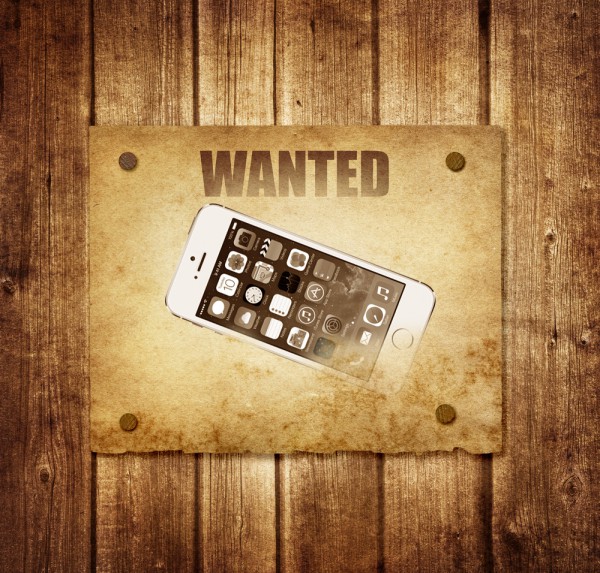
What do you want to see most on the new iPhone 6 (if you care about Apple's upcoming device, that is)?
That was the question posed by Usell.com in a poll of a thousand mobile owners across the US, and the resoundingly top response was the much talked-about sapphire screen. 45 percent of respondents said they wanted a super-tough sapphire display, with 50 percent of Android and iPhone users saying they would ditch their current smartphone for the iPhone 6 if it came with such a screen.
Whether or not we'll see sapphire on the iPhone 6 is a bone of contention -- while the iWatch is likely to boast the material,Apple's smartphone may only have it on limited models at launch (namely the more expensive devices, to get folks forking out for iPhones with large storage capacities, and matching big price tags).
What else do people want on the next-gen iPhone? In second place with 19 percent was an infrared blaster to allow the handset to be used as a remote control. Fitness and health tools came third on 10 percent -- and unlike the above two points, these are pretty much guaranteed with iOS 8's fresh focus on health.
Surprisingly, the fourth element on the list was the ability to display 3D images, with 9 percent of respondents wanting a feature similar to Amazon's Fire Phone (we don't really see the point of this, but there you go).
The fifth and final item on the wish-list of those polled was cool headphones to go with the new iPhone, perhaps some Beats ones (though the acquisition is fairly recent, so that might be a push).
Usell.com also asked about what the most important improvements to existing iPhone features would be, with the majority indicating that better battery life was the primary concern here. This isn't the first time we've heard that battery life is the most important smartphone feature.
Second on this list was a bigger screen (which is definitely happening), then a better camera (again, guaranteed), improved phone reception (who knows on that), and more memory (rumor has it that Apple is planning to produce a 128GB model).
Published under license from ITProPortal.com, a Net Communities Ltd Publication. All rights reserved.
Photo Credit: Triff/Shutterstock
-

China takes on Windows, Android with new homegrown operating systems
Publié: août 26, 2014, 10:31am CEST par Darren Allan
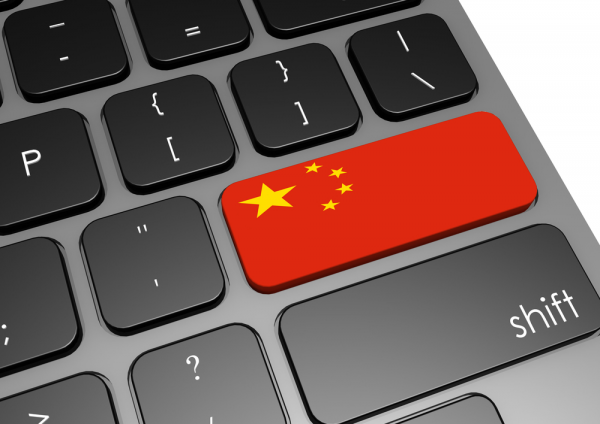
China really is serious about shrugging off the shackles of Windows and other Western operating systems, as the country is apparently developing its own OS which is free from the security misgivings the government has about foreign software.
According to the Xinhua news agency (via Reuters), the Chinese government is looking to boost its domestic software industry and develop alternatives firstly for desktop operating systems (namely Windows), and then it will follow those footsteps in the mobile world with an Android usurper (or that's the theory). This is according to a certain Ni Guangnan, head of an "official OS development alliance" which was put together back in the spring.
You'll most likely be aware that the relationship between Windows and China is a difficult one -- back in May, China banned Windows 8 as a security hazard, and just a month ago, Microsoft had its offices in China swooped upon by officials in an apparent antitrust investigation. This flak follow concerns about the extent of cooperation of Western tech giants like Microsoft with the NSA.
The new Chinese desktop OS, which will be based on Linux, isn't a long-term plan, either. In fact, it will be up and running soon, or at least that's what Ni Guangnan claims. He told the People's Post and Telecommunications News that: "We hope to launch a Chinese-made desktop operating system by October supporting app stores".
The first version of the operating system is likely to be pretty rough, though, and it isn't expected that an immediate switch will be facilitated. The hope is Windows can be ditched a year or two down the line, and Android on a longer time frame of three to five years.
The government's ire and increasingly anti-Microsoft stance seems to be growing swiftly, and of course China is a large market, so this could impact Redmond's software profits considerably.
Microsoft is just about to push the Xbox console out into the Chinese market, too.
Published under license from ITProPortal.com, a Net Communities Ltd Publication. All rights reserved.
Image Credit: Tang Yan Song / Shutterstock
-

Nearly 70 percent of homes will have an Internet of Things device by 2019
Publié: août 22, 2014, 9:09am CEST par Darren Allan
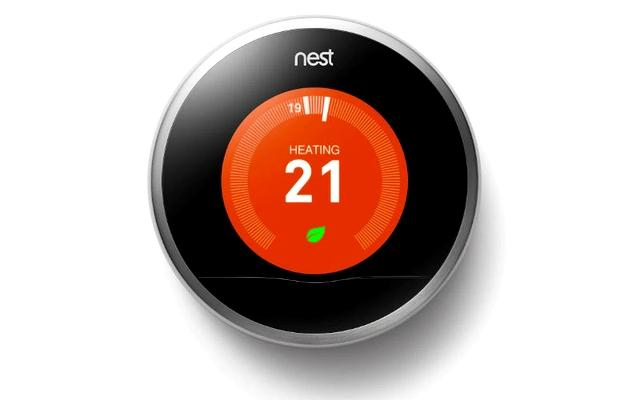
Acquity Group (part of Accenture Interactive) has just released the findings of its 2014 State of the Internet of Things Study, and the headline fact is that the firm estimates 69 percent of consumers will own an in-home IoT (Internet of Things) device come the year 2019.
Looking nearer to hand, by the end of 2015, 13 percent of consumers (2,000 US consumers were surveyed, incidentally) will have at least one IoT device in their home, such as a thermostat from the likes of Nest, or home security camera. Only 4 percent own a device like this right now, so that's a tripling up of ownership by the end of next year.
When it comes to the broader market of connected devices outside the home, wearables like smartwatches and fitness bands are expected to double up in terms of ownership in the next year.
22 percent of those surveyed either already own a fitness wearable, or are planning to buy one by 2015 -- and 43 percent said they are going to make a purchase in the next five years.
We've already heard a similar story this morning from a different source: Smartwatches and fitness bands set for explosive growth though to 2018. And indeed, as with the previous article, smart clothing and specs like Google Glass are expected to be least popular, with only 3 percent adoption predicted in the next year, and 14 to 16 percent within five years.
Acquity also pointed to the spread from early tech-savvy adopters to the general populace before the decade is out, as even 78 percent of those who were bracketed in the "late adopters" category said they'll purchase a smart home device by 2019.
Jay Dettling, president of Acquity Group, commented: "These digital devices present major opportunities for improving a brand's customer experience for a range of consumers. Our data reveals that it's not only tech enthusiasts who are interested in these kinds of products, but late adopters who also express interest in buying them".
Published under license from ITProPortal.com, a Net Communities Ltd Publication. All rights reserved.
-

Chromebook on the rise, with sales set to triple by 2017
Publié: août 13, 2014, 9:23am CEST par Darren Allan
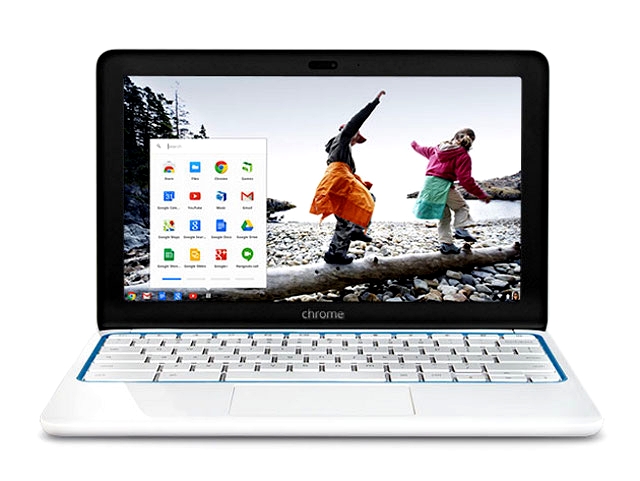
Google's Chromebook is on the up and up, according to the latest report published by analyst firm Gartner.
This year, Gartner estimates that total Chromebook sales will hit 5.2 million, which is up 79 percent from 2013. Looking further out to 2017, the number of units sold should reach 14.4 million, in other words we're looking at a near tripling of sales inside three years. Which has to be music to Google's ears...
What's more, while demand has been broadly fueled by the education sector in the States, the Chromebook is becoming more popular with consumers, and this year consumer purchases are expected to account for more than half of sales of Google's laptop. (In 2013, the education sector was responsible for almost 85 percent of Chromebook sales, to give you an idea of the sort of shift we're talking about here).
Gartner also noted the importance of the Chromebook as regards the business world, with Isabelle Durand, principal analyst at Gartner, commenting: "So far, businesses have looked at Chromebooks, but not bought many. By adopting Chromebooks and cloud computing, businesses can benefit; they can shift their focus from managing devices to managing something much more important -- their data”.
The analyst firm also broke down the top Chromebook vendors, with Samsung leading by a mile, cornering 65 percent of the market, and Acer snaffling much of the rest at 21 percent. HP and Lenovo were in a practical dead-heat for third place at 6.8 and 6.7 percent respectively, with Dell trailing on 0.3 percent.
Published under license from ITProPortal.com, a Net Communities Ltd Publication. All rights reserved.
-

Research claims nearly one in ten Android apps is malware
Publié: août 4, 2014, 8:38am CEST par Darren Allan

As many as 9 percent of Android apps are fully or partially malware, according to a new piece of research, although the majority of the blame (as ever) lies with dodgy third-party app stores particularly in Asia.
The figure comes from Cheetah Mobile's latest security report for the first half of 2014, which collected 24.4 million sample files during those six months, and found that 2.2 million were viruses.
That represents a rapid growth -- in fact an increase of 2.5 times compared to the total seen in 2013, and over twenty-fold compared to the number of infected files kicking about in 2012. It's no surprise, though, given Android's equally meteoric rise and the juicy large target of user numbers it now represents.
The major problem area is, as we've already mentioned, Asia -- and also some parts of Western Europe -- where third-party app stores reign, and therefore security and control is a far more lax affair.
Oddly enough, France is the worst spot in Europe with a 2.97 percent infection rate according to Cheetah, well ahead of Russia on 1.88 percent. The UK is on 1.07 percent.
The most afflicted country in Asia (and globally) isn't China -- which is on 2.45 percent, actually less than France -- but rather Vietnam on 3.65 percent. India is second worst on 2.96 percent.
Cheetah also noted that numbers of mobile payment viruses are rising dramatically, and are set to become the primary threat to Android hardware this year -- and a big threat to users, of course, seeing as they potentially stand to lose money via this kind of malware. Payment viruses represented two-thirds of the malware Cheetah detected in this latest report.
Photo Credit: style-photography.de/Shutterstock
Published under license from ITProPortal.com, a Net Communities Ltd Publication. All rights reserved.
-

Top 10 Facebook scams to avoid
Publié: août 1, 2014, 6:53pm CEST par Darren Allan
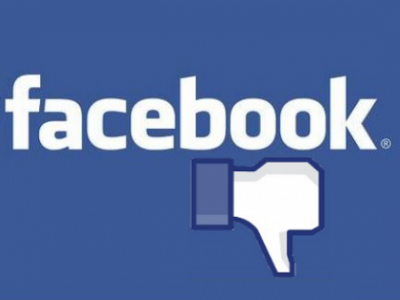 With Facebook's popularity rocketing, the social network became a target for scammers and malware peddlers, and social engineering attacks have only increased massively since it became a phenomenon.
With Facebook's popularity rocketing, the social network became a target for scammers and malware peddlers, and social engineering attacks have only increased massively since it became a phenomenon.So it's always handy to be aware of what current major scams are doing the rounds, so there's no danger of you being tempted into clicking and ending up with something nasty on your machine.
Security expert Bitdefender (the maker of the famous internet security suite which is generally ranked highly among testers, ourselves included) maintains a yearly list of the top ten scams, and this time around, the number one spot has stayed occupied by the same predictable piece of click-bait.
Yep, the top scam is "Total profile views/visitors (Check out now who viewed your profile)", with the lure of being promised a list of those who've been peeking at your profile representing 30 percent of scams on Facebook.
Number two, but a long way behind on 7.4 percent, is "Change your Facebook Color" (which offers to change the background color of your profile). And at number three we have a bogus Rihanna sex tape, which represents 4.8 percent of all Facebook scams. All the top three scams mainly target the US, UK, and Australia.
Rihanna is the top lure in terms of celebs, taking over from Taylor Swift who was a popular scam last year, but has now fallen out of the top ten. Another major scam which slipped from the list was an alleged free trip to Disneyland.
Here's the top ten in full, with the main target territories listed:
- Total profile views/visitors (Check out now who viewed your profile) -- 30.20 percent (UK/US, Australia)
- Change your Facebook Color -- 7.38 percent (UK/US, Australia)
- Rihanna sex tape with her boyfriend -- 4.76 percent (UK/US, Australia)
- Check my status update to get free Facebook T-shirt from Facebook -- 4.21 percent (UK/US, Australia)
- Say goodbye to Blue Facebook (Dites Aurevoir au Facebook BLEU) -- 2.76 percent (France)
- Unsealed. We are giving them away for free -- 2.41 percent (UK/US, Australia)
- Check if a friend has deleted you -- 2.27 percent (UK/US, Australia)
- See your top 10 profile peekers here! You will be shocked to find out your ex is still creeping on your profile! -- 1.74 percent (UK/US, Australia)
- Find out how to see who viewed your profile (Encontré la manera de ver quien ve mí perfil. No sabes las sorpresas!) -- 1.55 percent (Spanish-speaking countries)
- Just changed my Facebook theme. It's amazing -- 1.50 percent (UK/US, Australia)
As you can see, not only is the "see who viewed your profile" scam number one, but variants are also present at number eight and nine (and seven is pretty similar -- seeing if folks have deleted you). Other Facebook theme/color trickery is also repeated throughout the list.
People would do well to remember that you will never be able to see who has viewed your profile, and that Facebook blue is here to stay (and there will never be a "Dislike" button, while we're at it).
Catalin Cosoi, Chief Security Strategist at Bitdefender, commented: "Why do people still want to see who has been taking a peek at their profile, despite all security warnings? I think they believe these are legitimate apps. This is social engineering at its finest -- a challenging mental game that pushes the right psychological buttons. The baits have changed over time, with stalkers, peekers, admirers, overly attached girlfriends and exes haunting you, but the reason this scam works is simple: human nature".
Bitdefender further noteS that there has been an increase of viral video scams which perpetuate themselves via like-jacking (tricking somebody into liking a clip on Facebook when they didn't mean to).
Published under license from ITProPortal.com, a Net Communities Ltd Publication. All rights reserved.
-

Information retrieval requests put a major strain on IT departments
Publié: juillet 25, 2014, 10:52pm CEST par Darren Allan

Time consuming data retrieval requests are putting a big strain on IT teams, at least according to a new piece of research.
Iron Mountain (a storage and data management outfit) conducted the study, and spoke to a number of senior IT bods across Europe (including the UK) to get their opinions on exactly what weight big data was putting on their shoulders these days.
The headline news is that those interviewed said they're seeing yearly increases of 60 percent in terms of requests for data, as staff members are more likely to be trying to leverage data to better do their job, or gain valuable customer insight and the like.
Those interviewed said that the rapid growth in data volume of recent times is the primary driver of information retrieval requests -- as the volume of info is such that more and more of it cannot be stored on individual computers. And the second biggest factor pushing up such requests is the fact that companies need to restrict access to data for security and data protection reasons, so staff need to request access to make use of said data (and keeping copies of data isn't permitted -- so they may need to ask again, and again...).
The third most important factor cited by the report is simply the growth of organisations, with more employees meaning more requests. Finally, human error such as accidental deletion of data is also leading to more data retrieval requests.
It's also worth noting that further volume is generated by external data requests -- or these can even represent the majority in some cases. For example a German telecoms outfit said that despite having several thousand employees, most of its data retrieval requests come from law enforcement agencies.
As to which sectors had the highest volume of requests? Those were manufacturing, services and healthcare.
Christian Toon, Head of Information Risk for Europe at Iron Mountain, commented: "Data protection and information value are important areas worth taking seriously, but it is important to understand that they will also impact data storage and retrieval processes. We believe that tiered information storage is the answer: defining what is most used, most critical and most confidential, as well as what is essentially dormant, and then structuring your storage, access and back-up process accordingly".
He added: "Keep high-value, highly active documents readily available, but relegate more archival and other types of information to more economical forms of storage".
Published under license from ITProPortal.com, a Net Communities Ltd Publication. All rights reserved.
-

Smart shoes can deliver directions straight to your feet
Publié: juillet 25, 2014, 8:38am CEST par Darren Allan
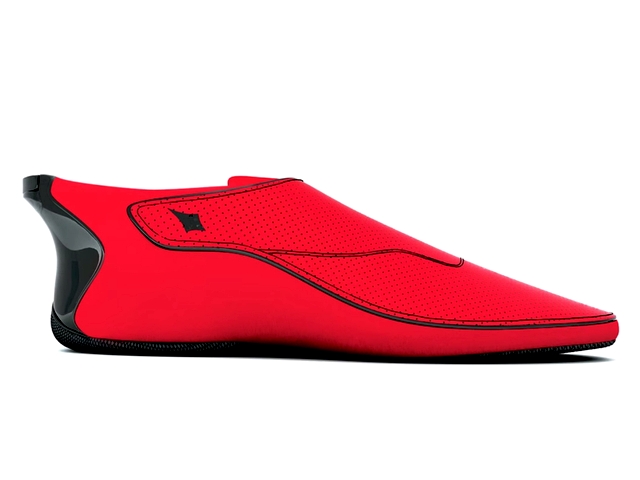
Forget smartwatches, or other wearables like Google Glass, as an Indian startup by the name of Ducere Technologies is targeting an entirely different area of the body for "smart" functionality -- the foot.
Yes, the Lechal is a smart shoe or "interactive haptic footwear" which buzzes to give you feedback and directions on where you're going, among other functionality.
The shoes are hooked up to your phone (Lechal is compatible with iOS, Android and Windows Phone) and the Google Maps app via Bluetooth, and they then deliver directions from the app straight to your feet with haptic feedback. If you need to turn left on a street corner, your left shoe will buzz.
The Wall Street Journal reports that Ducere was founded by two Indian engineers, and is based in Secunderabad with 50 staff. Krispian Lawrence, one of the co-founders and CEO, commented: "The shoes are a natural extension of the human body. You will leave your house without your watch or wristband, but you will never leave your house without your shoes".
Well, not unless you're very drunk indeed...
The smart shoes can also record your path taken and distance traveled, and will be useful for joggers, being able to record the amount of calories burned just like a traditional fitness wristband.
From what's shown in the promotional video (below) you can also tag your location by stubbing your toe onto the ground.
The shoes were originally developed as a navigation aid for the visually impaired, before Lawrence realized there could be other applications for the smartwear in terms of the sighted.
You'll either be able to purchase the full Lechal shoes, or smart in-soles for your existing footwear (again, as shown in the video above), with the price expected to be pitched around the $100 to $150 mark.
Published under license from ITProPortal.com, a Net Communities Ltd Publication. All rights reserved.
-

Tablets more popular with children for gaming than Nintendo 3DS
Publié: juillet 1, 2014, 1:30pm CEST par Darren Allan
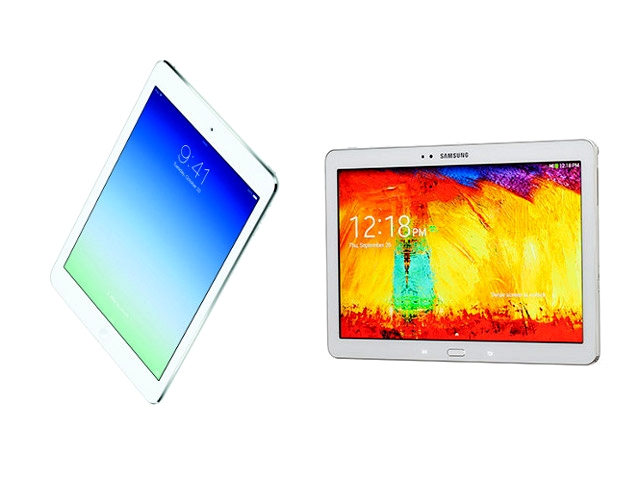
When it comes to portable gaming, the iPad and whole ensuing tablet explosion saw the start of a shift away from traditional gaming handhelds, and a new piece of research has underlined this with the news that tablets have now outdone the Nintendo 3DS.
The study from Futuresource Consulting posed over a hundred questions to children aged three to twelve across the UK (and also the US, Germany and China). It found that in the UK, tablets are now the most popular personal device owned by kids -- with 44 percent having a slate, meaning that they've overtaken the 3DS as top gaming dog.
Even the lowest age group, three to four, showed a result of 30 per ent tablet ownership (most likely of the kids variety, we'd imagine, with offerings like the Samsung Galaxy Tab 3 Kids around).
Parents also said that tablets were the most likely future purchase for their children (within the next six months), as well, meaning this trend is set to continue. Indeed, a tablet is more than twice as likely to be bought for kids than a smartphone or games console.
Speaking of smartphones, they are of course still getting more popular with youngsters aged nine and up, with one in four nine to ten-year-olds owning one. At eleven, that rises to 46 percent. And 17 percent of parents spend £100 or more on mobile tariffs for their offspring, the study found.
Futuresource Consulting did also note that tech isn't everything for kids, and more traditional activities still have quite a hold. 45 percent read books every day (across all four countries where the survey was undertaken), and 39 percent spend five or more hours doing jigsaws and playing board games.
Published under license from ITProPortal.com, a Net Communities Ltd Publication. All rights reserved.
-

BlackBerry Passport to arrive in September
Publié: juin 23, 2014, 1:26pm CEST par Darren Allan
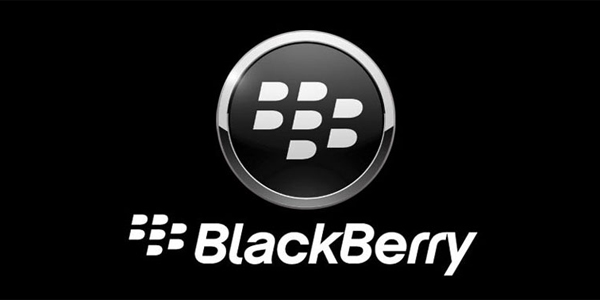
BlackBerry is still alive and kicking in the smartphone market, at least in terms of intentions if not market share, and the company will be launching a major handset by the name of Passport this September.
This phone was previously known as "Windermere", and the spec was rumoured last month, with the handset boasting a 4.5-inch screen with a 1440 x 1440 resolution, offering a very sharp 453 dpi.
Mobile Syrup has confirmed that spec, and the fact that the phone will have a touch-sensitive keyboard panel to facilitate easier auto-correction -- along with the launch event in September, of course, which CEO John Chen said would happen in London.
The previous spec spillage also pointed to this handset having a 13 megapixel camera, and a 3,450 mAh battery which should mean the Passport will offer a lot of longevity away from the power socket.
While the device does actually sound quite neat -- particularly for those who like a traditional QWERTY BlackBerry with full keyboard -- the company really has its work cut out to make itself relevant in the smartphone market again. In terms of the UK, according to Kantar's latest figures (for April), BlackBerry has slipped to a 1.6 percent share of the smartphone market, way behind Windows Phone which is in third place at 9.5 per cent.
The company is also looking to push an alternative strategy of lower-end handsets such as the BlackBerry Z3 which was recently launched in Indonesia.
Published under license from ITProPortal.com, a Net Communities Ltd Publication. All rights reserved.
-

Google's YouTube could ban indie labels
Publié: juin 19, 2014, 11:10am CEST par Darren Allan

Do you enjoy listening to a bit of Radiohead on YouTube -- well, perhaps "enjoy" might be the wrong word for Thom Yorke's compositions -- but anyway, if you do, you might find that your viewing pleasure is disrupted when the band's music videos are stripped from Google's service.
This could happen pretty soon, according to reports, because of a dispute between the video streaming giant and the independent labels which look after the likes of Radiohead and the Arctic Monkeys.
So what's going on here, exactly? Well, YouTube is busy renegotiating contracts with all record labels as it prepares to launch a subscription music service which has the potential to be a major cash cow for Google.
And while the majors have inked the deal, some indies feel they are being pushed around by the terms Google has laid down, and given the short end of the stick.
According to a report by Auntie Beeb, some independent labels have said the proposed deal has "highly unfavourable terms", and the guitarist of Radiohead complained that Google was trying to twist the arms of indie labels and force them into accepting lower payments and worse terms than the majors secured.
This could mean that artists from holdout labels are struck off from YouTube possibly as soon as later this week. Though they won't disappear entirely, as the BBC reckons videos from affected artists would still remain via channels such as Vevo. Footage which is exclusively licensed by said labels is likely to be the content affected -- and obviously, that would still be a major blow for fans of these artists.
In a comment, YouTube unsurprisingly refused to be drawn into the fracas, merely stating: "Our goal is to continue making YouTube an amazing music experience, both as a global platform for fans and artists to connect, and as a revenue source for the music industry."
"We're adding subscription-based features for music on YouTube with this in mind -- to bring our music partners new revenue streams in addition to the hundreds of millions of dollars YouTube already generates for them each year".
YouTube also said that hundreds of both major and indie labels were already partnered up with it. It's expected that the new YouTube subscription service will be rolled out at the end of summer, and will strip ads away and allow for offline listening (as with other popular streaming services which offer a premium paid option), among other boons.
Streaming music is becoming a bigger and more competitive business rapidly, with the likes of Amazon recently joining the club with its Prime Music offering, and Apple snapping up Beats partly for its streaming service.
Published under license from ITProPortal.com, a Net Communities Ltd Publication. All rights reserved.
Photo Credit: HomeArt/Shutterstock
-

88 percent of Brits believe their phones are tapped
Publié: juin 17, 2014, 6:33am CEST par Darren Allan
 A new piece of research has looked into attitudes and beliefs about privacy when it comes to mobile phones, following Vodafone's dramatic revelations about state surveillance and tapping mobile conversations earlier this month.
A new piece of research has looked into attitudes and beliefs about privacy when it comes to mobile phones, following Vodafone's dramatic revelations about state surveillance and tapping mobile conversations earlier this month.Predictably enough, the study, conducted by OnePoll and sponsored by Silent Circle (the private comms firm and outfit involved with the Blackphone) found that most people were cynical on the matter. Only 12 percent of the 1,000 UK respondents believed their mobile calls and texts remained private -- in other words, almost nine in ten think they're being listened in on. Indeed, 35 percent admitted they were "careful what they say" during a mobile call, assuming their conversation will be heard by flapping intelligence agency ears somewhere.
One in four said they would actively avoiding making a call on a mobile in order to achieve some privacy.
However, some folks believe that it's fine to listen in on the general publics' phone chatter, with 20 percent saying it was "okay" to do so.
It's not just the state which respondents said was partaking in surveillance, although that was the top suspected source of phone tapping, with 53 percent of respondents citing the government as having the ability to do so. The police came second on 44 percent, followed by mobile networks on 33 percent, and criminals on 28 percent.
Vic Hyder, Revenue Chief for Silent Circle, commented: "What our study confirms is that the wider working population of the UK are aware of the ever-increasing threats to the data we transmit via mobile technology. They know of eavesdropping capabilities, but in many ways are consigned to the abuse -- not just from Government but from criminal scavengers and corporate competition".
He added: "Everyone feels the need for privacy at some time or another, practically each and every day. Whether it's closing the door to your office while negotiating contract details or turning your head in the coffee shop while discussing a family matter. Privacy is appreciated by all, and all should have a place to go to be private -- even in a digital smartphone world with eyes and ears nearly everywhere".
Photo Credit: ollyy/Shutterstock
Published under license from ITProPortal.com, a Net Communities Ltd Publication. All rights reserved.
-

How to avoid threats like Cryptolocker when browsing the web
Publié: juin 13, 2014, 8:21am CEST par Darren Allan
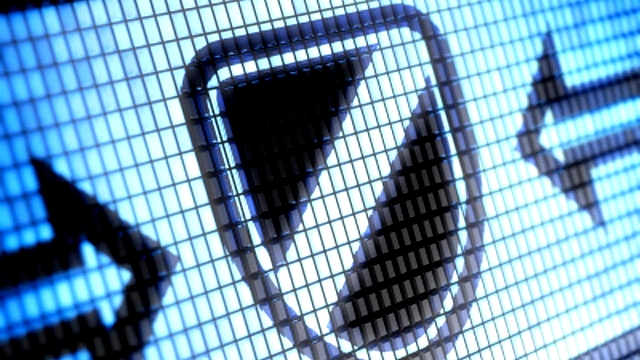
Malware has, of course, been around for ages, predating the web itself by a long mark. Indeed, the first viruses were spotted way back in the early 1970s, on networks such as ARPANET, the forerunner of the Internet.
However, as the worldwide web grew, so did the ability to more effectively spread malware. Then the explosion in social networks led to social engineering, and increasingly more sophisticated scams came about -- for example, targeted spear phishing and ransomware -- leading us to the densely populated malware landscape of today, full of big bad nasties like Cryptolocker.
Cryptolocker was recently the subject of a major warning issued at the start of last week by the National Crime Agency, which cautioned that users have a two-week window to protect themselves from this ransomware and Gameover Zeus. In reality, the way in which the warning was issued was rather clumsy, and what the NCA meant was that they've disrupted the infrastructure of these pieces of malware, so now is a good time to clean up your security act. Although, of course, any time is a good time to adopt best security practices -- and so that's what we're covering here; the basics of staying safe and protecting yourself against any potential malware when you surf the web.
The basics
First off, let's recap the fundamentals. In terms of software, it should go without saying that you need an Internet security suite (or at least a basic antivirus program) on your machine, preferably a good one. That doesn't mean you have to pay, either, as there are some great free efforts -- check out AVG and Avast, to pick two prominent examples. If you want to be even more cautious, it doesn't hurt to have a second line of defense after your main AV package -- we'd recommend you take a look at Threatfire. It won't clash with most common security software, and will provide you with what security pros call a layered defense.
Always keep your software up to date -- all of it. That means your antivirus definitions, your web browser, any plugins like Flash, every piece of software you have including the Windows operating system itself (or whatever OS you use). Security holes are constantly patched across all software, but if you don't have the latest updates, you'll be vulnerable to them.
Then there's what we call the common sense basics. If you see a web address you think sounds a bit dodgy, don't visit it -- even if your friend sent you a link, or posted it on Facebook. You don't know if they actually posted it, or if their account has been hijacked. And even if they did post it, they may be unaware that the site is malware-ridden. In particular look out for links which seem sensationalist, ones that are trying to get users to click ("free iPads and nude pictures of *random supermodel name here*").
Even if you receive an email from what appears to be your bank, Amazon, eBay or whoever, asking you to log in for whatever reason and providing a link to do so -- don't trust that link. Open your browser, and type in the bank's website address yourself. You can do the same thing when you're sent links to amusing YouTube videos by friends -- don't click the link, but go to YouTube directly, copy and paste the video title in to search for it, and watch it that way.
Do not trust links. This piece of advice can probably save your behind more times than anything else.
Finally, if you're visiting a website where you're entering payment information such as your credit card number, always check that it's a secure site -- you can tell because the web address will begin with https:// (note the 's') and there'll be a green padlock icon to the left of the URL bar.
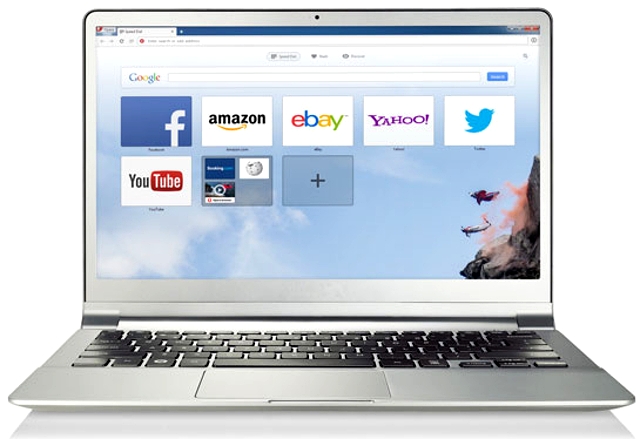
Browser beaten
Another thing you can do to keep yourself safe is to use a less well-known browser, seeing as there are more exploits hidden away in web pages that target the big names such as Internet Explorer, Chrome and Firefox. They have the most users by far, so they obviously represent the most tempting targets. You could try switching to something like Opera or Maxthon, which are both excellent alternative browsers. Of course, we understand that not everyone will want to give up their browser; also, if you do switch, don't start swanning about the web thinking you're invulnerable. All the advice in this article still pertains -- caution first, as always.
Whatever browser you use, one solid defensive measure is to turn off Java. Unless you specifically need it, Java has been the cause of many holes and exploits, and we keep it turned off for the sake of security. Want to know how to rid yourself of it? Then see our guide to disabling Java.
You should also make sure any passwords you use for websites are strong, and also not reused across different sites. The latter's a big no-no as one data breach could mean you lose control of multiple accounts to a hacker. If you have trouble remembering passwords, then get yourself a password manager (we round up the best of them here).
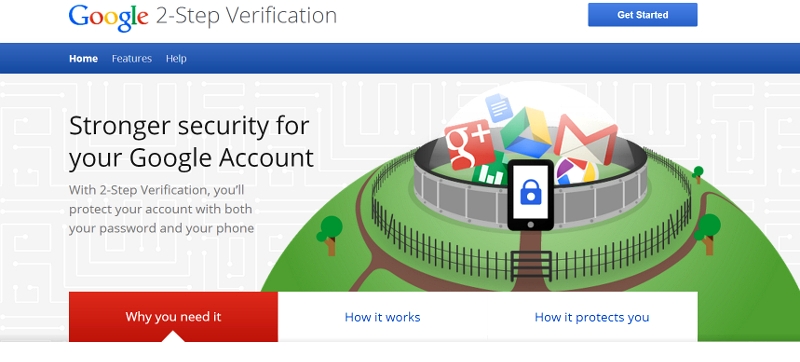
Two factors are better than one
For added security on the most important sites you visit -- usually those involving financial details, like PayPal for example -- it's a very good idea to set up two-factor authentication (which is generally supported by these sort of websites). As the name suggests, this is simply a second line of authentication, so you not only have to enter a password initially, you must also provide a secondary login, which can be a code sent to your phone, or perhaps provided by a dedicated piece of hardware (like a PayPal security key). This means even if an attacker gets your password, they won't be able to login as they won't have this second factor to hand. We've also got a guide on this topic, showing which sites support two-factor authentication, and how to set it up.
If you follow these guidelines, you'll be unlikely to end up one of the unfortunate folks who is compromised by a hacker or scammer on the worldwide web.
Published under license from ITProPortal.com, a Net Communities Ltd Publication. All rights reserved.
-

The apps and accessories you need to get truly productive with your Apple iPad
Publié: juin 8, 2014, 4:02pm CEST par Darren Allan
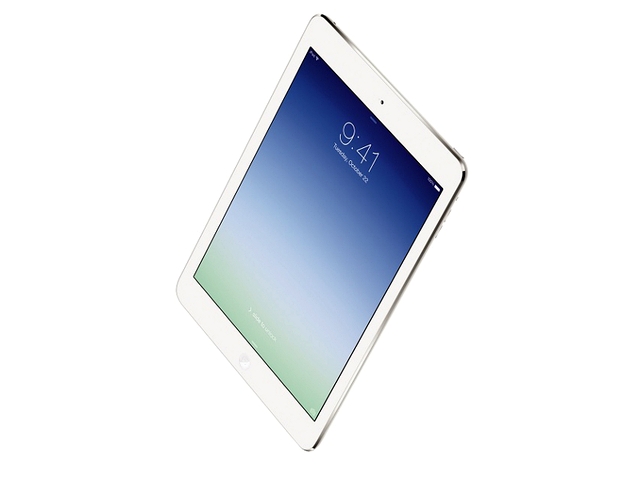
While the iPad is seen as a content consumption rather than a content creation device by some, there's no denying that it has been widely adopted across many organizations, and has made an impact on the business world as well as the consumer arena.
The iPad can be a sterling productivity device -- providing you're well equipped for that prospect in terms of software and hardware, of course. Out of the box, your iPad Air doesn't make such a great partner in crime when it comes to cracking through whatever business needs you might have. So, what software and accessories do you need to be truly productive with your iPad? Read on...
The first and most important thing when it comes to any kind of serious work is that you'll need a keyboard accessory. Yes, that involves a fair outlay of money -- but even Surface owners have to pay for their attachable keyboard. If you're doing any amount of typing, the iPad's virtual on-screen keyboard will not do. So what's the best keyboard accessory for Apple's tablet?
Fortunately, just a few months ago we rounded up the best keyboards for the iPad Air. On balance, we think the best bet for your tablet is the Belkin QODE Ultimate Keyboard Case for iPad Air (pictured below). It's not particularly light, but it's a really well-built accessory that gives your iPad a lot of protection -- and the keyboard itself is top notch. It retails at $129. The Kensington KeyFolio Pro for iPad Air is also a great option at the $80 price point, providing a keyboard similar to a real laptop, and a full-sized number row -- though it's a tad heavier still than the Belkin offering (898g compared to 621g). See our best Apple iPad Air keyboards group test part one and part two for more details on these.
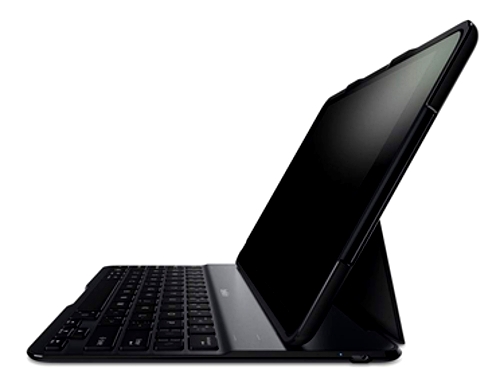
You might want more storage for your iPad, as particularly if you bought a cheaper model, say, the base 16GB device -- that isn't much space to work with. While you can't simply plug an external hard drive into your iPad, some wireless external hard disks support streaming to Apple's slate: For example, the Seagate Wireless Plus, which gives you 1TB of storage for $169. This will allow you to shift large media files off your iPad onto the drive, where you can stream them from when necessary. Of course, depending on your exact space requirements, perhaps a better idea is to spend that money on buying an iPad with a bigger storage capacity in the first place (an extra $200 would snag you a 64GB iPad Air, compared to the cost of the 16GB base model).
Another good hardware addition from a productivity perspective is a stylus, for jotting quick notes, sketching diagrams and the like. We'd go for the Wacom Bamboo Stylus Solo, which is a great stylus and costs just $19.95. The only potential downside is some complaints we've seen about the tip splitting, though you can buy replacement tips at not much more than a quid a pop, so even if that does happen it won't be too traumatic.
Fancy running a second monitor on your desk to help you work more effectively, but don't fancy forking out for another monitor? Then why not use your iPad as a second display -- and here's where we move on to the software side of the equation. For $9.99, you can bag yourself a copy of Air Display 2, an app which makes it possible to extend or mirror your desktop from the monitor to your tablet. In fact, Air Display now supports up to four iPads, should you own multiple tablets. There might be cheaper alternatives, but Air Display is a slick piece of software in terms of ease of use and implementation which makes it worth paying a little cash for.
Of course, in terms of pure productivity apps, the good news is that these days you get iWork free on a new iPad. However, you now also have Microsoft Office on the iPad -- which is a great suite, and has that vital full compatibility with, well, Microsoft Office files. But of course the downside is you need to have an Office 365 subscription to create or edit docs (a rather vital piece of the puzzle), and that'll set you back $9.99 per month (for the standard Office 365 Home, that is). If you're an Office user anyway -- which many business users will be -- then you're laughing. Otherwise, if you didn't get iWork for free, and don't want to stump up for MS Office, then check out the free Quickoffice app from Google as a fallback.
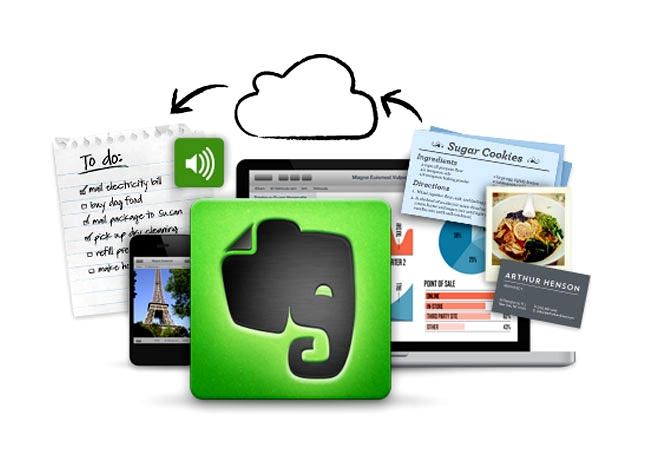
So what other productivity apps are must-haves for the iPad? Evernote (free) is an excellent cross-platform note-taking app that you shouldn't be without (OneNote is also a good option for those who prefer the Microsoft route). Goodreader 4 ($6.99) is a great app which allows you to, well, read anything on your iPad, from PDFs through documents to sprawling manuals or e-mags, and it also provides powerful file management features which are a real boon.
Other apps you should definitely get hold of include Dropbox (free) for cloud storage, and Dragon Dictation (free), which is a sterling dictation assistant from Nuance. Also, there's Google Translate (free) for those business trips abroad, Doodle ($2.99) for easy meeting scheduling, Pocket (free) for bagging online articles you want to peruse later, and Mailbox (free) which helps to tame your email inbox. Get this little lot on your iPad, and you'll become far more productive – and the great thing is, as you'll probably have noticed, most of these are free.
Before we move on, we've one last mention -- OmniFocus is a top notch task management app, but version 2 has only just been released, and the iPad version isn't quite ready yet. Keep an eye out for this one (in this case, it isn't cheap, though; OmniFocus 2 for iPhone is $19.99, but it's worth the outlay).
On a final note, you might have noticed that Apple took the wraps off iOS 8 at WWDC earlier this week -- so what's in the pipeline for business users when the next version of Apple's mobile OS hits the iPad?
Cupertino said that iOS 8 would bring expanded security and device management features on a number of fronts, with an improved level of data protection for key integrated apps. New MDM features will include tools to manage eBooks and PDFs (pushing them to, or pulling them from the workforces' devices), and tools to help IT admins see more details about iOS devices and perform more fine-tuning. Admins will be able to find out, for example, when a device was last backed up to iCloud, and they'll be able to prevent users from wiping their iOS hardware.
Apple is also promising a new interface for remote management that, we quote, "makes enrolling and understanding the impact of MDM easier and more transparent for users". And you can stand by for a new networking framework which allows third-party devs to create content filtering tools. IT departments will also be able to set permissions for which apps can open documents downloaded from enterprise domains.
S/MIME controls will be available on the level of individual messages, so users can encrypt messages that they deem particularly sensitive. Further minor touches include letting the user set their out of office response, and see their colleagues' availability when scheduling a meeting in the Calendar app. Also, call waiting is coming to FaceTime, and Apple is introducing Wi-Fi calling with iOS 8, which could save businesses a pretty penny. Travel time notifications are also going to be present, so that your iPad will be able to prompt you regarding when to leave for that important meeting scheduled in your calendar. And that's just scratching the surface, for the moment -- Apple was far more focused on trumpeting the consumer side of iOS 8 initially, as you'd expect.
Published under license from ITProPortal.com, a Net Communities Ltd Publication. All rights reserved.
-

Samsung needs localized services for its Tizen phone to succeed in emerging markets
Publié: juin 4, 2014, 4:09pm CEST par Darren Allan
 Samsung is the most recognized phone brand in emerging markets (with an 88 percent level of recognition beating out Apple's 85 percent), but if the company wants to succeed in such territories -- which is where the freshly unveiled Tizen-powered Samsung Z is thought to be pitched, following the initial Russian launch -- then it will have to up its game in terms of services and localization.
Samsung is the most recognized phone brand in emerging markets (with an 88 percent level of recognition beating out Apple's 85 percent), but if the company wants to succeed in such territories -- which is where the freshly unveiled Tizen-powered Samsung Z is thought to be pitched, following the initial Russian launch -- then it will have to up its game in terms of services and localization.That's the message from mobile marketing firm Upstream, which conducted a survey (in conjunction with Ovum) of developing markets entitled: The Next Mobile Frontier. The research was carried out across 4,500 consumers drawn from Brazil, China, India, Nigeria and Vietnam.
35 percent of respondents said that mobile content is too expensive to purchase over their phone, and one in five didn't possess the necessary card, credit or debit, to enable purchasing.
One in four said they found it difficult to find the content they want on the app stores available on their phones, and 20 percent said that content they did find wasn't in their local language.
In other words, Samsung -- and other smartphone vendors targeting emerging markets -- needs to ensure its Tizen OS can deliver localized content with appropriate payment mechanics.
As to what apps respondents were most keen on? Social networking was the most wanted type of app, with 82 percent engaging in this arena, followed by 81 percent in terms of music apps, 78 percent for news, and 65 percent for gaming apps.
Health and education apps are also important for emerging markets, with 54 percent saying they would like improved access to healthcare information on their phone in the future, and 44 percent of respondents indicating they'd appreciate better access to education apps.
Marco Veremis, CEO of Upstream, commented: "The launch of Tizen on Samsung handsets provides an exciting proposition for emerging market consumers, where accessibility to truly localized content and appropriate payment mechanics could at last become a reality. As handset manufacturers search for the most effective means of capturing brand loyalty of developing markets, they would do well to seriously assess whether the Western models used to disseminate content and services to consumers equates to fitting a round peg through a square hole".
Veremis further noted: "Samsung may well consider working with mobile network operators, who can provide a new way for emerging market consumers to access and pay for the content they require, using their pre-paid phone credit they on their handset".
Published under license from ITProPortal.com, a Net Communities Ltd Publication. All rights reserved.
-

Acer unveils Build Your Own Cloud (BYOC) Experience Center
Publié: mai 30, 2014, 8:14am CEST par Darren Allan

Acer has opened its BYOC Experience Center in Aspire Park over in Taiwan, a place which is designed to showcase the firm's Build Your Own Cloud ecosystem and its usefulness to both individuals and business organizations.
This is all part of Acer's push into cloud territory, as it looks to diversify away from the PC hardware business which has been hit hard lately by a downturn in demand (as tablets have gathered much momentum).
The BYOC Experience Center is designed to demonstrate how individuals and organizations can use Acer's ecosystem to easily build their own personal clouds, with a range of apps on show in four different zones.
Acer Chairman Stan Shih said: "Based on the Acer Open Platform, BYOC crosses platforms and industries and allies with partners to build new applications for a better quality of life. We are calling for partners to join the BYOC ecosystem to develop new technologies and apps, and in the spirit of Wangdao, create value for our mutual benefits".
Acer is eyeing the expansion of the Internet of Things -- the proliferation of connected devices -- and is developing concept products with various partners, including the likes of apps for connected cars and the smart home. The BYOC center apparently highlights a number of scenarios showing mobile devices being used to remotely control home appliances.
BYOC for the enterprise will also be a major theme, with topics focused on including eAuction services (B2B online auction websites for real-time bidding) and eTicketing.
On the consumer level, Acer has also launched a suite of BYOC apps (abApps) to allow for the use of secure cloud storage lockers synced across Windows, Android and iOS. The first abApps (which are free) will be abFiles, abPhoto, abDoc and abMusic, which -- well, you can probably guess what they pertain to.
Published under license from ITProPortal.com, a Net Communities Ltd Publication. All rights reserved.
-

How to customize your Windows 8.1 Desktop
Publié: mai 28, 2014, 5:24pm CEST par Darren Allan
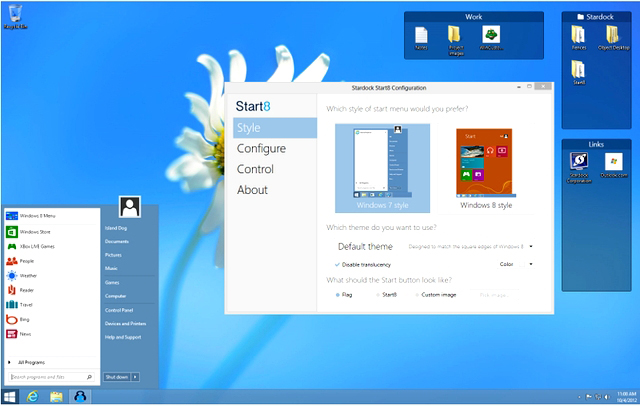
So you've decided to take the plunge with Windows 8.1 (following the changes with the latest update, maybe), and you want to know how to jazz up the old desktop? You know, the mouse-and-keyboard (non-Metro/new-style) bit of the OS where most of us still live. Or indeed, maybe you've had Windows 8 for ages, and just haven't been bothered to do anything when it comes to tinkering in Desktop mode. Well, read on, because in this article we're going to show you the basics of customizing the desktop.
Okay, so if you've done nothing with the place, the first thing you want to do is ditch that yellow wallpaper (it's almost as passé as an avocado bathroom suite). Right click on the desktop, select Personalize, and click on Desktop Background at the bottom of the window which pops up. You can then select an image from the set pics on offer, or click Browse to select a folder where one of your own preferred images resides. Note that you can hold the Ctrl key down and select multiple images for a desktop slideshow -- at the bottom, under "Change picture every", you can use the drop-down menu to specify a time interval in which a new image will be brought to the fore. Click the Save Changes button when you're done.
Also note that there are a couple of default themes you can choose from in the Personalization window, as well, and you can grab more by clicking "Get more themes online" (top right). This is actually worth a look because there are some pretty smart themes you can download here, featuring some quite striking photos -- have a browse.
While you're kicking about in the Personalization window, also bear in mind that you can click "Change desktop icons" (top left) to add back icons you might miss. (Those of you finally making the leap from Windows XP following the cessation of support for the old OS may wonder where My Computer went -- well it's now called This PC, and you can bring it back to the desktop with a tick in the Computer box here).
Heading to the taskbar, you can customize this with toolbars. Right click the taskbar, and mouse over toolbars at the top to see a menu pop out to the side -- simply select the toolbar you want from there and it will appear on the taskbar for quick access. The Desktop toolbar provides you with a shortcut to every icon or folder on your desktop, and the Address toolbar provides you with a mini URL window to type web addresses in to go straight to them. You can create a custom toolbar, as well, by selecting New Toolbar, and then browsing to any folder -- this will then give you a pop-up list of links for everything in said folder (including files nested within sub-folders). All very convenient.

Still on the theme of toolbars, when you've got a folder open on the desktop, you can customize the icons available on the Quick Access Toolbar (which is at the very top left of the folder's window -- see the image above). If you click on the little down arrow, a menu pops up, and you can select any item you wish to appear on the toolbar (for example, undo or delete).
Wondering where your Libraries have gone in File Explorer under Windows 8.1? They're still there, just hidden by default, for some reason. To reveal them, go to File Explorer (from a right click of the Start button), select the View tab, then Options at the far right along the top menu, followed by Change Folder and Search Options. Then under Navigation Pane, click Show Libraries (see below).
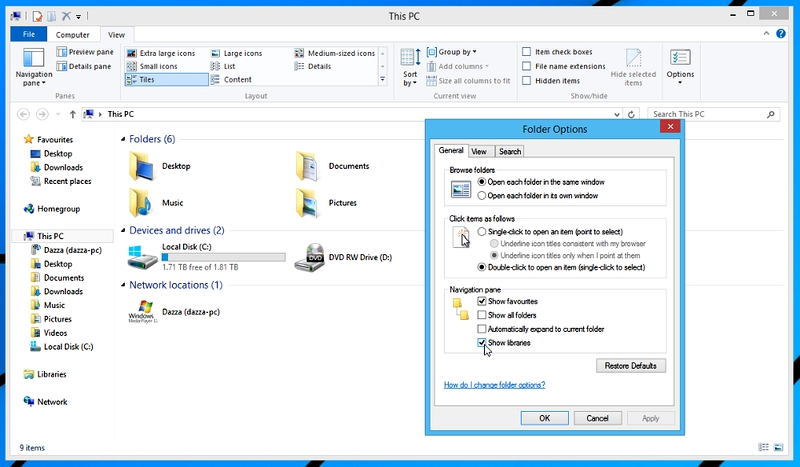
So, those are some handy basics to be getting on with, but if you'd like to get into a bit more depth with your desktop customization, then there are some great utilities out there. At the risk of sounding like an advert for Stardock, the firm really does make some sterling Windows 8 products -- we'll pick out a pair of them here, followed by another pair of non-Stardock tools.
Firstly, there's Stardock's Fences (now on version 2.11), which is a must for those who like to keep a neat and tidy desktop. It allows you to create fenced-off sections of your desktop for a better organized world, and these trays can be easily repositioned or hidden. If you've got a busy desktop, it's a superb way to tame it – Fences will set you back $10 (£6), but there's a free trial available to test it out. Stardock also makes Start8, which brings the traditional Start menu back to Windows 8 (it's $5 or £3, but if you'd rather not pay, there are lots of great free alternatives to be found here).
Also be sure to check out Winstep Nexus, a free tool which adds a really smart dock to your desktop, and it boasts oodles of customization options. Finally, if you want to really get into tinkering and making your own Windows widgets (or 'skins' as the program calls them), check out the open source customization toolkit Rainmeter -- it may take some getting your head around initially, but it's worth persevering. (There are some handy tips here, and also check out the manual to get you started).
Published under license from ITProPortal.com, a Net Communities Ltd Publication. All rights reserved.
-

PlayStation 4 to follow Xbox One into China
Publié: mai 27, 2014, 8:41am CEST par Darren Allan
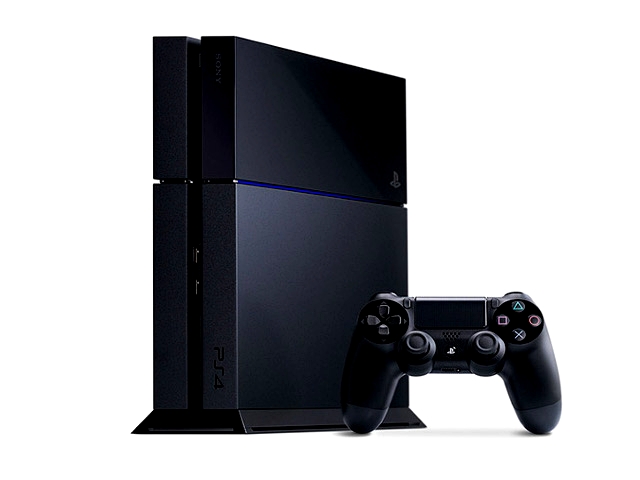
Sony's PlayStation 4 console might be leading in the sales war against the Xbox One, but the PS4 isn't resting on its laurels, with Sony having announced plans to enter the Chinese market.
According to a Bloomberg Businessweek report, Sony will make and sell the PS4 in China, forming two joint ventures with Shanghai Oriental Pearl (Group) Co. in which Sony will own a 70 percent stake in one venture, and a 49 percent stake in the other.
The move follows Microsoft's similar announcement at the end of last month, with Redmond set to push the Xbox One into the Chinese market come September, in partnership with BesTV New Media Co (a subsidiary of Shanghai Media Group).
As we noted at the time, it was a major move for Microsoft in order to try and sell more consoles to catch the PS4 -- and we expected Sony to follow suit swiftly, attempting to maintain its sales lead (in April, the company announced it had sold some 7 million PS4s). So this move is hardly surprising.
Back at the start of the year, China lifted a ban on foreign game consoles which had been imposed since the turn of the millennium (the country's government had asserted that such consoles could negatively affect the mental and physical health of youngsters, and therefore they weren't welcome).
So while gaming is popular in China, it's mostly a PC and smartphone-centric affair, which will leave Microsoft and Sony with their work cut out to establish market share. There is undoubtedly a potentially very lucrative untapped market here, though.
While Sony may be enjoying a rich vein of success with the PS4, on an overall level the company is still very much struggling -- so it needs the console to forge ahead and make the absolute most of its advantage.
Microsoft is not standing still, either, with the recent announcement that it would decouple Kinect and the Xbox One, to allow for the console to be sold on its own, at a lower price to sell more units.
Published under license from ITProPortal.com, a Net Communities Ltd Publication. All rights reserved.
-

eBay initially believed no user data had been compromised in breach
Publié: mai 26, 2014, 2:07pm CEST par Darren Allan
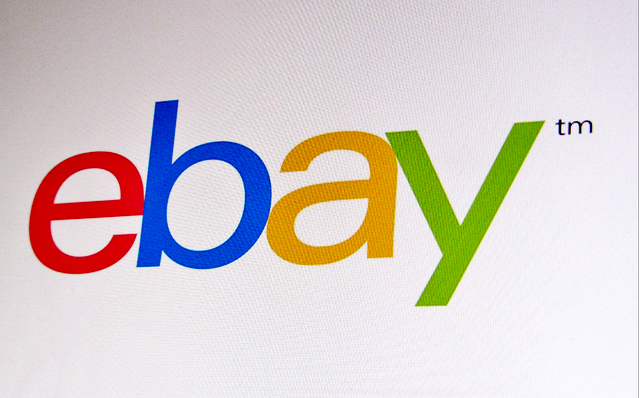
This week saw a huge eBay security compromise, which opened up user details on a major scale -- but when the issue first came to light, the company didn't think any user data was involved.
You can't have missed the story of this breach -- and the ensuing fracas in which eBay was roundly criticized for its lackadaisical response this week. With passwords involved in the compromise, eBay's push for users to change their passwords was woefully sluggish -- failing to get even a prominent warning up on the site itself until the day after the breach was officially admitted (at least going by GMT; see our closer look at how badly eBay handled its database breach). And indeed there was no forced reset of user passwords.
When the story broke, it may have caught your eye that while the breach happened back in February or March, eBay didn't discover it until a fortnight previous to admitting it had taken place -- so what, you might ask, was eBay doing during those two weeks?
Well, the auction site may have found the breach two weeks ago (just over that now), but when first discovered they didn't believe that any user data had been compromised by the intruders (who accessed eBay's network using employee login credentials they'd managed to get hold of).
A Reuters report notes that when forensic investigators started their examination of the incident, they thought customer data was safe. Devin Wenig, global marketplaces chief at eBay, told Reuters: "For a very long period of time we did not believe that there was any eBay customer data compromised".
And apparently it was only very recently that the involvement of customer details was discovered, as eBay says it moved "swiftly" (as you would hope) when the truth of the matter became clear. Wenig wouldn't disclose exactly when eBay found out that user data had been spilled.
Wenig also said that millions of eBay users have now reset their passwords -- though there will be many millions more that need to do so (eBay has an active user base of some 145 million according to the latest figures).
As for possible compensation for this faux pas -- eBay has no plans for that, Wenig said, due to the fact that no financial fraud has been spotted relating to the data leak.
What about the fact that postal addresses, phone numbers and dates of birth -- and other important data which can't be changed like a password -- are now out there in the wild, ready for identity thieves to potentially get their mitts on? The problem is that going forward, it will be impossible to determine exactly what financial fraud could be committed off the back of this data spillage...
Published under license from ITProPortal.com, a Net Communities Ltd Publication. All rights reserved.
-

Apps can boost workforce productivity by a third
Publié: mai 26, 2014, 10:43am CEST par Darren Allan
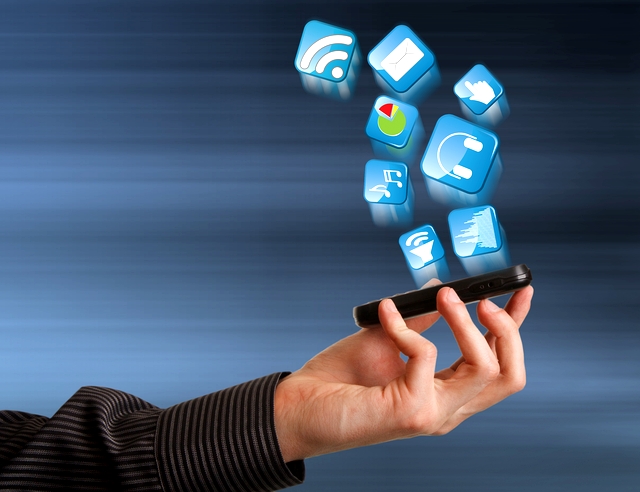
A new piece of research from Salesforce.com claims that apps boost worker productivity levels considerably.
In fact, app usage apparently boosts productivity by some 34 percent, according to the study which interviewed 470 staff members across small and large businesses in the UK.
60 percent of British workers now use mobile apps during the course of their job, and 21 percent use dedicated apps tailored to their department. Of those that use department-specific apps, 60 percent of respondents said they'd witnessed an increase in their productivity thanks to the software.
The vast majority of those questioned -- 90 percent -- felt that using apps had altered their behavior as a business professional, presumably for the better.
The main bone of contention regarding apps in the workplace, at least according to this survey, was that the majority (59 percent) also felt that their employer had been too sluggish in adopting apps within the workplace.
Miguel Milano, president of Salesforce.com EMEA, commented: "Apps give employees real-time access to business-critical information no matter where they are, making them more productive and effective".
He further noted: "The European Commission announced in March that the European app industry will be worth €63 billion by 2018, an opportunity for Britain to grab".
Published under license from ITProPortal.com, a Net Communities Ltd Publication. All rights reserved.
-

Tips and tricks for looking after your PC
Publié: mai 24, 2014, 1:17am CEST par Darren Allan
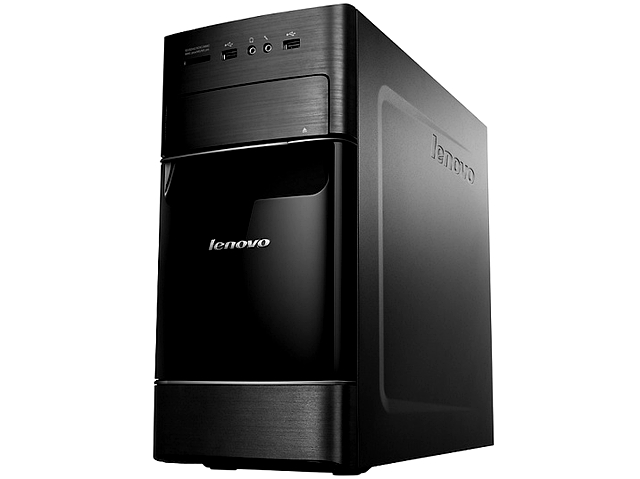
A PC is a major expense -- even a cheaper one is a few hundred dollars, and if you want, it's possible to spend thousands on a machine. The good news is that these days, PCs are lasting longer than ever. Whereas in the past, your machine might have been feeling outdated within a few years, these days a good PC can last for ages before the hardware inside starts to be underpowered. That said, the longevity of your machine does of course depend on how well you look after it. A poorly cared for machine can easily end up coming to a premature end. So with that in mind, we're going to look at how to care for your PC and ensure that it lasts for all those years of computing it should do.
To begin with, we're going to discuss issues you should consider from a longevity perspective before you buy a PC -- in case you're mulling a purchase in the near future, there are some important points to bear in mind.
Firstly, the power supply (or PSU) is a critical component of your machine -- but one that is often overlooked by many. We often talk about a CPU 'driving' or 'powering' your machine, but of course, what's really supplying the power -- to every single component on board -- is the PSU. Do not scrimp here and buy the cheapest bog standard power supply you can -- because these bargain basement PSUs are often unreliable. They stand a much greater chance of flaking out than a quality PSU -- and if a power supply does go kaput, it can also potentially fry your motherboard, and maybe even other components. Which is why if you want to have the best chance of a long lasting machine -- do not skimp on the PSU. Don't let your power supply be a disaster waiting to happen.
Stock systems from big PC vendors may not let you customize the PSU, of course -- but at least look into the model on board. And if you have a choice, spend the money. Get a quality brand such as Corsair, XFX, Antec or Seasonic. Steer clear of the likes of SuperPower Watt Monster 1000 and its dodgy sounding ilk. (Note that if you already own a PC with a no-brand iffy sounding PSU, remember you can always upgrade it).
Also, if you're building or customizing your own system, ensure that the PSU will be able to cover your PC's needs in terms of wattage -- use a power supply calculator to check (here's Coolermaster's effort). And leave plenty of headroom; make sure you exceed the recommendations comfortably.
Speaking of Coolermaster, be mindful when it comes to picking a case, too. Don't buy a $50 tin box with no ventilation whatsoever if you can possibly help it -- heat problems are another big enemy in terms of a PC's longevity. If your components are constantly running hot, they won't last nearly as long.
Power is also an issue when it comes to things like power cuts or storms, which can cause voltage spikes that could damage your machine. As insurance against this, you should invest in a surge protector plug or power strip (be wary of cheap ones that call themselves surge protected, but actually aren't). Some folks even invest in a UPS (uninterruptible power supply) but obviously that's a more expensive option.
Maintenance is another important point to consider when it comes to making your PC last. You've probably noticed that even after just a few months, a new PC will already have begun to gather a thin layer of dust on its internal components. After some time, this can build into small dust bunnies -- and eventually perhaps dust hippos -- that smother your boards, clog fans, and bring on the prospect of heat failure, and again a potentially premature death for components (not to mention possible lock-ups for your machine).

You need to regularly clean the insides of your PC to keep it dust free, once every few months -- otherwise it might end up looking like the above machine. Use canned air (switch off and unplug your PC first, of course) to clean dust out from vents, the inside of the case, and components. Be careful with fans, though -- forcing them to spin by blasting them with air can damage them, so hold the fan in place so it doesn't move while being cleaned. It's also worth getting a cover for your PC to keep dust from accumulating when you're not using it.
Another consideration, heat-wise, is where your PC lives. Don't position it so that vents are blocked against the side of a desk or other obstruction -- make sure all vents are clear. Try to avoid placing it directly on a carpet (it's likely that there are vents on the bottom of your machine, too, and being sat on a carpet won't help on the dust front, either; or in terms of potential static electricity dangers). And don't place your PC where it's in the sun or, God forbid, next to a radiator or other heat source. A cool running PC will be a long running PC.
Incidentally, if you have the PC on your desk, be wary of keeping drinks near it (or on it) in case you spill them.
An SSD upgrade from a traditional hard drive is also worth mulling over. While the data on relative reliability is a little muddy depending on who you listen to, a Computerworld article from late last year observed SSD failure rates under warranty to be 1.5 percent, with traditional spinning hard disks at 5 percent.
Aside from physical considerations, it also helps to keep your OS clean to ensure your PC doesn't clog up over time on the software front. Make sure you defrag your hard disk reasonably regularly (Windows 8 does this for you, if you're on the latest version of Microsoft's OS), and use disk cleaning utilities (Windows has these, and indeed CCleaner is a neat little program in this respect). Make sure you uninstall software you aren't using any longer, as well. If your hard drive is running very short on space, your machine will certainly start running like a dog. For more detail on OS maintenance, see: How to perform a DIY tune up of your PC.
With just a little bit of luck -- because that always plays a part in component failure, too -- a well-cared for machine will easily last for five years of trouble-free running, and quite possibly much longer.
Published under license from ITProPortal.com, a Net Communities Ltd Publication. All rights reserved.
Image Credit: Zerologic (Neowin.net)
-

Moto 360 smartwatch set to retail at $249
Publié: mai 23, 2014, 12:20pm CEST par Darren Allan
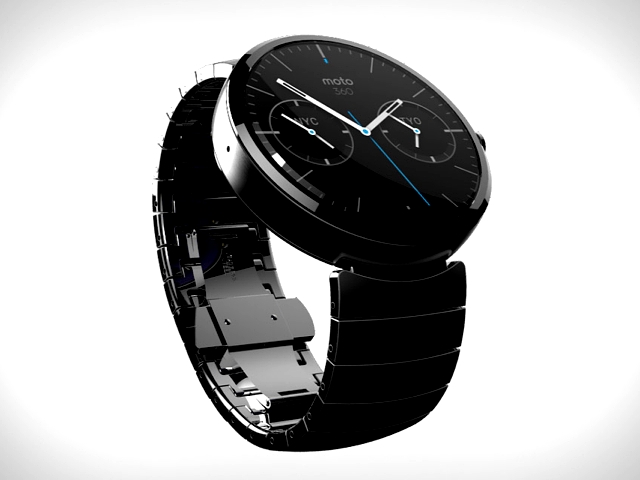
Motorola has accidentally let slip the price of its Moto 360, and it's pretty much in line with what we were expecting.
Phone Arena spotted that the asking price of the smartwatch was spilled when the company posted about a competition it was running to allow folks the chance to win the Moto 360, and in the T&Cs blurb, the device was mentioned as having a retail value of $249 (£148).
That certainly sounds about right, and this is a pretty tempting sounding price point – while it's not cheap, we knew it wouldn't be, and the Moto 360 is a premium looking affair. In our humble opinion, it's the first really good looking smartwatch which stands a chance of actually capturing some mass market share due to its appealing aesthetics. Motorola may have beaten Apple to the punch here, as there's still no sign of the iWatch.
While, as we've noted, the price translates to around £150 in the UK, of course this won't be the case when the Moto 360 launches. It'll probably have a price in pounds very close to, or even equivalent to the US tag. That'll mean it isn't quite such good value that side of the pond, but it'll still stand up well against the Gear 2, which is pitched up towards the £300 mark at online retailers currently.
There's also the Android Wear rival, the LG G Watch to consider, though that doesn't quite hold the same appeal for us, not looking nearly as stylish as the Motorola effort.
Published under license from ITProPortal.com, a Net Communities Ltd Publication. All rights reserved.
-

Could Google Glass be bad for your eyes?
Publié: mai 22, 2014, 2:20pm CEST par Darren Allan
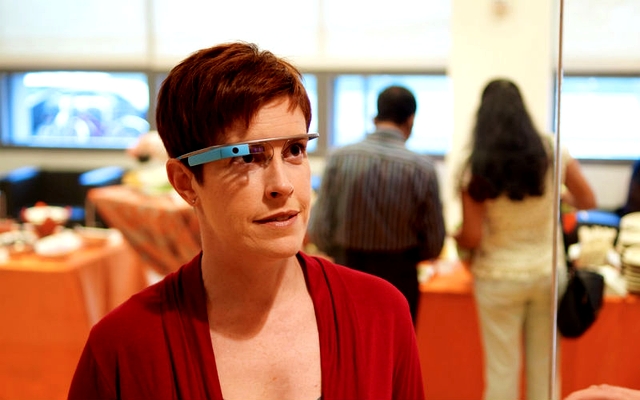
The latest controversy surrounding Google Glass is the fact that the device is reportedly causing eye strain and headaches.
There have been a number of reports of problems on Twitter, and BetaBeat detailed their own experiences of two writers who had sharp pains after ten minutes of Glass usage -- pains that disappeared after taking the device off.
BetaBeat actually got to speak with Dr Eli Peli, the Harvard optometrist Google brought on board to consult on eye health with Glass, who admitted that there were issues with the fact that people aren't used to looking up, as it were. Most of us look straight ahead or downwards, and rarely upwards -- but of course, the position of the Glass screen in the upper-right of the eye-line makes you do just that.
The problem is that Glass is designed for very quick usage -- short glances at pieces of info; bursts of activity. It's not designed to be gawked at continuously. However, when you first get Glass, you're obviously using it a lot -- it's your new toy -- and staring at it for lengthy periods, which could cause discomfort in the eye.
Peli told BetaBeat: "It's not a headache, it's sort of a discomfort in the eye muscles. To describe it as a headache is inconsistent with how people experience headaches".
It would seem, though, that the discomfort and/or pains only affect certain people, which makes sense. Some folks are fine watching 3D movies, others find the glasses make them feel horribly ill; it varies according to the individual.
If you do use Glass, however, the message is clear: It's meant for glancing, not gawking, so make sure you're sensible with the length of time you're staring at that display. Of course, that's good advice in general, in terms of the world not turning into a place populated with Glass-y eyed zombies staring off (and slightly upwards) into space.
Glass is expected to launch officially before the end of the year (in the US, anyway), although there's a danger Samsung might beat Google to the eyewear punch with Gear Glass.
Published under license from ITProPortal.com, a Net Communities Ltd Publication. All rights reserved.
-

Many security experts do not encrypt storage devices
Publié: mai 21, 2014, 6:53pm CEST par Darren Allan
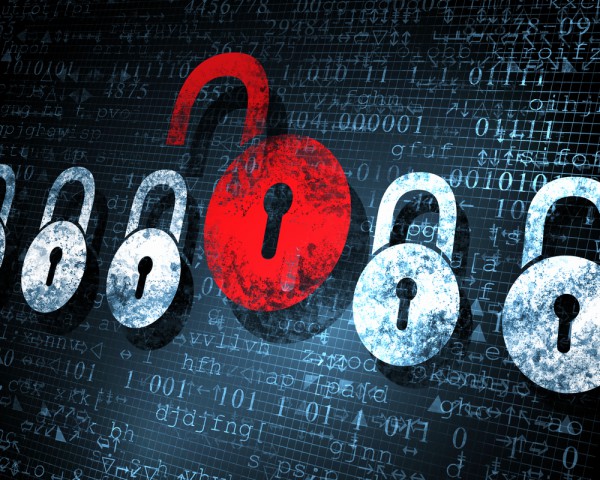
New research has found that half of security professionals don't bother to secure data on portable devices.
The findings, uncovered by an iStorage survey which questioned 500 attendees at Infosec 2014, revealed that 50 per cent of security pros don't bother with security measures or encryption when it comes to data on USB sticks or portable hard drives.
91 per cent of respondents, though, said they were concerned about the damage that a data spillage could cause to their organization -- but evidently not concerned enough to actually go to any lengths in terms of protection, in many cases.
Two-thirds were aware that a careless data breach (from, say, dropping and losing a USB stick in public) could potentially face a heavy fine of up to £500,000 delivered by the ICO. Of course, you'd hope everyone would be aware of these fines -- and they were, it's just that a third thought the maximum possible fine was less than half a million (most of those wrong about the amount believed it was £250,000).
Lost portable devices are the third most prevalent cause of data breaches, according to a recent UK-wide survey iStorage pointed to. And there is, of course, no excuse for not encrypting data when it leaves the office -- particularly if it's even remotely sensitive data.
John Michael, CEO and Founder of iStorage, called the results of the survey "deeply concerning", and added: "Data loss can have a sizeable negative impact on business productivity, reputation and future revenue. To ensure critical business data remains confidential, it is imperative that businesses take the necessary precautions to guarantee data does not end up in the wrong hands".
Published under license from ITProPortal.com, a Net Communities Ltd Publication. All rights reserved.
Image Credit: Sergey Nivens / Shutterstock
-

In the Xbox One and Kinect divorce, everyone stands to lose something
Publié: mai 19, 2014, 8:27am CEST par Darren Allan
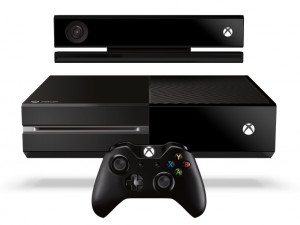
As you probably noticed, earlier this week Microsoft announced that the Xbox One would be made available without Kinect, instead of forcing the motion sensor on consumers as a compulsory part of the Xbox package. This was a move analysts predicted would happen next year, but it's happening now.
So yes, cue much cheering and cries of "finally" and general applause for a victory for consumer choice. And yes, this is a good thing in terms of consumer choice -- no one would doubt that. But amidst all the buzz, fireworks and party poppers going off, many folks seem to have overlooked the fact that there are downsides to this move. And it's these negative aspects I'm going to look at here.
First off, let's deal with the notion that Microsoft is stepping up for consumer choice -- the line Redmond's PR hawks have spun out. Microsoft is stepping up for no one but Microsoft's bean counters -- evidently the sales figures lagging behind the PS4 has now got to a worrying enough stage where more drastic action has to be taken. Hence the Kinect unbundling to allow a cheaper price point to better compete (more on that point shortly).
Microsoft tried to force the Kinect on everyone by default, decided this policy isn't going to fly after all, and has now U-turned (once again). That's the second negative: Early adopters of the console -- the most loyal fans, the biggest core followers of Xbox -- they didn't get any choice bestowed upon them, and may rightly feel aggrieved.
Particularly considering downside number three -- namely, that the unique selling point of the Xbox One has now evaporated, and the initial vision of the console has been watered down. The media-focused alternative to the PlayStation 4 angle is weakened, a point of differentiation which is something of a shame to lose. Now the consoles are even more similar, save for exclusive games and some extra graphical horsepower for the PS4. Moreover, this isn't just a media issue. In terms of gaming, the fact that every Xbox One came with Kinect meant that down the line, developers of big name games might have chucked in some cool extra voice or motion-based features which helped bring a game to life. You know, neat touches like hand gestures to control AI soldiers in your squad, and many other innovative voice/motion extras which creative devs could potentially have dreamed up. Also, what about the biometric side of Kinect, the heart rate estimation gubbins -- maybe that could have spiced up horror games, for example...
I expected to see some smart new spins on the Kinect as a supplementary controller to the Xbox gamepad, but of course now -- well, not everyone will have a Kinect. So just as was the case with the Xbox 360, in general developers won't bother with it -- whereas they may well have done with a 100 percent Kinect-equipped user base.
Another issue is the price decrease here in the UK. In the US, looking at the pricing on Amazon, the Xbox One with Kinect is currently (as I write) $490, with the new Kinect-less Xbox (released on 9 June) weighing in at $399 for pre-orders. That's almost a full $100 less -- a real saving. In the UK, the Xbox One with Kinect is currently £379 on Amazon, and the new Kinect-less Xbox is priced at £349 (to sit equal with the PS4). That's a whopping £30 less. What's wrong with this picture, folks?
Okay, so £349 for the Kinect-less Xbox One is the recommended price, and come launch (or just after), Amazon may dip that down further -- but in all honesty, I can't see it going down that much. (Equally, it may well dip in the States, too). I've a feeling it might even stick at that level. And if it drops to, say, £329, you're still only gaining £50 from losing Kinect -- which is certainly more worthwhile but still not exactly the Earth (I paid £120 for my original Kinect with the Xbox 360, back in the heady early days of motion control).
Don't get me wrong, I'm not saying that the obvious positives -- the consumer choice, and ability to make some savings (an appreciable amount, let's hope) -- don't outweigh the negatives. Just that there are negatives, particularly when you look at the relative pricing in the UK as it stands right now. And I've one final downside to leave you with -- Microsoft crying wolf:
The Kinect is a fundamental part of the platform! And always will be!
The Kinect is an integral part of Xbox One!
Kinect? Yeah we're making that optional.
When it comes to the next-gen Xbox, Redmond might find a lot more people not believing in its vision; in the way it lays things out for the platform. It might find a lot of folks standing on the sidelines and not committing at launch, waiting for all the aspects they're not sure about to inevitably bend with the winds of the sales figures.
Published under license from ITProPortal.com, a Net Communities Ltd Publication. All rights reserved.
-

Google already receiving 'right to be forgotten' link removal requests
Publié: mai 16, 2014, 10:27am CEST par Darren Allan

A ruling by the EU Court of Justice earlier this week has caused considerable controversy, and that's likely to be fueled by the news of the people who have tried to jump on the "right to be forgotten" bandwagon following the judgment.
This whole affair began when a Spanish man noticed that Google search results of his name brought up newspaper articles about the repossession of his house due to debts back in the nineties. He argued that this was old news now, and "irrelevant", and that Google should remove those links from being publicly viewable in its results because they were effectively an infringement of his privacy rights. The EU court agreed.
And now, immediately after the ruling, folks are coming forward to try and get links to what they consider outdated material concerning themselves removed from Google results -- but the nature of these people is bound to cause further controversy.
One is a man convicted of possessing images of child abuse, who wants links to pages that detail his conviction removed, according to the BBC -- and another a politician who's standing for re-election, and wants articles about his (presumably dodgy) behavior when he was last in office to be "forgotten". The BBC also mentions a doctor who has had negative reviews from patients, and wants those to be stripped from Google results.
And those are just the requests we know about, of course. There are bound to be many more.
Google is currently said to be investigating the implications of this EU ruling which it called "disappointing".
It has previously argued that this sort of thing represents censorship of the Internet, a point which the founder of Wikipedia, Jimmy Wales, certainly agrees with.
Wales called the judgement "astonishing" and said it was "one of the most wide-sweeping Internet censorship rulings that I've ever seen". Wales expects the ruling won't stand for long, and with this sort of fuel to the fire, we're betting he's right.
Published under license from ITProPortal.com, a Net Communities Ltd Publication. All rights reserved.
-

Google Glass now on sale in the US
Publié: mai 15, 2014, 11:25am CEST par Darren Allan
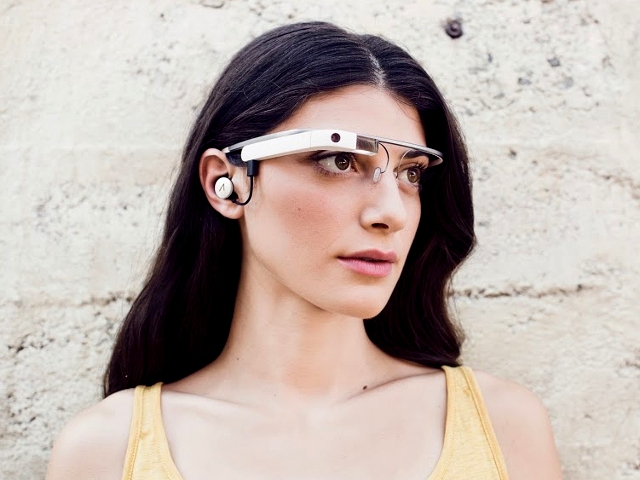
Google Glass has gone on widespread sale over in the States again, although only richer gadget fans will want to get a piece of the action, as the device is still priced at $1,500 which represents quite a premium.
In mid-April, Google made Glass available to anyone, but just for a one day sale -- and by all accounts units sold out swiftly.
Now Google says it's moving to an open beta with the hardware, whereby it will be on sale as long as the company has stock to hand.
Google stated: "We learned a lot when we opened our site a few weeks ago, so we've decided to move to a more open beta. We're still in the Explorer Program while we continue to improve our hardware and software, but starting today anyone in the US can buy the Glass Explorer Edition, as long as we have it on hand".
You can sign up for the program here, if you live in the US -- those outside the States are still out of luck, of course. On that subject, Lisa Wray, an Android dev at Google, said: "To everyone outside the US... we know. Sorry :( We're just not ready yet to bring Glass to other countries".
She also mentioned that the number of spots will be limited for joining today in the US, so presumably the hardware is going to sell out pretty swiftly again -- but stock should be replenished before too long, at least going by what Google says on its Google+ account for Google Glass.
Google Glass has long been controversial, with many incidents having occurred such as people being assaulted for wearing one, and the specs provoke a general atmosphere of paranoia from some, which Google has tried to counter with things like a list of Google Glass myths.
The big G is also trying to overcome the fashion flak it has received over the device, which isn't something most people would proudly wear -- hence the deal with the maker of Ray-Ban and Oakley sunglasses to develop a trendier, more acceptable design. Though a more disguised and normal looking pair of glasses could provoke even more suspicion from folks if they suspect they might be being secretly recorded (at least with the current iteration, you can't miss the fact that someone is wearing Google Glass).
All this is heading towards a rumored release at the end of this year, at least in the US, anyway; who knows when Glass will grace the UK.
Published under license from ITProPortal.com, a Net Communities Ltd Publication. All rights reserved.
-

No KitKat for Samsung Galaxy S3 owners in the UK
Publié: mai 13, 2014, 11:34am CEST par Darren Allan
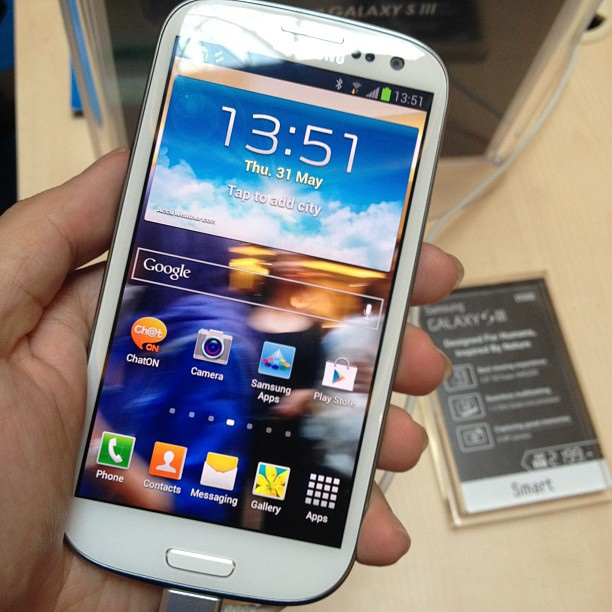
We've got some disappointing news for those S3 owners who've been holding out with their fingers crossed for an update to Android 4.4, as KitKat is simply not going to happen on the international version of the Galaxy S3 (and the S3 Mini).
Previous rumours had indicated that UK owners of the S3 were going to get KitKat, speculation which was underlined by the fact that over in the US, the upgrade has been confirmed and is indeed about to roll out.
However, there's an unfortunate difference between the US and international S3, namely the amount of RAM on board, and this is the crucial sticking point. The US version has an ample 2GB, but the international edition has half of that.
Now, 1GB should still be enough to run KitKat smoothly -- after all, Android 4.4 is where Google took strides to make its mobile OS less demanding of phone hardware. But of course the problem isn't just running KitKat -- the S3 also has to cope with Samsung's overlaid TouchWiz interface, and that's the straw which breaks the proverbial camel's back. Apparently Samsung can't get that combination running smoothly enough on the international S3.
This news came from Sam Mobile, which received an official statement from Samsung to say: "As a result of the Galaxy S3 and S3 mini 3G versions' hardware limitation, they cannot effectively support the platform upgrade while continuing to provide the best consumer experience. Samsung has decided not to roll-out the KitKat upgrade to Galaxy S3 and S3 mini 3G versions, and the KitKat upgrade will be available to the Galaxy S3 LTE version as the device's 2GB RAM is enough to support the platform upgrade”.
And that's the one positive piece of news here -- if you've got an LTE version of the S3 with 2GB of RAM, then you will get Android 4.4. Otherwise, if you want KitKat, then you'll need to consider an upgrade to the S5.
Published under license from ITProPortal.com, a Net Communities Ltd Publication. All rights reserved.
-

Big data is a big opportunity, but current IT thinking needs to change
Publié: mai 9, 2014, 8:32pm CEST par Darren Allan

Hitachi Data Systems has just revealed the results of its "Information Innovation Index," which is a study that aimed to measure how businesses are able to tap into and make good use of big data. And the short answer is that many feel they're not making best use of the swathes of data they're sat on.
The study was conducted by Vanson Bourne across 200 Chief Information Officers and IT decision makers in the UK, and almost half (46 percent) of respondents felt that their current IT setup was hindering their ability to effectively crunch big data for valuable insights.
90 percent agreed that the traditional approach to storing and managing data is a hindrance in terms of gaining insights when sifting big data, at least to some extent.
Furthermore, almost two-thirds of respondents (63 percent) who felt that their current IT processes were unable to effectively support their firm's growth ambitions said the main reason for this was due to data being stored over disparate systems and formats, which made it a harder task to extract value from said information. As a result, the survey found that 73 percent of UK business are failing to actively mine useful data resources they're sat on -- and 60 percent don't have any inclination to even try to do so.
The research also highlighted a lack of understanding when it comes to big data. Of the aforementioned two-thirds of respondents who felt IT could not support growth ambitions, a quarter cited one reason for this as being the fact that CIOs simply don't understand how to extract value from their data. Also, two-thirds weren't confident that managers have the requisite know-how to act on any insights which are eked out.
Almost everyone questioned -- an overwhelming 96 percent -- said that they believed their company was "drowning" in data.
So, what's Hitachi's message from all this? That big data is a big opportunity, and to fully realize the benefits, current IT thinking needs to change -- businesses should refocus their approach to IT with big data in mind, rather than just carrying on regardless.
Richard Gadd, regional VP and general manager of Hitachi Data Systems (UK & Ireland), said: "Information can be a transformative force in business if decision-makers are able to shape what it does. By realigning the relationship between business management and IT, and tapping into the vast troves of company intelligence, organizations can quickly accelerate beyond their nearest competitors".
He added: "Organizations that view IT holistically can enable greater productivity, drive new revenue opportunities, and unleash growth potential".
Published under license from ITProPortal.com, a Net Communities Ltd Publication. All rights reserved.
-

Samsung design chief replaced following Galaxy S5 disappointment
Publié: mai 9, 2014, 12:25pm CEST par Darren Allan
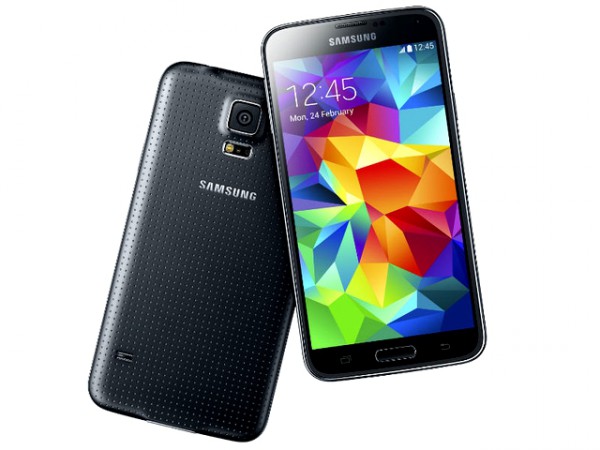
Samsung has a new man in charge of its mobile design team, following criticism of its new Galaxy S5 flagship smartphone.
Chang Dong-hoon will be replaced by Lee Min-hyouk, who was the vice president for mobile design, Reuters reports. Samsung didn't have any comment to make about the move, though apparently Chang Dong-hoon offered to resign himself last week (likely under pressure by the sound of things).
The Galaxy S5 has copped some flak for once again going with a plastic chassis -- which has always been the case with the Galaxy S series, but this time around, there were rumors Samsung would finally go for a more premium finish. That didn't happen, of course, and there are still people who believe that the plastic body isn't becoming for a costly, high-end smartphone (we singled it out as one of two major downsides in our review).
Perhaps the design of the fingerprint sensor has contributed to this move, too, as some folks have also found this a little finicky compared to Apple's effort on its iPhone 5S flagship. None of this seems to have hurt sales, though, and on an overall level the S5 has been very well received by critics.
Whatever the case, the next Galaxy S flagship will have a new guy at the design helm, and it will be interesting to see what happens with the handset. Will we finally get a metal finish on the Galaxy S6?
Lee Min-hyouk, who became Samsung's youngest senior exec a few years back, is known as "Midas" because he has a golden touch with the Galaxy S series. As for Chang Dong-hoon, he will still work at the company, and will continue to lead Samsung's design centre which directs overall design strategy.
Published under license from ITProPortal.com, a Net Communities Ltd Publication. All rights reserved.
-

Microsoft working on a smartwatch according to new patent
Publié: mai 8, 2014, 8:48am CEST par Darren Allan
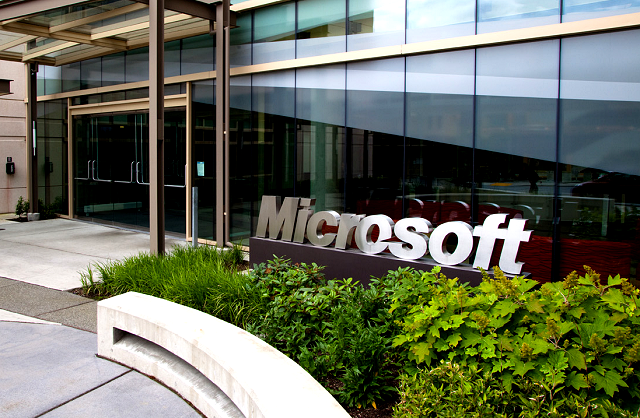
Apple's iWatch is becoming more strongly rumored as the months pass, but Microsoft could also enter the smartwatch arena -- we've previously heard plenty of speculation on this front, and now a patent for such a watch has been spotted.
The watch has fitness and health capabilities -- heart rate monitoring and all the usual gubbins such as calories burned -- and there's a twist to the design whereby the watch body can be detached from the strap, and then used with other hardware. For example, it could be docked with other fitness-related devices to share data.
Patent Bolt, which spotted the patent, notes that a separate docking station could be produced by Redmond, which the user will be able to mount the detached watch body in to charge it, and possibly for use as an alarm clock. Magnets will apparently be used to make sure any connections are secure.
The patent also shows that aside from fitness, Microsoft's device could boast a music player, messaging service and possibly some form of phone capability (along with the aforementioned alarm clock functionality).
As to whether this device will ever manifest itself, that's a guessing game at this point. However, if Microsoft isn't far down the road with it, and Redmond's effort arrives after the rumored iWatch -- the iPad and Surface scenario springs immediately to mind.
Also, the key to a smartwatch in terms of gaining mass market appeal is to achieve a stylish design, and move away from the somewhat chunky and geeky look of the likes of Samsung's Gear range. And who would you trust to produce a stylish, desirable gadget -- Apple or Microsoft?
Published under license from ITProPortal.com, a Net Communities Ltd Publication. All rights reserved.
-

iPhone users are the biggest sexters
Publié: mai 6, 2014, 9:06am CEST par Darren Allan
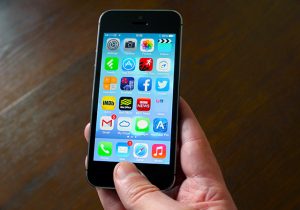 If you own an iPhone, you're more likely to be sending risqué messages to your significant other -- or at least that's the finding of a new survey.
If you own an iPhone, you're more likely to be sending risqué messages to your significant other -- or at least that's the finding of a new survey.The poll, conducted by YouGov and commissioned by insurance2go.co.uk, found that a third of iPhone owners -- over 30 percent -- had sent a rude text to their partner (or indeed, to someone else instead of their partner for one of those truly foot-in-mouth moments).
That was markedly more than the amount that those using other handsets had sexted, with those on BlackBerry devices (there are still some of them out there) having the second highest percentage of rude message senders with 21 percent. 17 percent of folks using Samsung devices admitted to sexting (of course, the numbers are likely a fair bit higher than those who actually admitted to doing so -- but that will be true across the board).
19 percent of respondents said they had sent a sext (or worse still a naughty pic) to the wrong person, and of those, one in twenty had accidentally sent their mother-in-law said message for the ultimate in embarrassment.
According to Sky News, Duncan Spencer, the MD of insurance2go.co.uk, commented: "It does seem that iPhone owners are certainly a little more risqué when it comes to their mobile communications".
"The moral of the story is that if you are going to send cheeky messages, check before you sext, otherwise you might find your private photo going viral. There are some things that can never be unseen".
Wise words indeed -- as we all know, these days, everything lives forever on the Internet.
Published under license from ITProPortal.com, a Net Communities Ltd Publication. All rights reserved.
-

Productivity in the workplace could get a boost from wearable technology
Publié: mai 2, 2014, 6:50pm CEST par Darren Allan
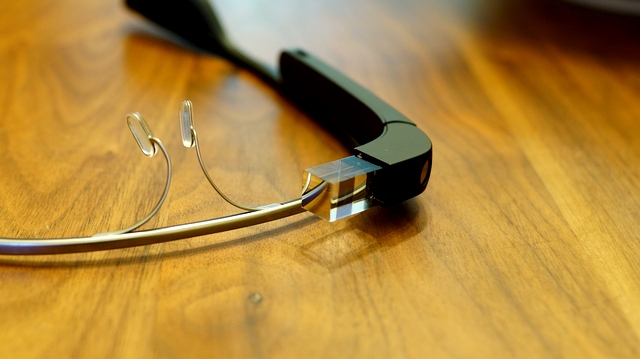
Rackspace has revealed the results of research into how wearables will fit into the workplace, and what impact these devices will have -- and the news is largely positive.
The Human Cloud at Work study, headed up by Dr Chris Brauer of the Institute of Management Studies from Goldsmiths, University of London, found that productivity was boosted by 8.5 percent through the use of wearable devices. That data was determined by evaluation over a month long period, against a control group which saw no increase in productivity levels.
It wasn't just more work that was getting done via wearable tech, either, with a rise of 3.5 percent in job satisfaction also observed.
In addition to that academic study, further conclusions were drawn from research conducted by Vanson Bourne, which encompassed 300 IT decision makers, and found that businesses had a clear willingness to push wearable tech in the workplace.
Wearables were welcomed by staff, with incidents of employee resistance only raised by 5 percent of personnel. The real concerns were, of course, the impact on security -- which 59 percent were worried about -- and also the strain placed on IT bods in terms of coping with wearables on the company network, which 52 percent were concerned over.
29 percent of UK firms, and no less than 63 percent of businesses in the States have some form of wearable tech project underway, according to the Vanson Bourne research.
Dr Brauer commented: "These results show the potential power and application of wearable devices in the workplace from employee biometric CVs to organizational real-time executive dashboards for resource allocation."
"Wearable technologies are arguably the biggest trend since tablet computing, so it's natural that employees and businesses will look to use these devices in the workplace. Using data generated from the devices, organizations can learn how human behaviors impact productivity, performance, well-being, and job satisfaction. Employees can demand work environments and hours be optimized to maximize their productivity and health and well-being".
Nigel Beighton, CTO of Rackspace in the UK, also chipped in: "Many wearable technologies are focused on improving some aspect of an individual's life -- whether it is for health and fitness, focus and concentration, productivity or job satisfaction".
"The big step change for both individuals and businesses is being able to analyze the raw data and understand the wider context surrounding the data, such as the weather, location, posture, even temperature and mood of the individual. By focusing on the data as well as the devices, wearable technologies can provide meaningful insights that can be used to improve performance and satisfaction. Essentially wearable tech and big data go hand-in-hand".
Published under license from ITProPortal.com, a Net Communities Ltd Publication. All rights reserved.